Prepare to learn more about plants than you ever wanted to know!
I chose to make today the botanical gardens day because the forecast was sunny – it might be unpleasant to walk around gardens when it’s hot, but it’s even more unpleasant when it’s both hot and raining.
This is the entrance:
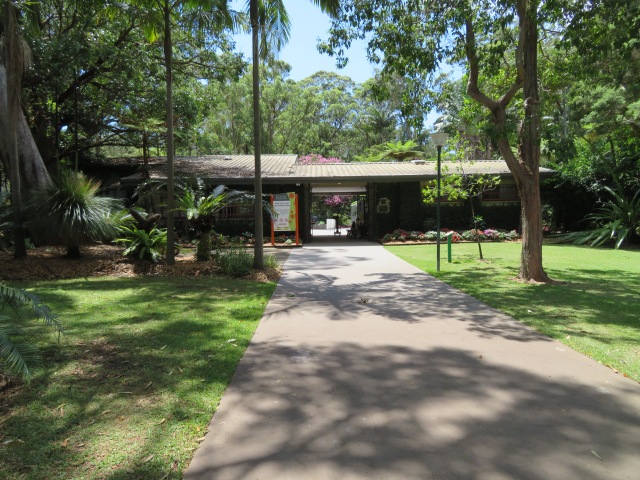
You can tell it’s the botanic gardens – even the car park looks nice:
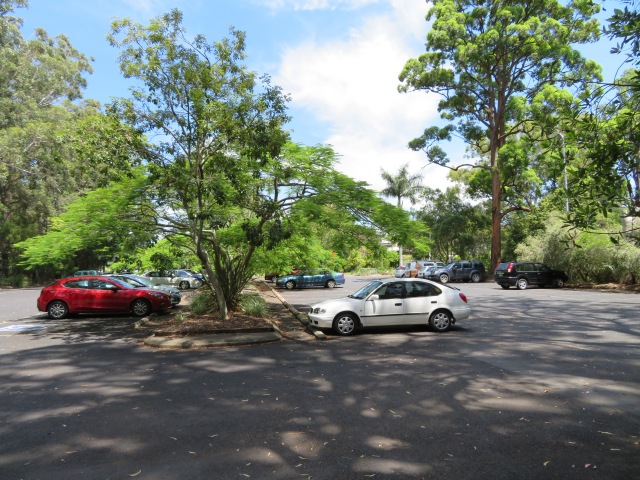
There were some noisy minahs feeding on the bottlebrush in the car park, so I took some video:
Part of the gardens includes the historic cemetery – I found it beside the car park:
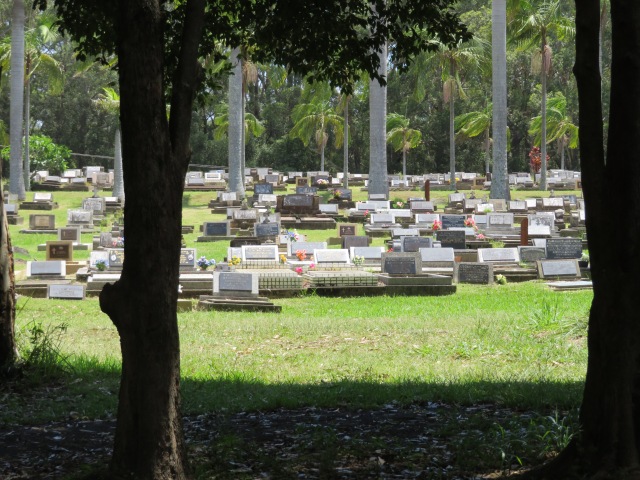
Past the entrance, there was a little fountain:
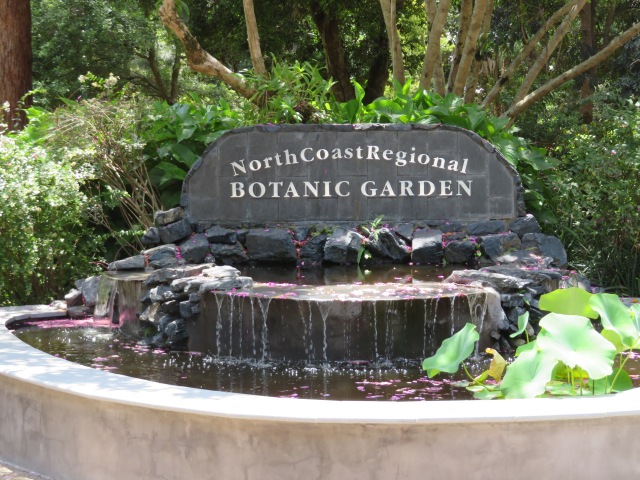
There was a stack of laminated maps beside the entrance as well, and I took one.
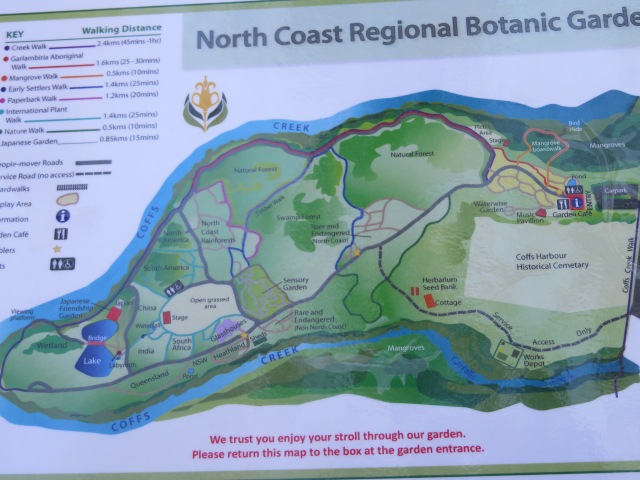
As you can see, I needed it. The gardens are over twenty hectares, and there’s quite a lot to see. I mostly concentrated on the rare and endangered, but they’ll come up towards the end.
And the gardens weren’t nearly as hot as I thought they’d be – they’re situated on the river, so they get a constant breeze up from the coast. If leaves are blurred in the upcoming deluge of tree-pics, that’s why.
These are the interesting-looking plants I found near the entrance. First, a straw tree fern, Cyathea cooperi:
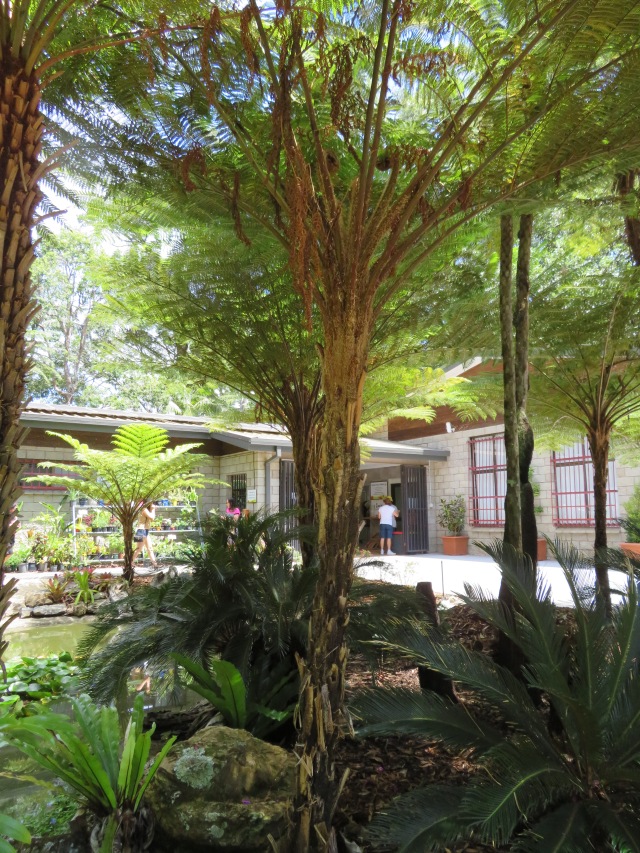
A rough tree fern, Cyathea australis:
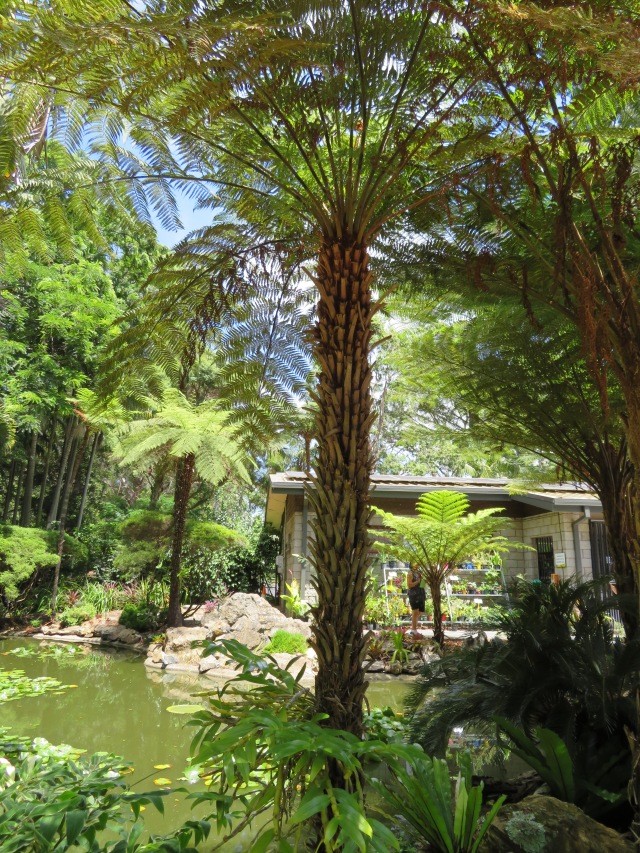
If you’re wondering how I can give you both the scientific and common names, that’s because they were helpfully labelled, and I took pictures of the signs.
I took this path deeper into the gardens:
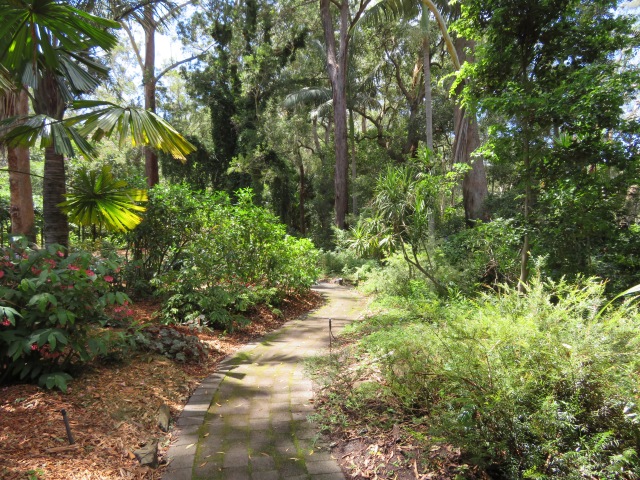
And this is the path that,as the map told me, led to the mangrove boardwalk:
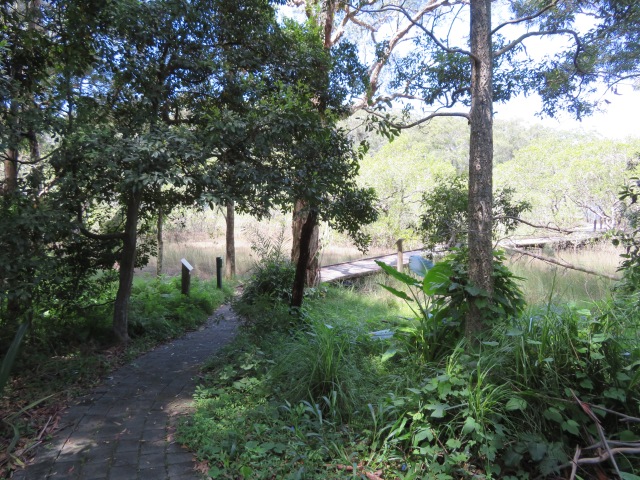
I also found this plant growing wild (or at least, without a helpful sign near it):
They had a lot of special walks, and most of them had information leaflets at the start. I thought it was very helpful – these are the leaflets for the mangrove walk:
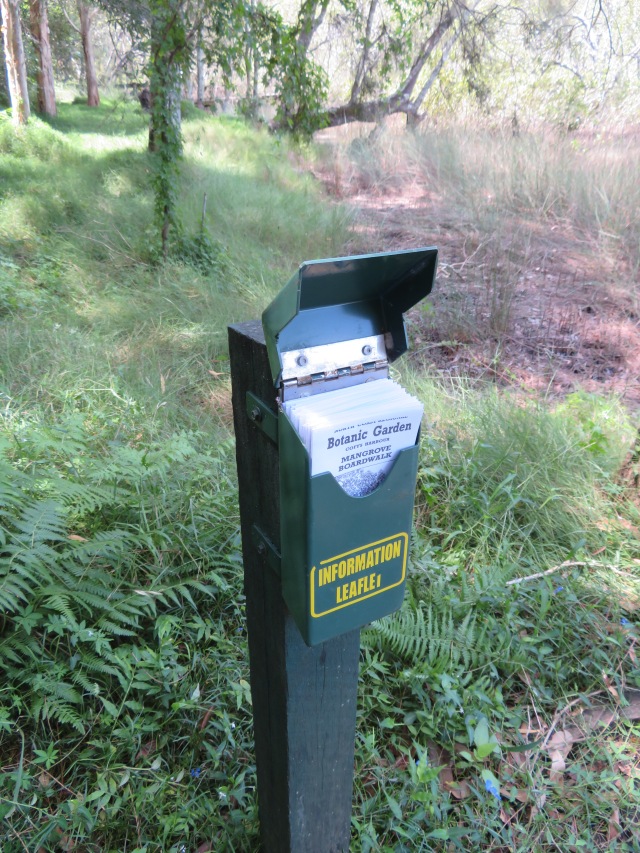
The mangroves themselves:
According to the informative signs, there are 30 species of mangrove representing 15 different plant families, but only two species are native to the gardens – the river mangrove and the grey mangrove.
In the second picture, you can see the pneumatophores that the grey mangroves put out – those little roots that stick up above the water. They basically act like snorkels, taking in and storing air so that the roots can breathe even when they’re covered by water. They also make walking through mangroves an exercise in pain and frustration unless you’ve got really awesome boots.
I also learned that mangrove fruit actually germinates on the tree – because the fruit floats, it has to be able to anchor itself very quickly as soon as it finds a good spot, otherwise the next high tide will carry it away again. This means that technically mangroves are considered viviparous – they produce live young.
A dragonfly on one of the pneumatophores:
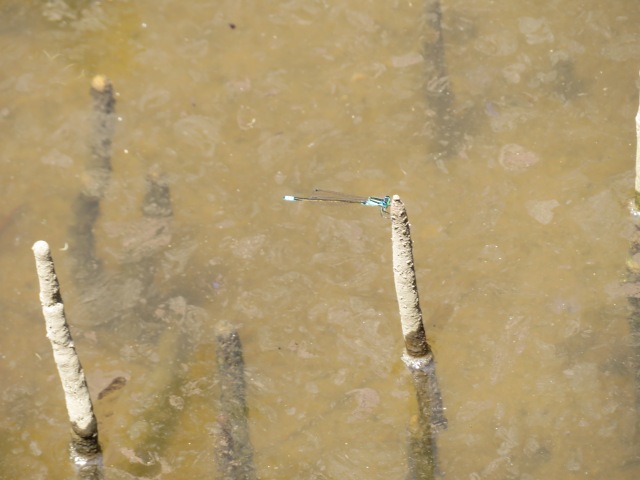
There were a lot of insects in the mangroves – have a listen:
Of course, there might be frog sounds in there, too – it’s not like I would know. The path branched at one point, leading to a bird-hide:
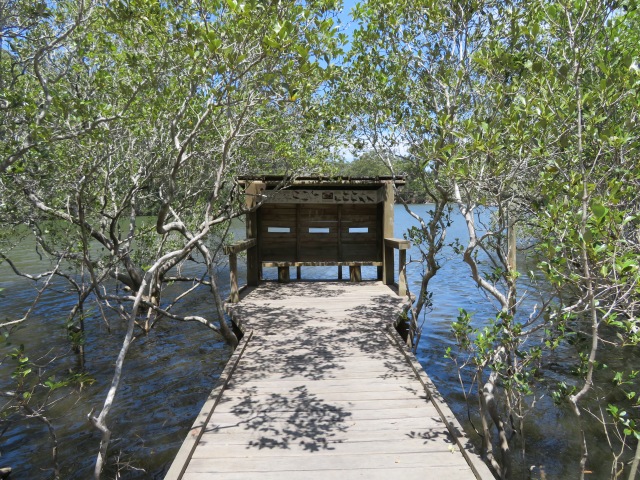
I sat down there for several minutes, peering out through the middle slit, but I didn’t see anything. So, I had a drink from my water bottle and continued on my way.
I saw a lot of little fish darting among the mangroves, but there’s no pictures or videos – they were too quick. I would see them, and then they’d be gone before I could even lift the camera.
Eventually, I got off the boardwalk and hit the path again:
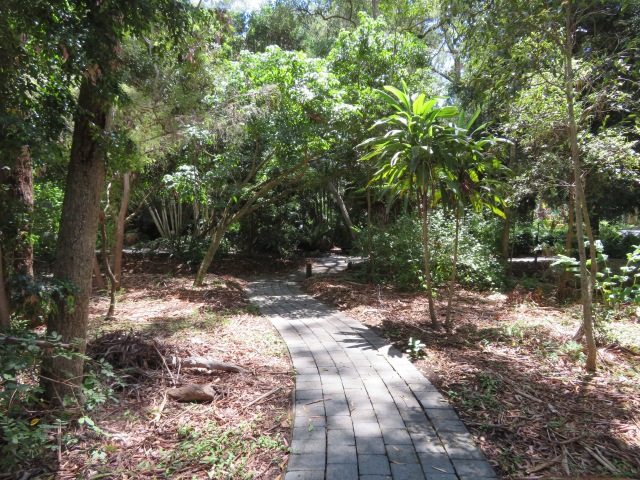
Which led me to the picnic area:
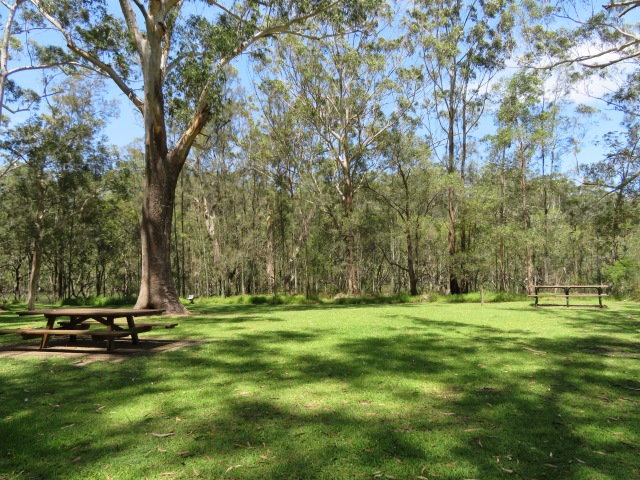
Now, I took a lot of pictures of flora I thought looked interesting or had interesting names. Mostly the latter, because I’ve never really been a plant person, and let me tell you, Australia takes the prize for the weirdest names. There were sections of exotic plants as well, but you’ll mainly find the natives here, just because of the names. I’m not sure if it’s just because there were more native plants, so there were obscure ones alongside the more well-known ones, but let’s start with the first one:
Blackbutt (I’m not joking in the slightest), Eucalyptus pilularis:
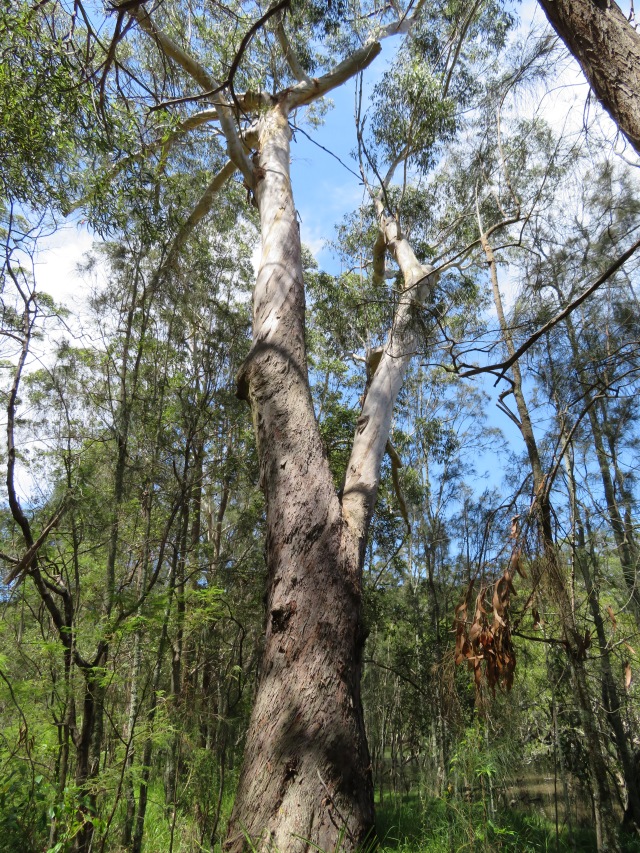
Blackbutt is a half bark tree, with rough bark covering the trunk from the base to about the mid-point, from then on it has smooth bark. I took a photo of the transition area:
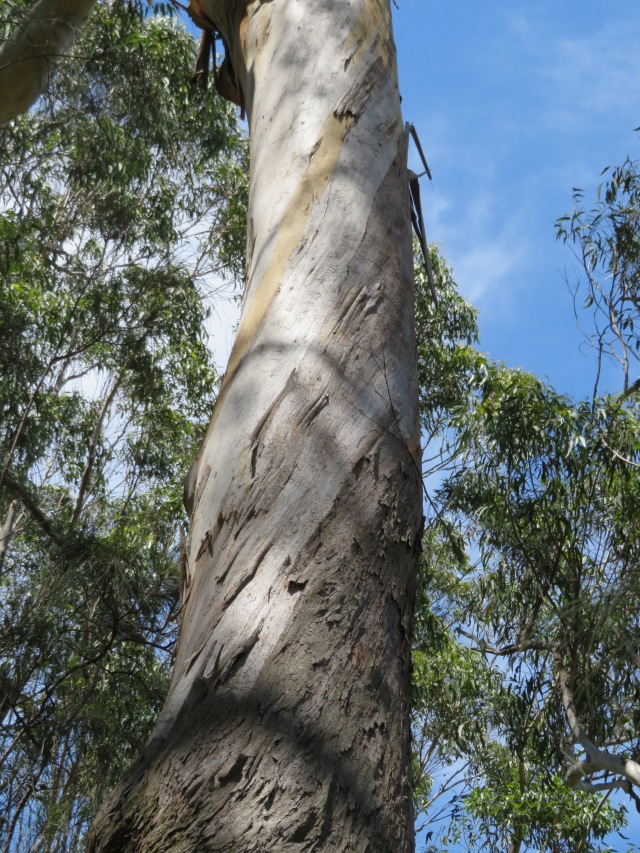
After a fire, the rough bark will remain black for years afterwards, which is where the name comes from. These trees form hollows that are used by birds and possums, but only after the tree is a hundred years old. Yes, that’s right – a hundred years. When people talk about certain species of birds being endangered in Australia, often a contributing factor is the lack of old trees with hollows for them to raise young in.
Swamp oak:
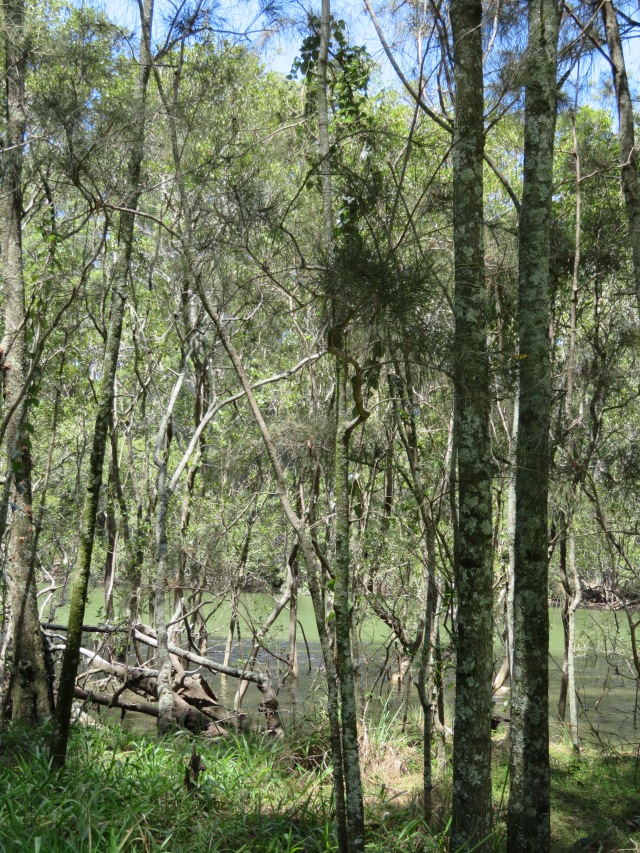
The seeds of these trees are often eaten by black cockatoos.
Paperbark:
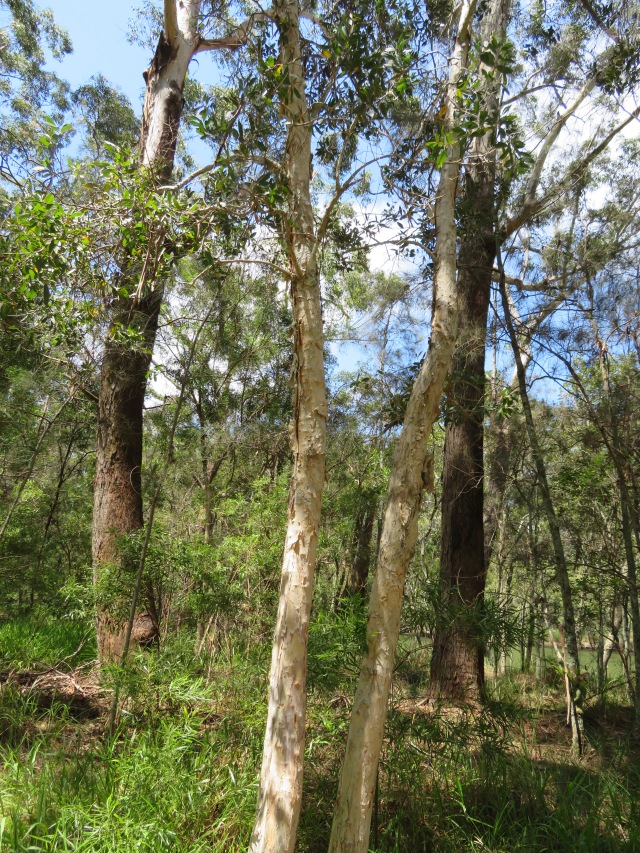
Because it’s a classic.
Smooth barked apple, Angophora costata:
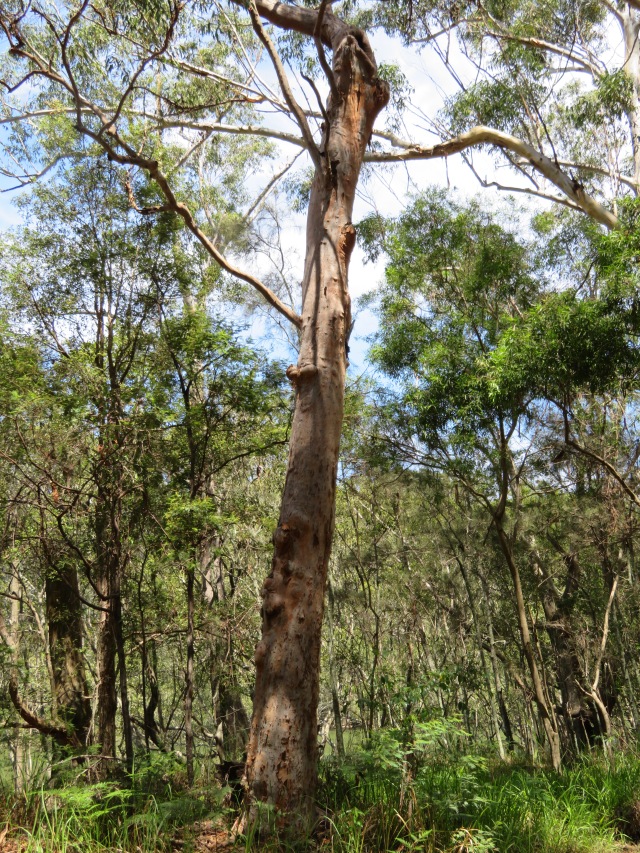
Those knobbly bits? That’s where branches broke off and the bark healed over – basically the tree equivalent of scar tissue. They retain fresh water, so the Aboriginal people would tap them in the dry season for the water.
A close-up:
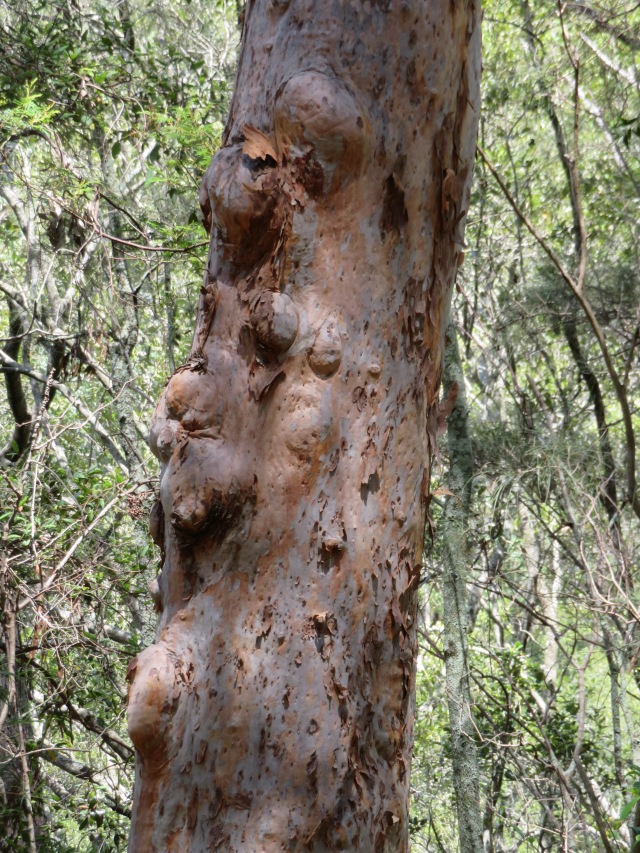
No real reason for this picture, no label or anything, but…look at it:
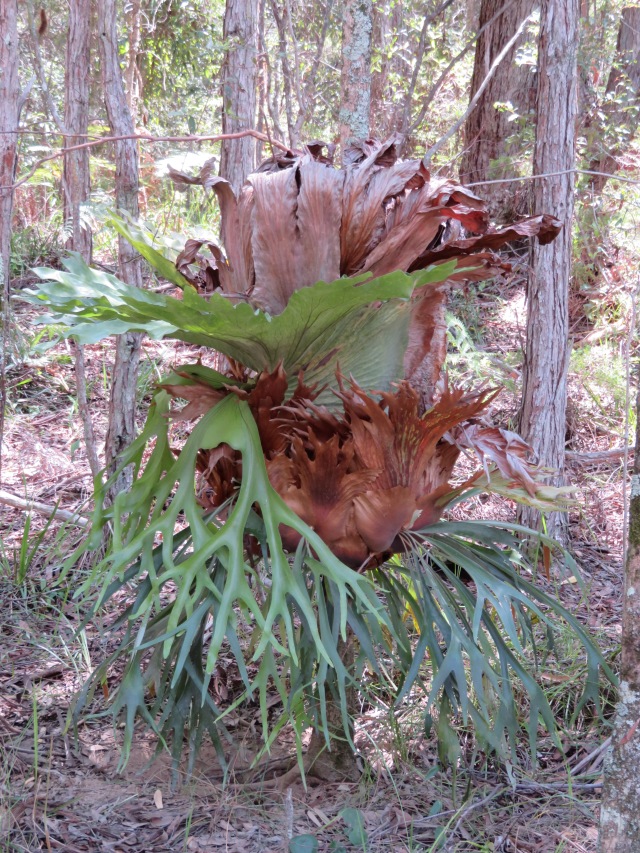
Yes, they really were attached to that tiny tree, and only a little way off the ground.
The path I was walking was called the Creek Path, and it bordered the section of the botanic gardens that was natural forest:
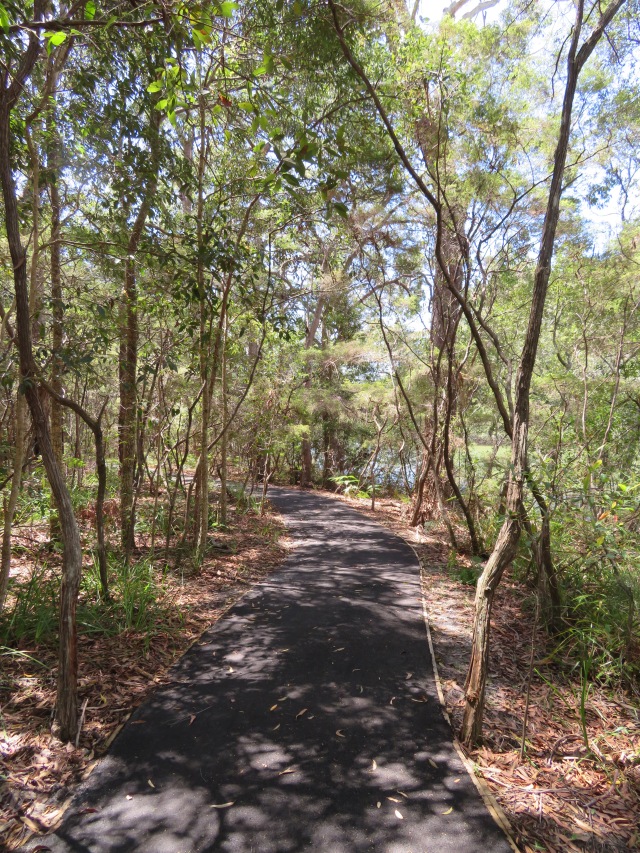
It was also right next to the water, hence the name:
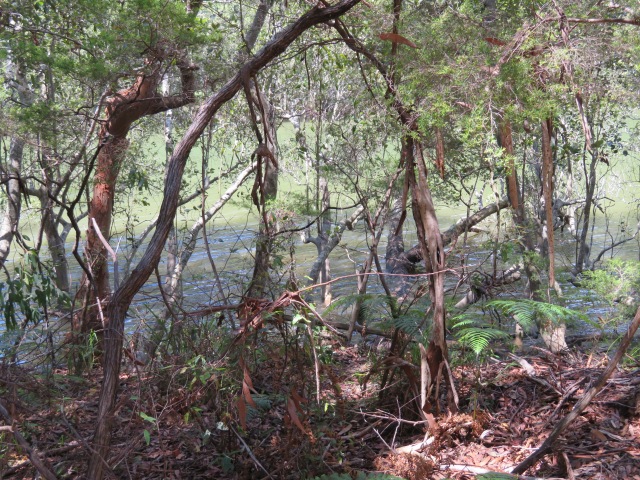
I saw this beside the path:
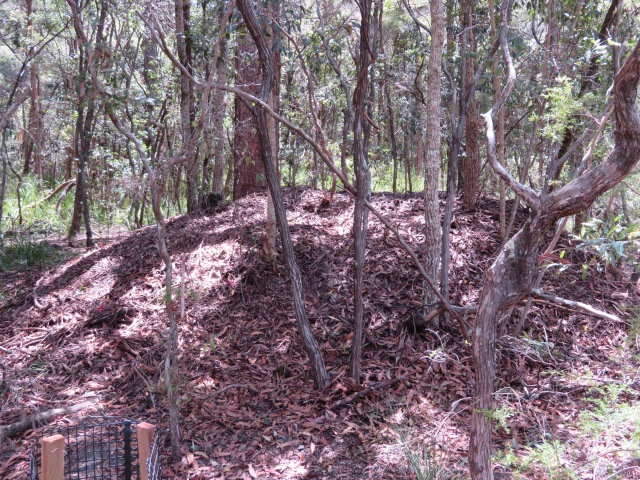
That’s either where the workers put the excess leaf litter, or a brush turkey lives around there.
Swamp water fern, Blechnum indicum:
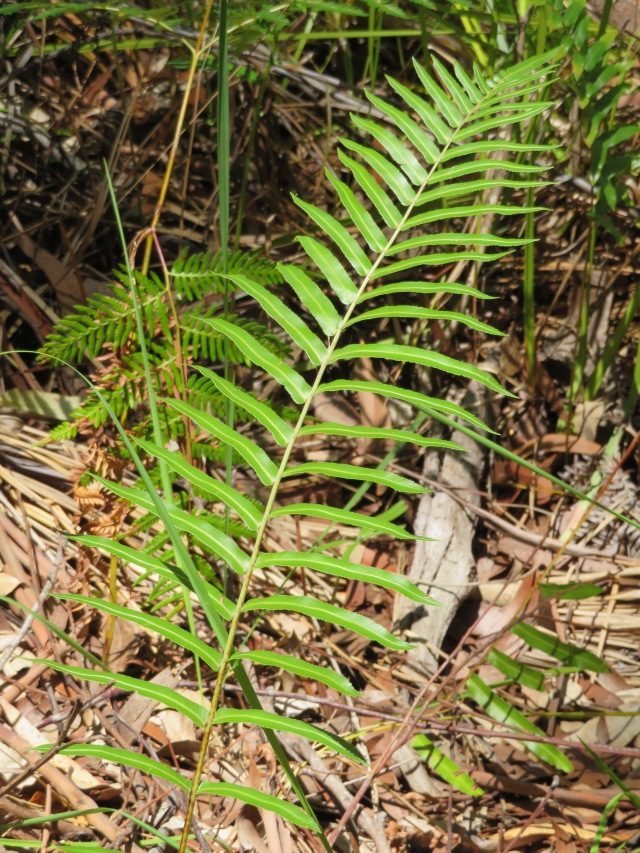
This fern’s roots could be dried and pounded to extract starch from them. The starch was then rolled into small balls and cooked on hot coals to make johnny cakes.
Bracken fern, Pteridium esculentum:
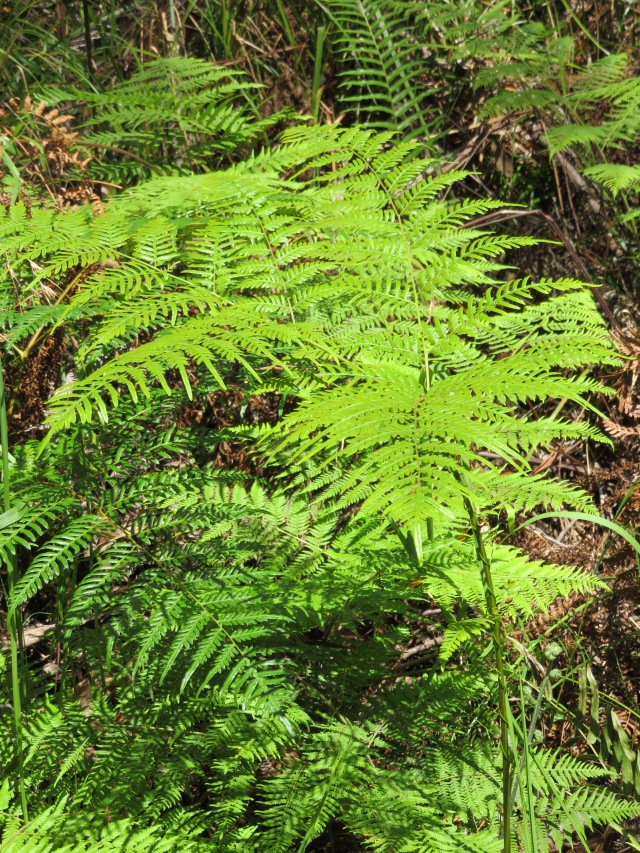
All parts of this fern are poisonous, but the Aboriginal people used the sap as a medicine for bites and stings.
Square-leaved grass tree, Xanthorrhoea johnsonii:
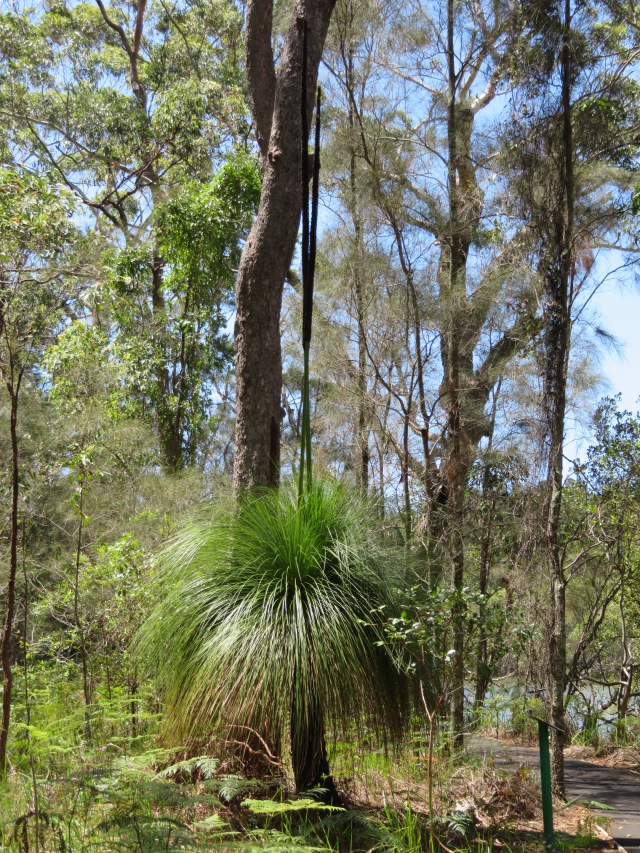
The Aborigines had a lot of uses for these, but I thought the most interesting one was the use as a compass flower. The first flowers come out on the northern side of the plant, so when it’s flowering it can be used to orient yourself in the bush.
The little sapling in the centre is a Creek sandpaper fig, Ficus coronate:
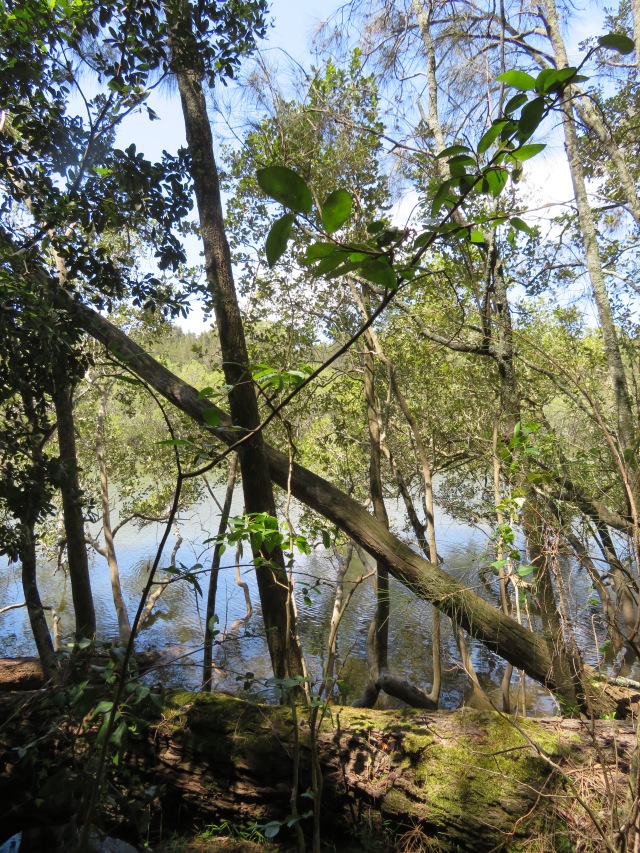
These often mark Aboriginal campsites, as they would be planted there so that the fruit could be eaten in future years.
Bald cypress, Taxodium distichum, from the United States of America:
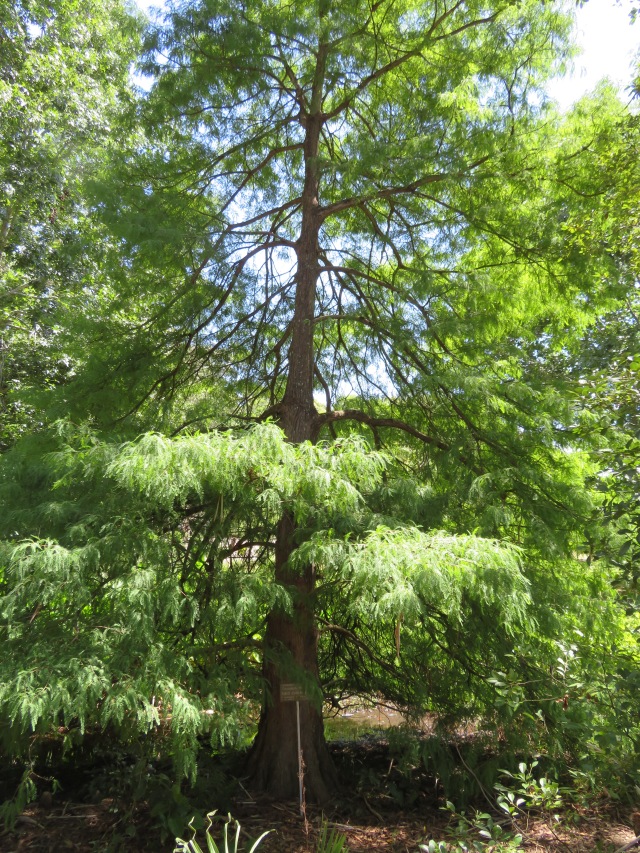
I have no idea why it was called ‘bald’ – it doesn’t seem very bald. Unless that was in comparison to other cypresses.
The next section of the path had a lot of birds, from what I could hear:
I found a kookaburra in a eucalyptus, and took a picture – the wind is coming from behind and giving it a crazy hairstyle:
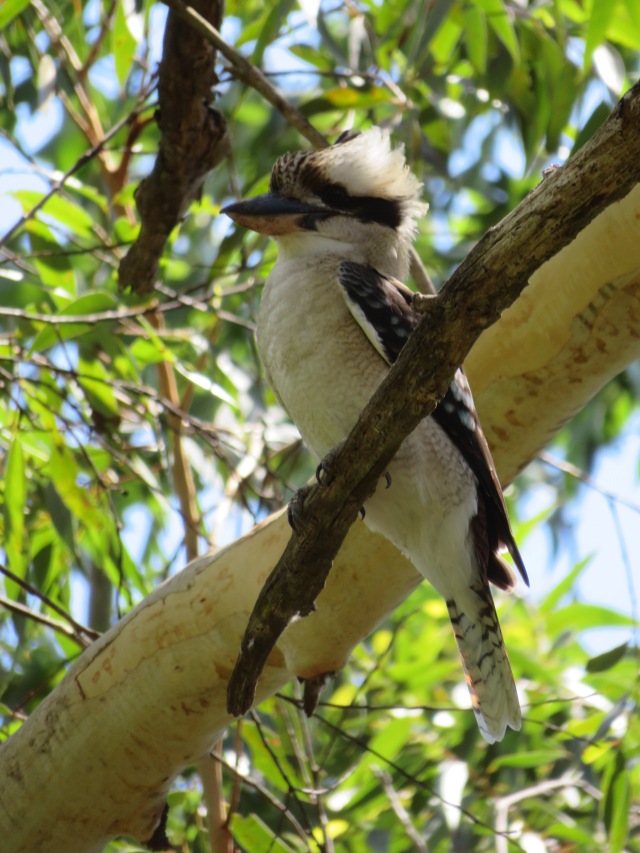
There was a pied currawong among the mangroves (which were a constant presence along the shore):
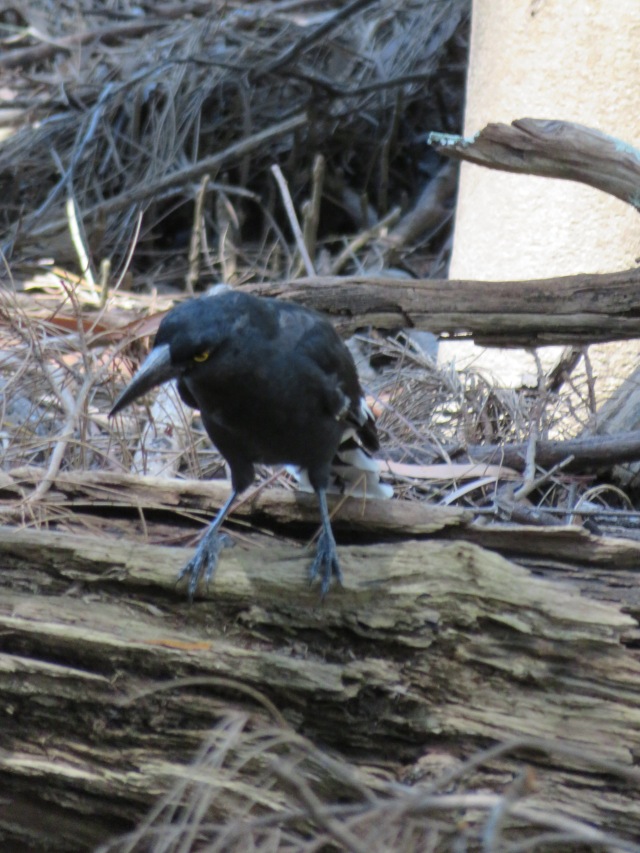
And I managed to get a quick video of a brown thornbill:
Now, back to plants. This is a phoenix tree, from China:
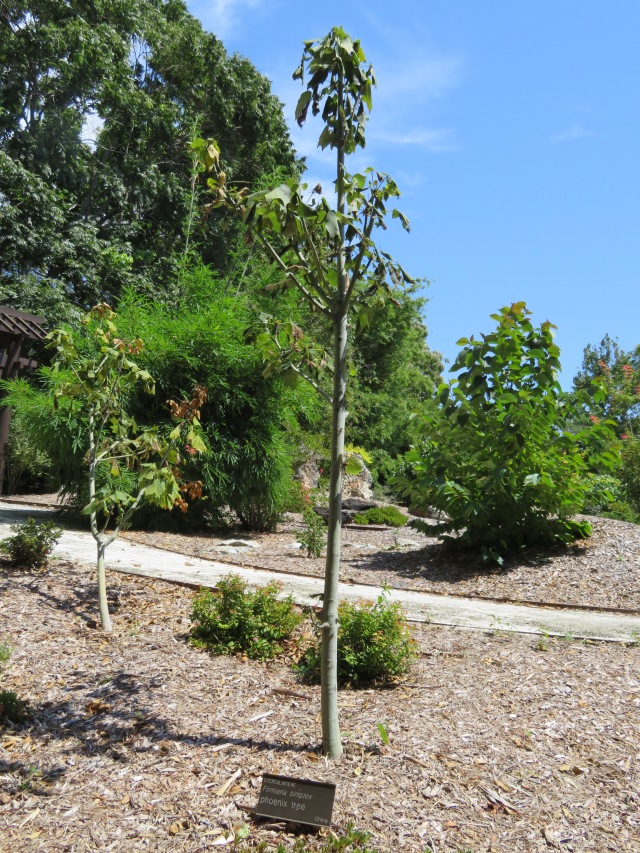
And back to the birds – an ibis I found wading through the mangroves:
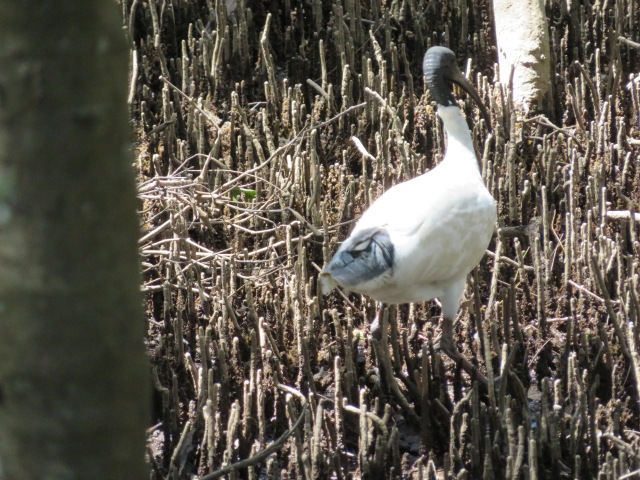
It’s nice to see an ibis in its natural habitat, instead of haunting parks and riverbank areas, looking for scraps.
There was another little boardwalk into the wetlands, and I wandered down it:
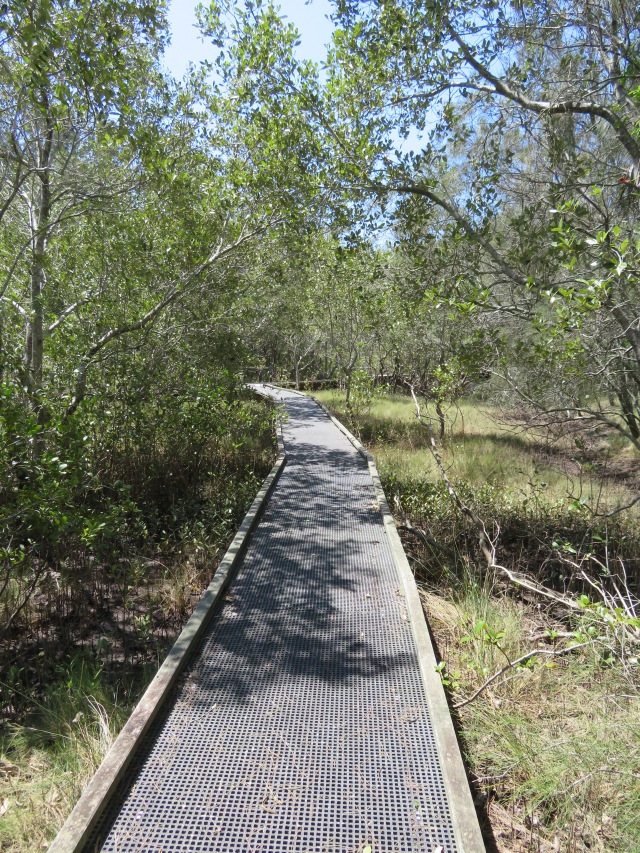
I managed to spot a female Leaden Flycatcher on the way:
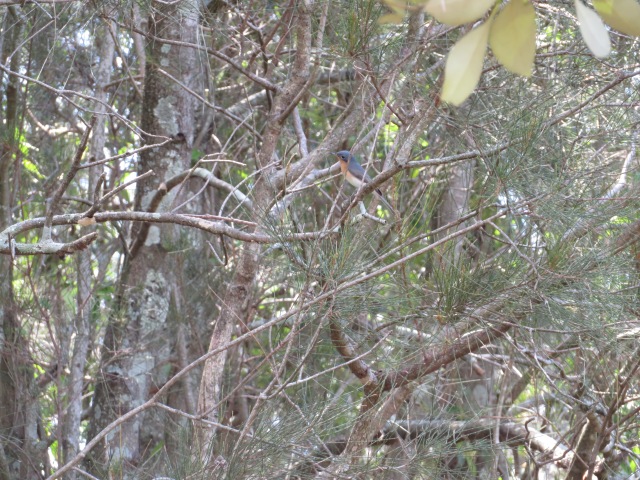
But I didn’t see much else. There was a small viewing platform at the end, and I watched the wind rippling the water for a while:
Then I turned back and had a look at the Japanese area:
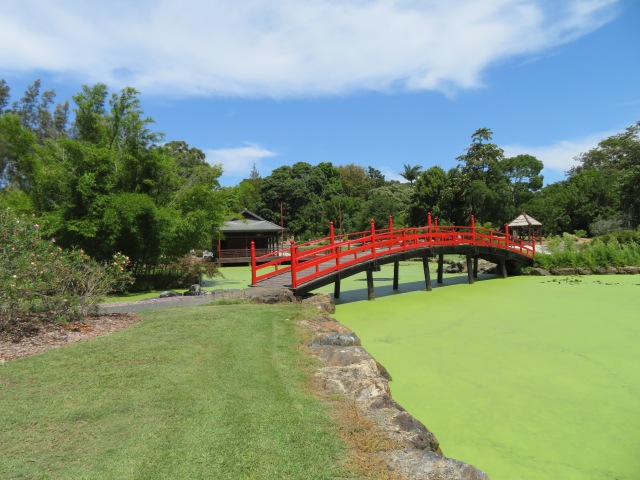
Yeah, that little lake really is completely covered in algae. The ducks seemed to like it, though:
I got some video, too:
I liked the little island of bamboo in the middle:
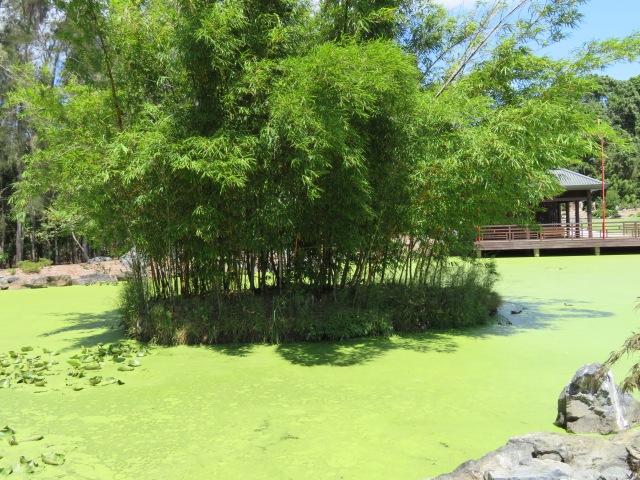
Apparently, the dusky moorhens liked it as well:
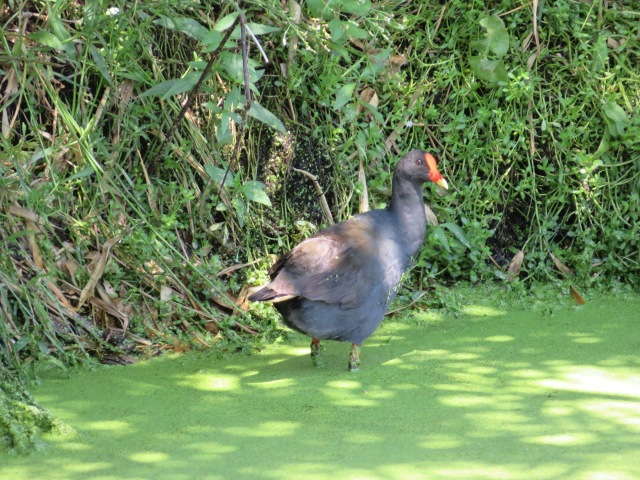
I also got a video of one with some chicks:
Now, the plants again. This is a Chaboyadori Hinoki Cypress, Chamaecyparis obtusa ‘Chaboyadori’, from Japan:
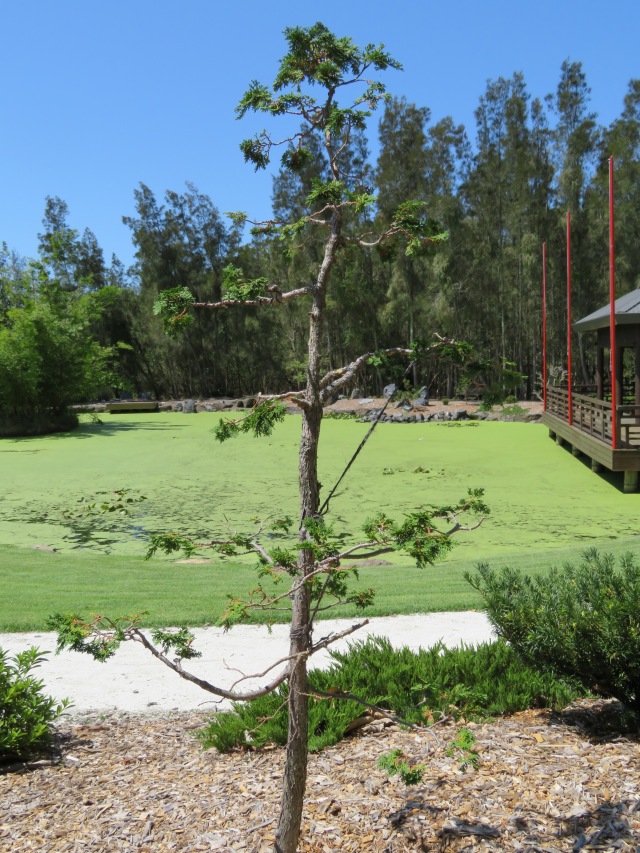
Tallow tree, Sapium sebiferum, found in China and Malaysia:
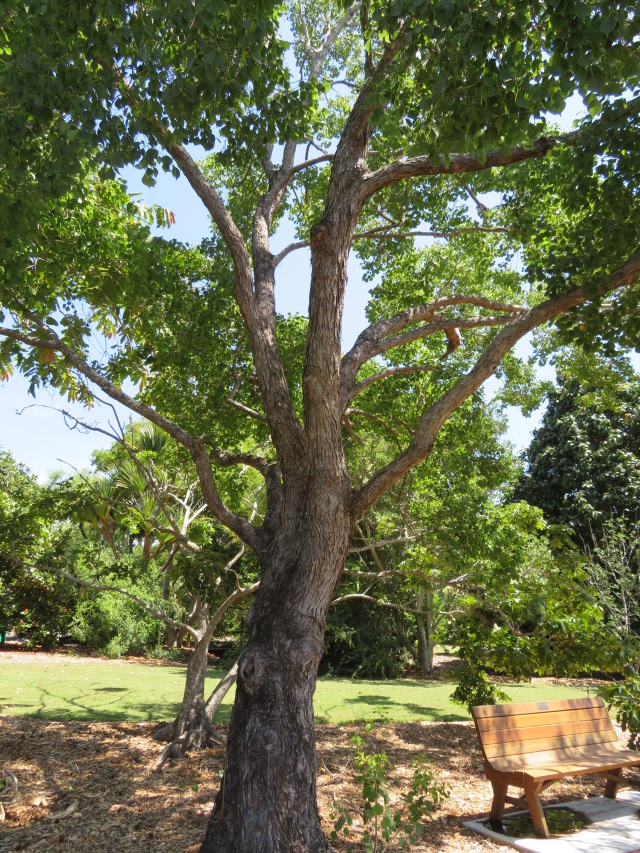
A Japanese Sago palm, Cycas revoluta: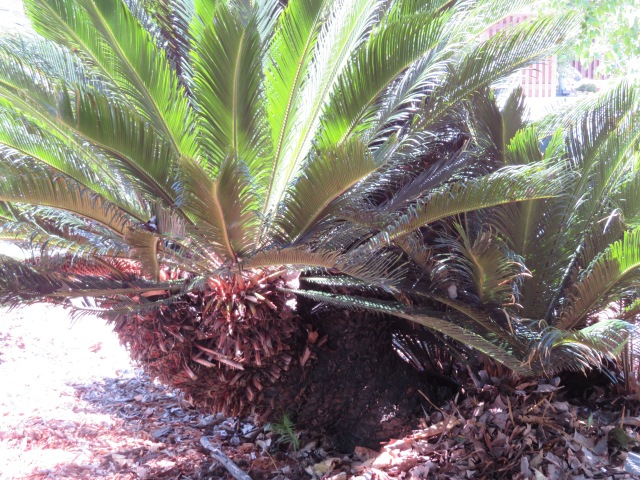
This plant is dioecious, meaning it doesn’t produce both eggs and pollen – the plants are either male or female. It’s funny, because high school biology leads us to think of all plants as having both sex organs, but a lot of them are unisexual, with both male and female forms. Most palm trees are dioecious.
Chinese windmill palm, Trachycarpus fortunei:
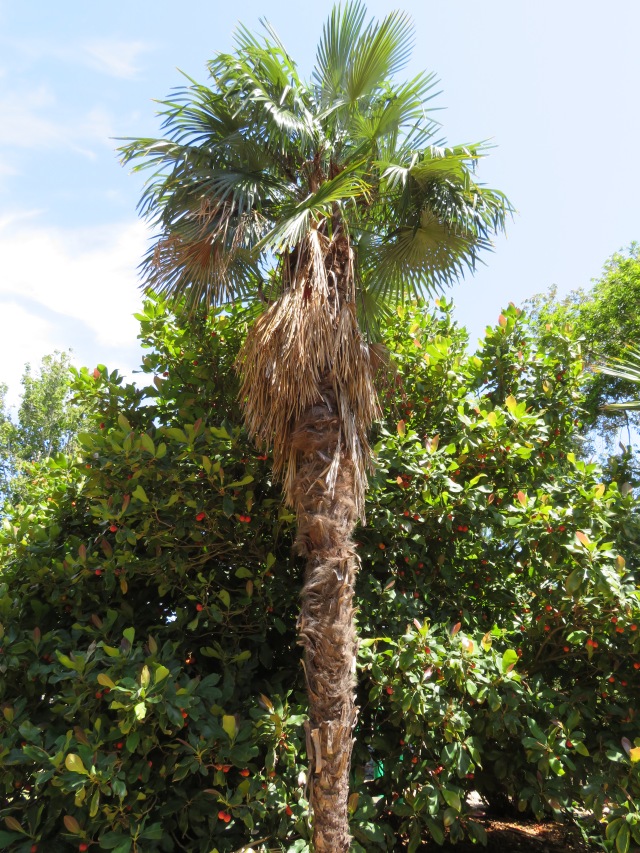
The name actually refers to the island where a botanist first saw them cultivated. Good thing, too – if they were named for a resemblance, we might start to worry about the person who named them, because they don’t look like a windmill.
Golden pandanus, Pandanus veitchii ‘Golden’:
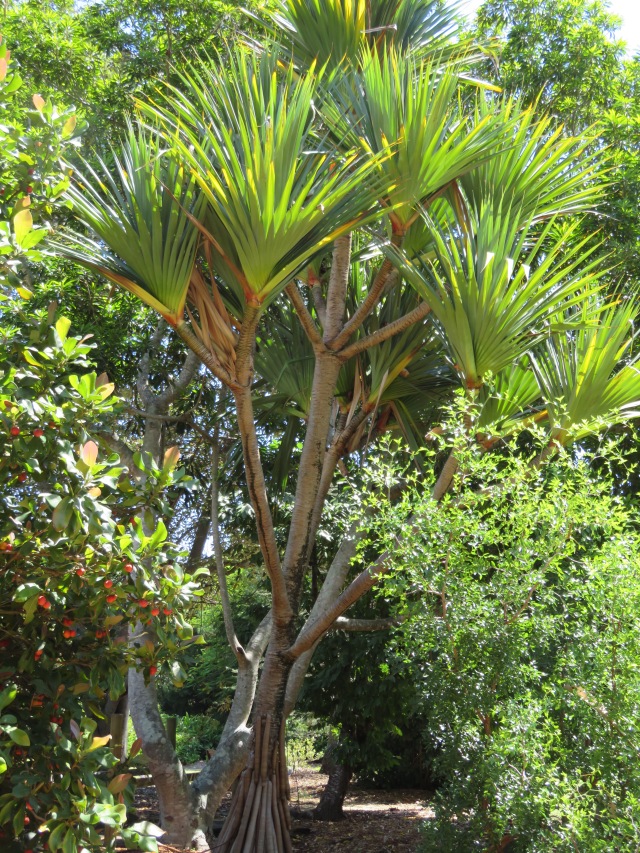
Maiden-hair tree, Gingko biloba:
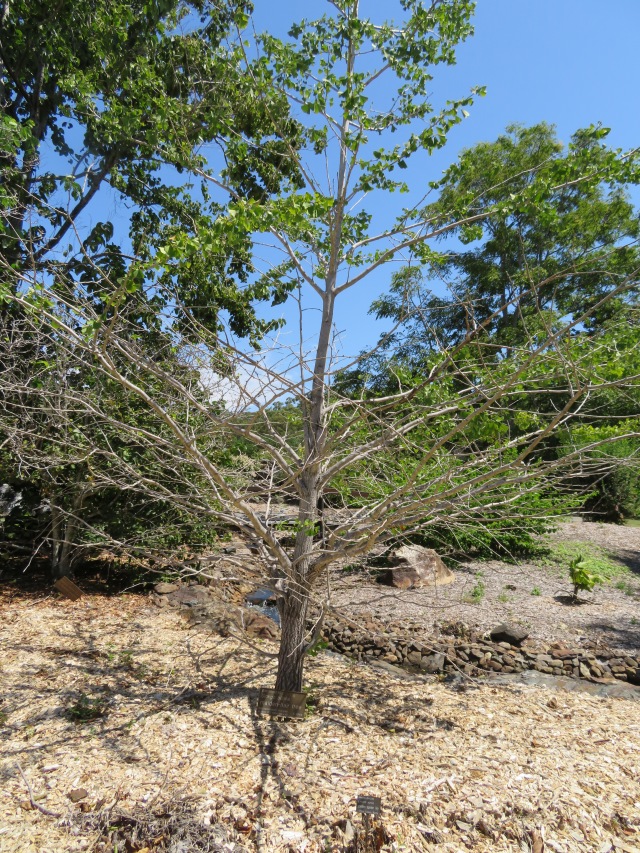
And a close-up of the leaves:
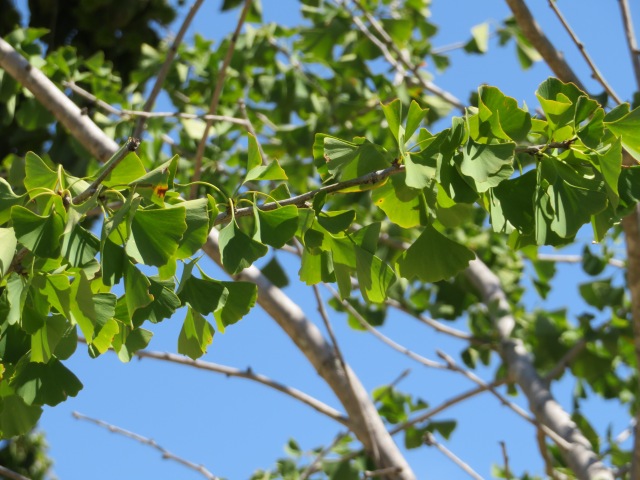
This is the only living species in the Ginkgophyta division, which dominated the landscape about 270 million years ago. All other examples vanish after the Pliocene era, but Gingko biloba survives to the present day, and is essentially a link between ferns and conifers. It has an enormous genome (10.6 billion ‘letters’, compared to a human’s 3 billion), with a lot of chemical and antibacterial defence mechanisms.
They’re also known for being one of the few living things that survived the atomic bombing of Hiroshima.
Grey China fir, Cunninghamia lanceolata glauca:
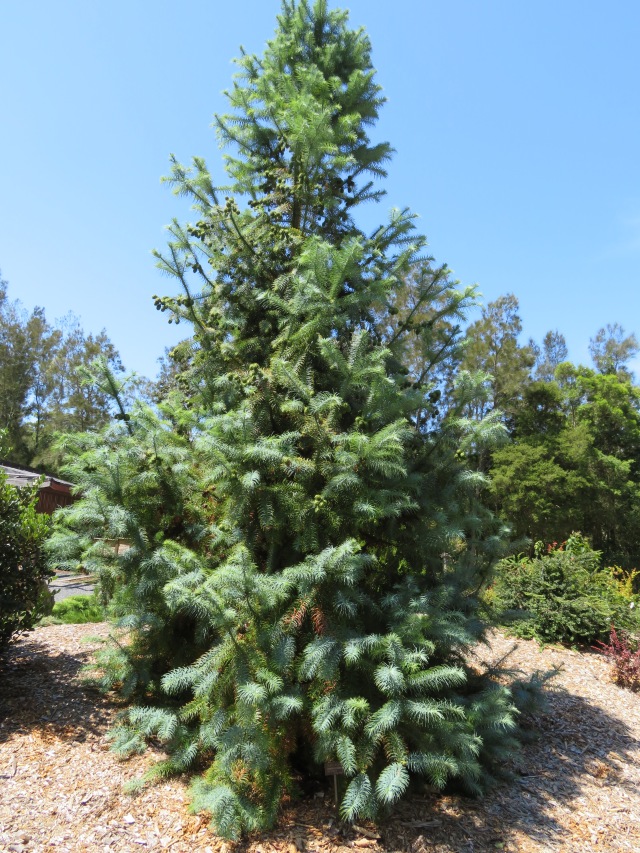
Very fuzzy-looking tree. It’s a big timber tree in China.
Dawn redwood, Metasequoia glyptostroboides:
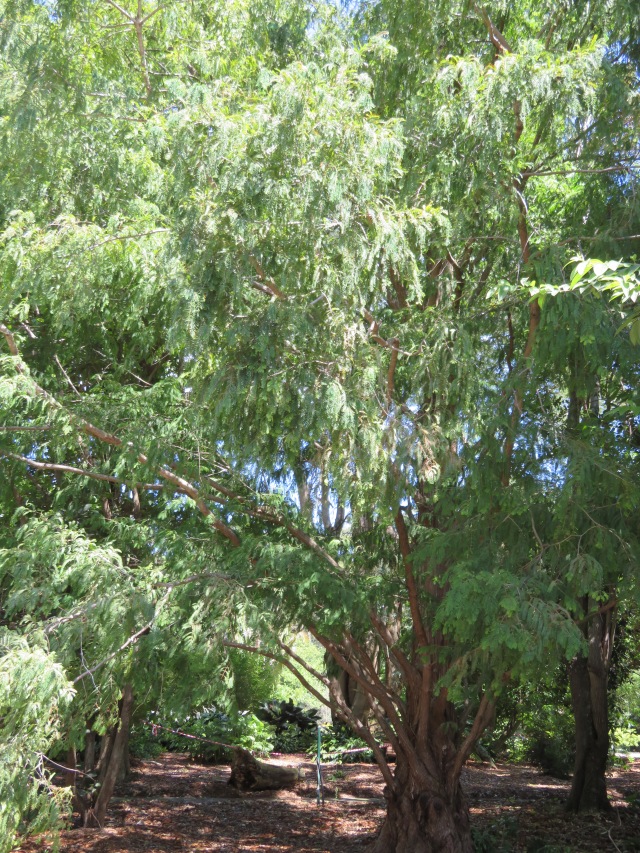
This is another fossil species, and the only living members of its genus. The genus was originally established from fossils, and with none of the fossils being less than 1.5 million years ago, it was assumed to be entirely extinct. A few years later, a Chinese forestry official collected samples from an unidentified tree, which were eventually linked with the supposedly-extinct genus.
The Japanese garden:
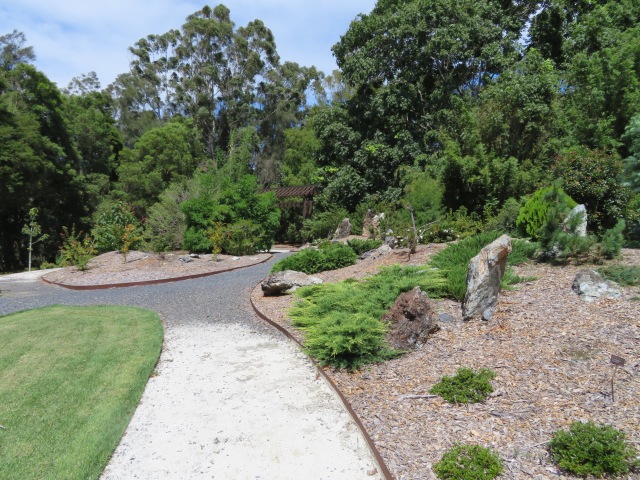
They even had a tiny little labyrinth:
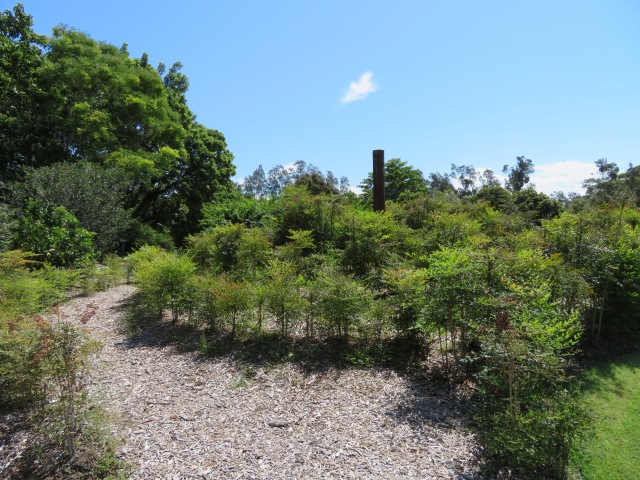
Wasn’t really a maze, though – just a small spiral to this at the centre:
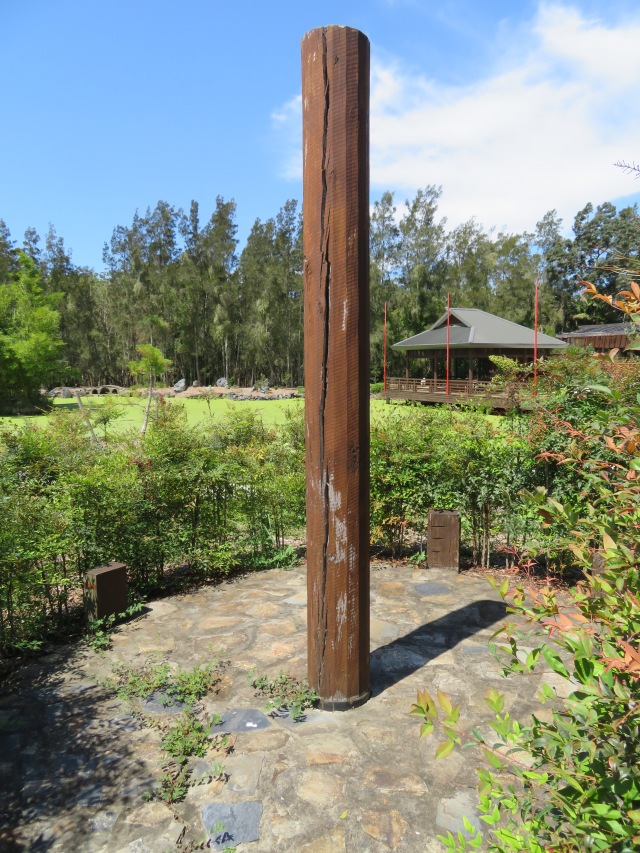
I also spotted a Royal Spoonbill at the lake:
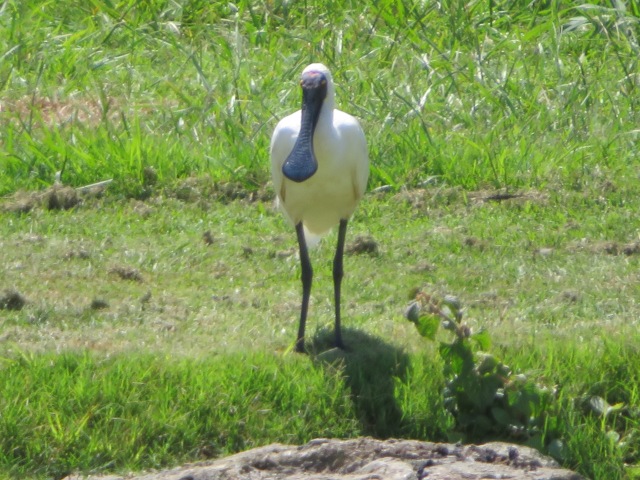
And a Masked Lapwing:
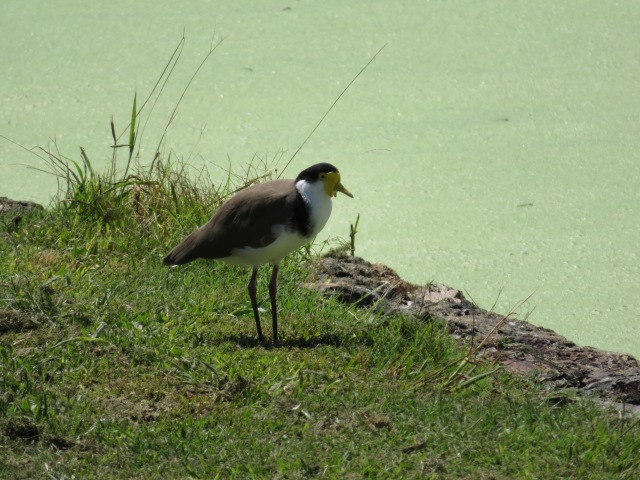
Syrian hibiscus, Hibiscus syriacus:
That one I took a picture of just because it was pretty. The ones coming up I recorded because they have funny names, and they’re all Australian – more specifically, Queensland plants.
The Queensland area:
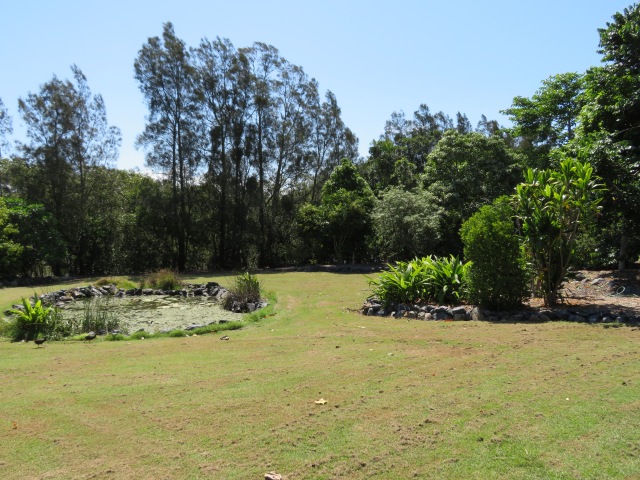
There was a little coot in the pond:
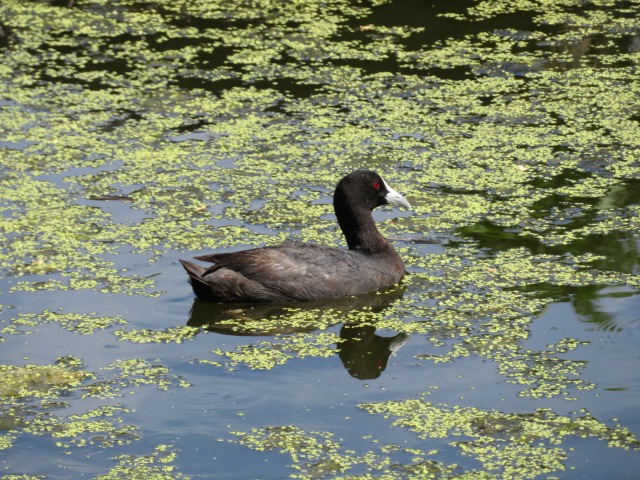
Water gum, Syzygium glenum:
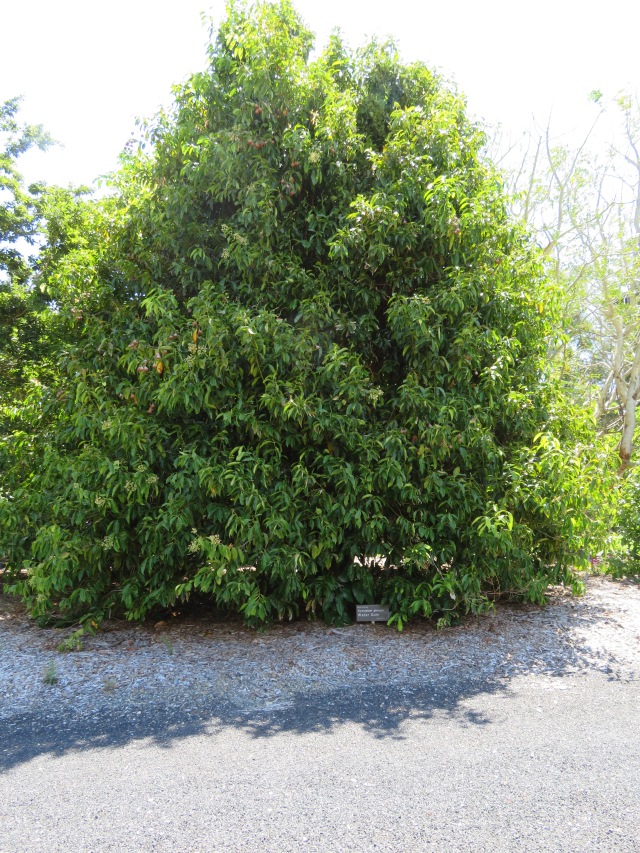
Cocky apple, Planchonia careya:
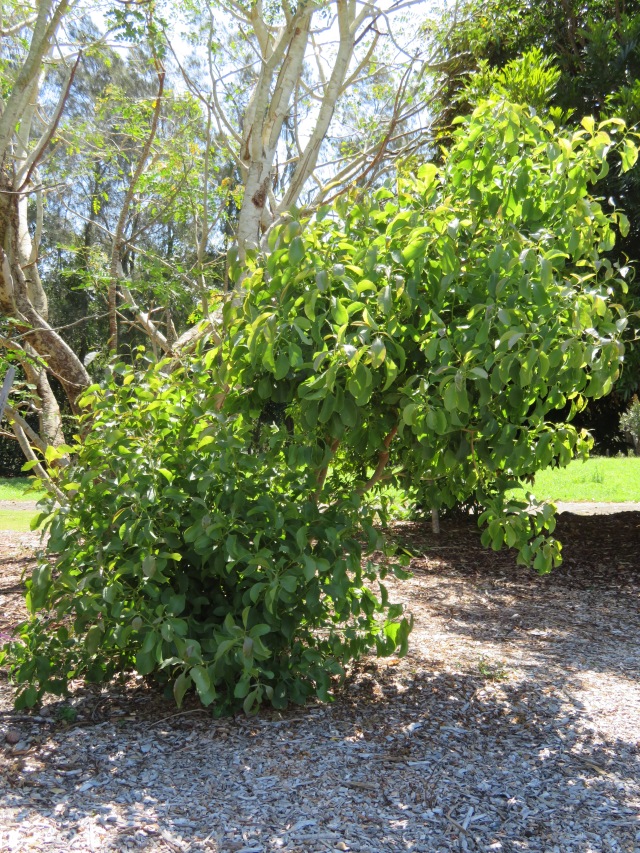
River cherry, Syzygium tierneyanum:
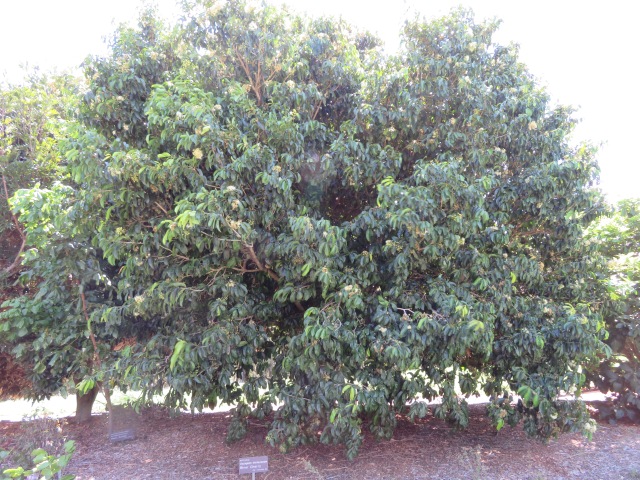
Quandong, Peripentadenia phelpsii:
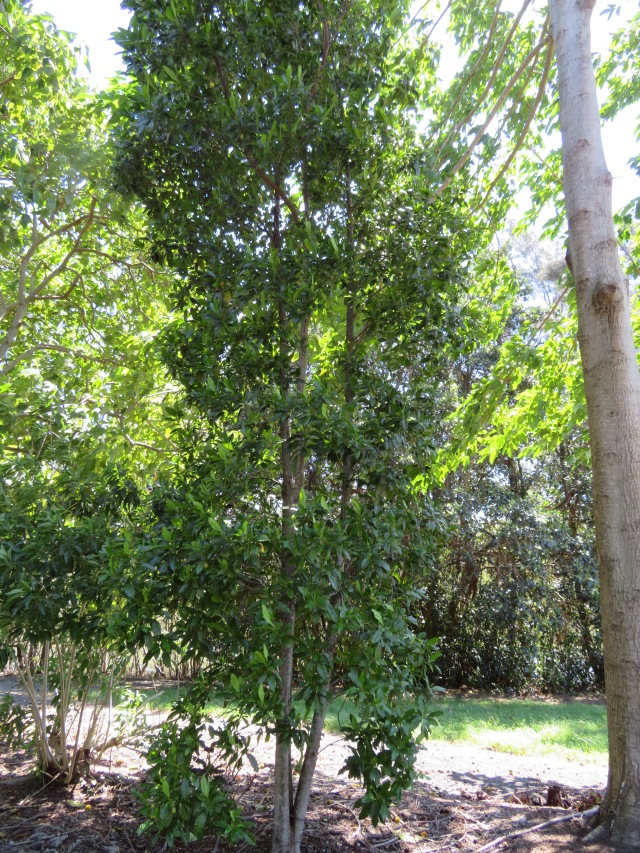
Mountain Guoia, Guoia montana:
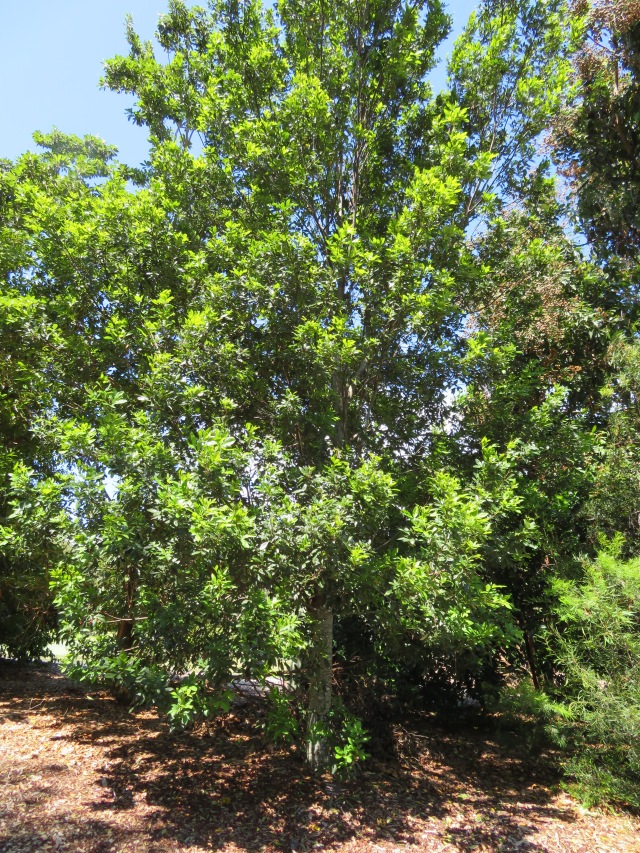
Candle-nut, Aleurites moluccana:
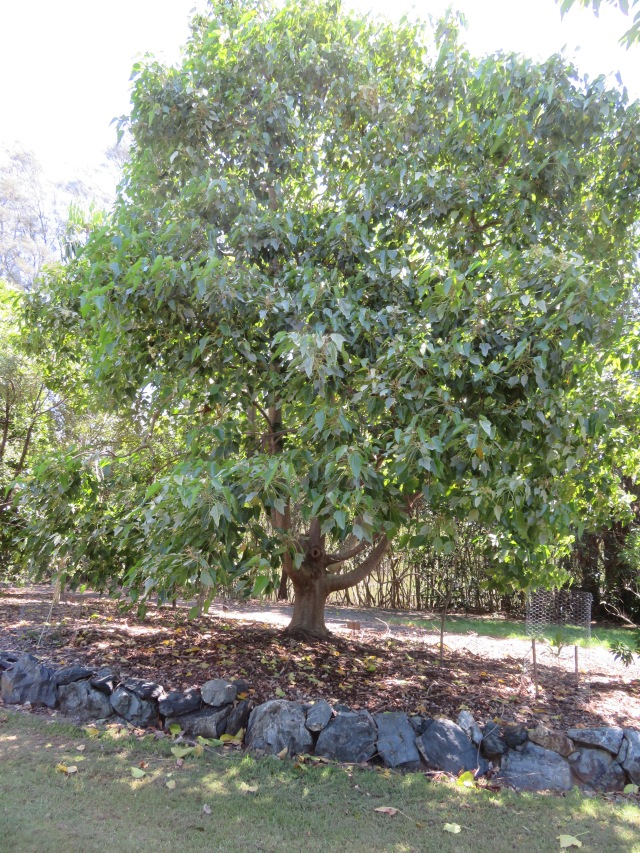
That little spray of green with the white flower is a Resurrection plant, Molineria capitulata:
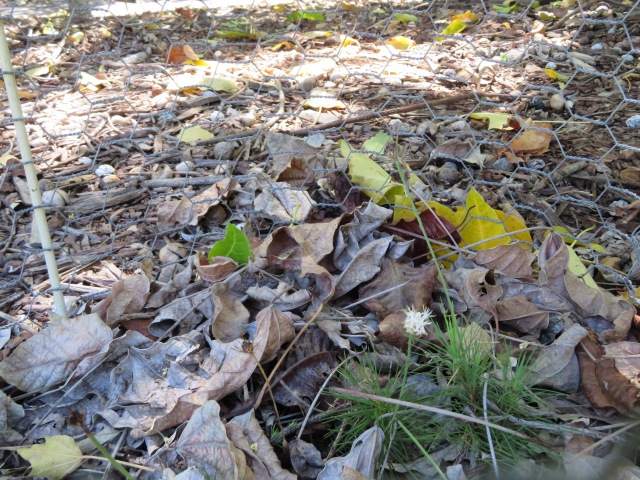
It’s called that because it allows its tissues to desiccate when water isn’t available, becoming dry and shrivelled and apparently dead, then reviving completely when water returns.
Silkwood, Lepiderema sericolignis:
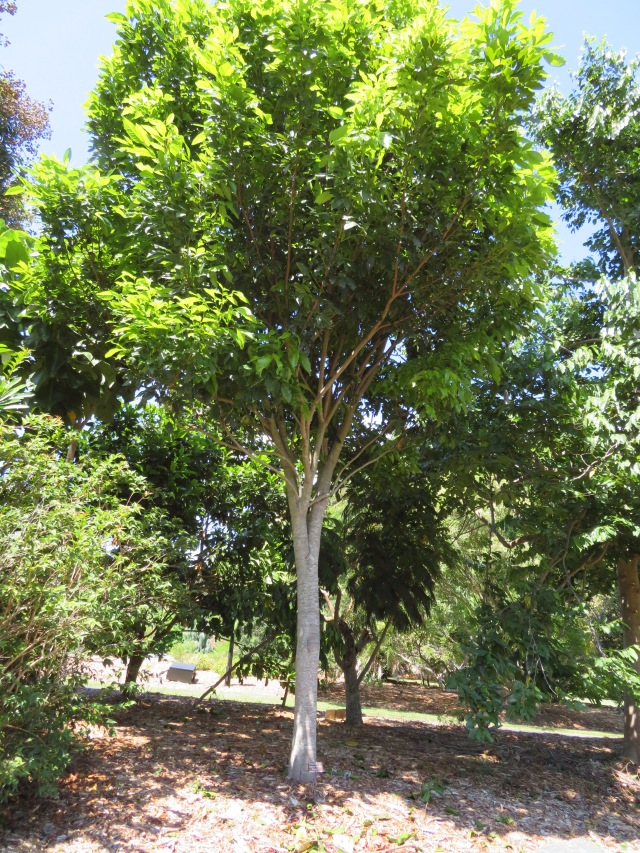
Cooper’s puzzle, Cupaniopsis cooperorum:
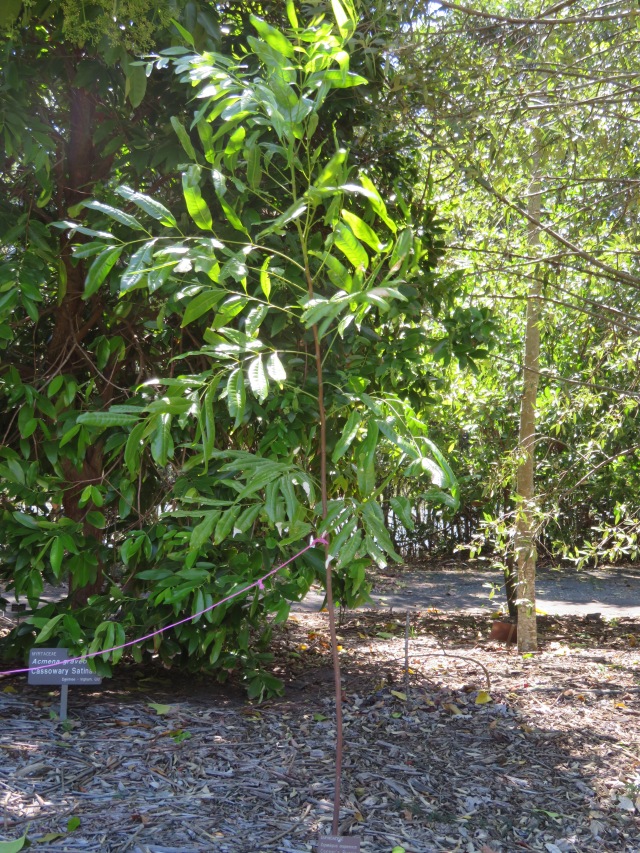
A quick Google isn’t turning up a reason for that name, so I suppose it’s destined to remain a mystery. Or a…puzzle (ha, ha, ha).
Downy satinash, Syzygium puberulum:
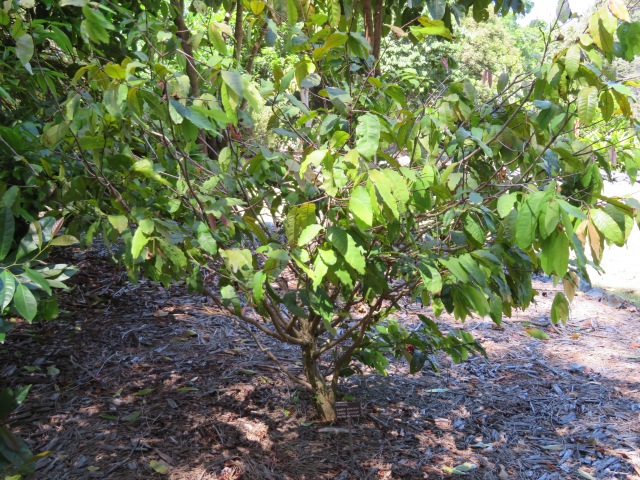
Cassowary satinash, Syzygium graveolens:
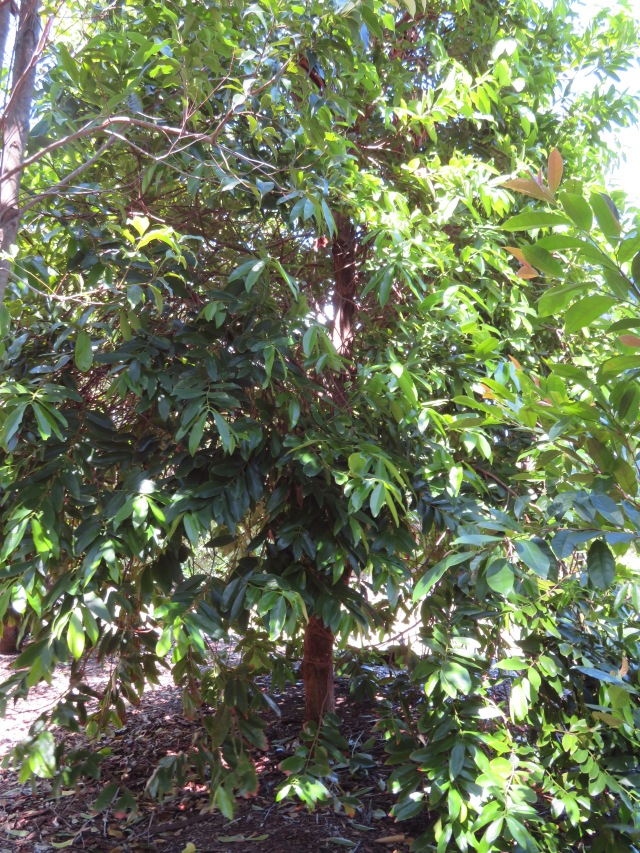
Ribbed malletwood, Rhodamnia dumicola:
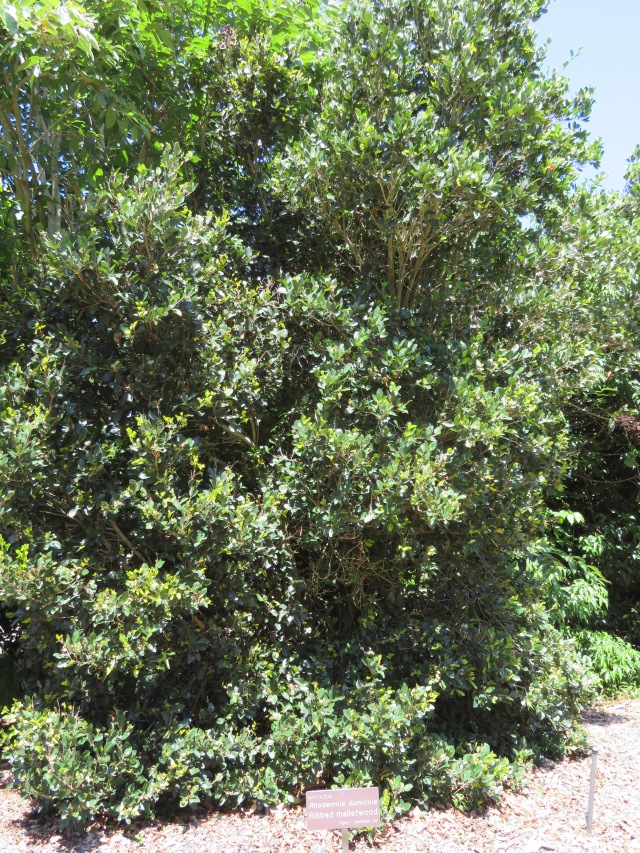
Wedge-leaved tuckeroo, Cupaniopsis wadsworthii:
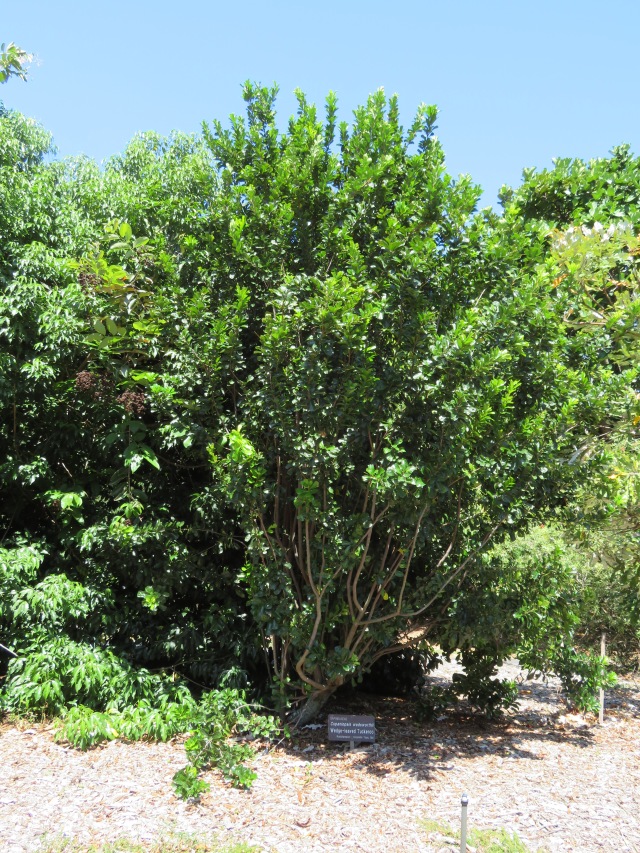
Scented Daphne, Phaleria clerodendron:
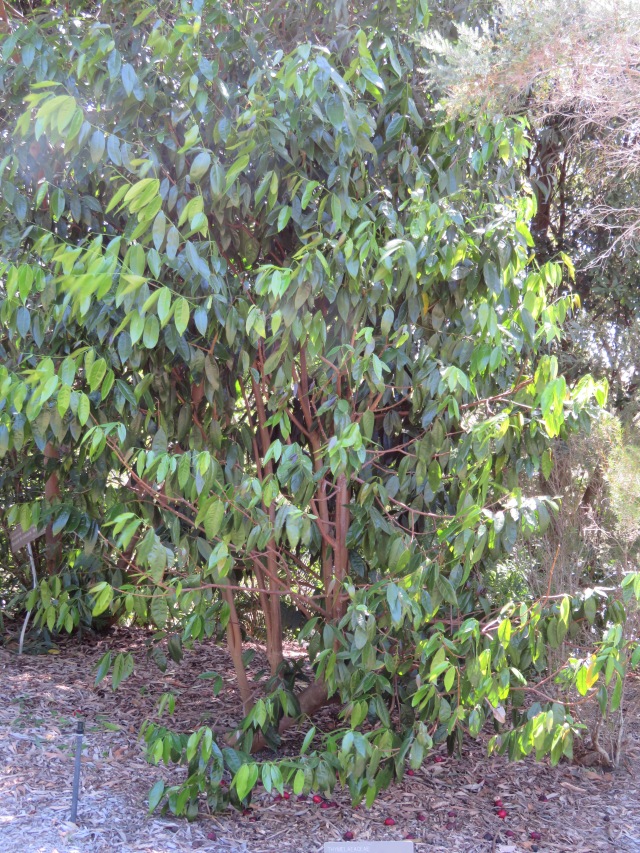
Babingtonia, Babingtonia silvestris:
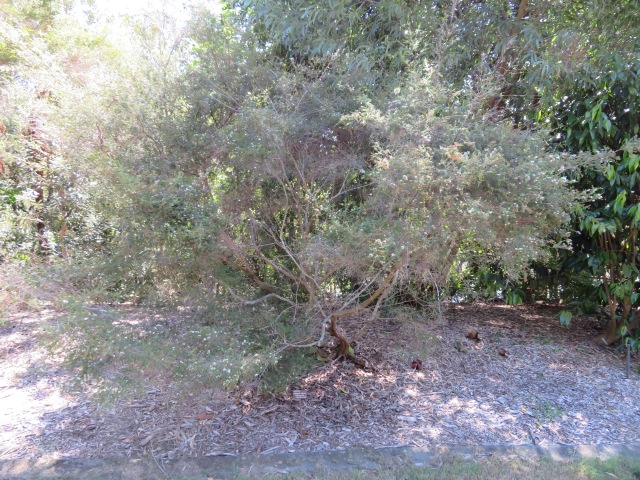
That one was covered in these tiny little flowers:
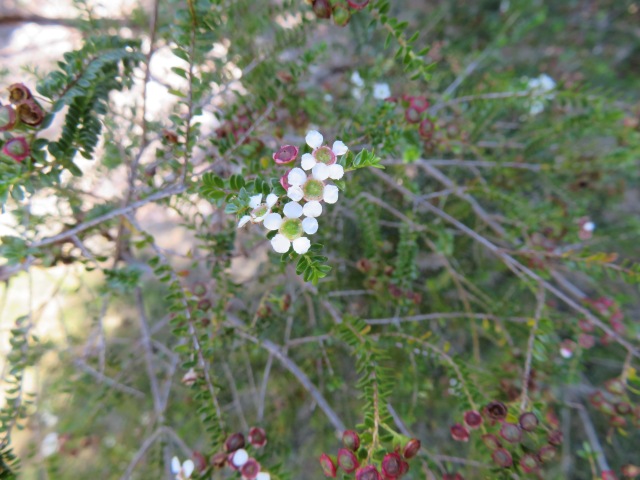
Feather wattle, Acacia o’shanesii:
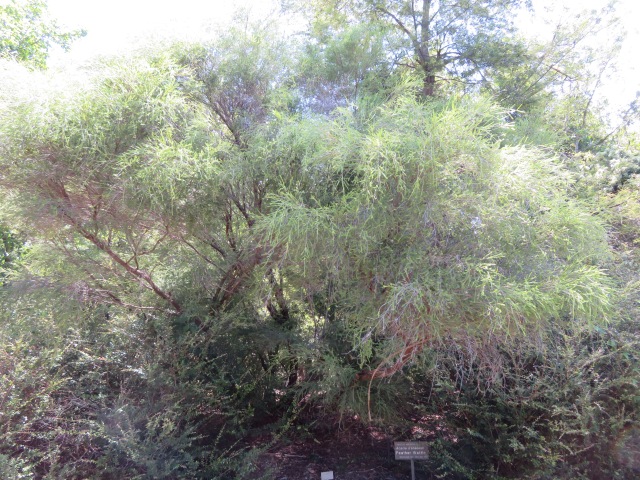
This name is easily explained – the leaves do have a bit of resemblance to emu feathers:
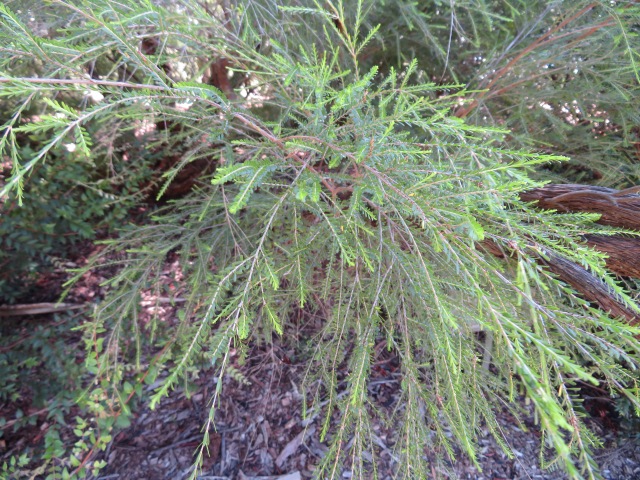
Pink cottonwood, Hibiscus splendens:
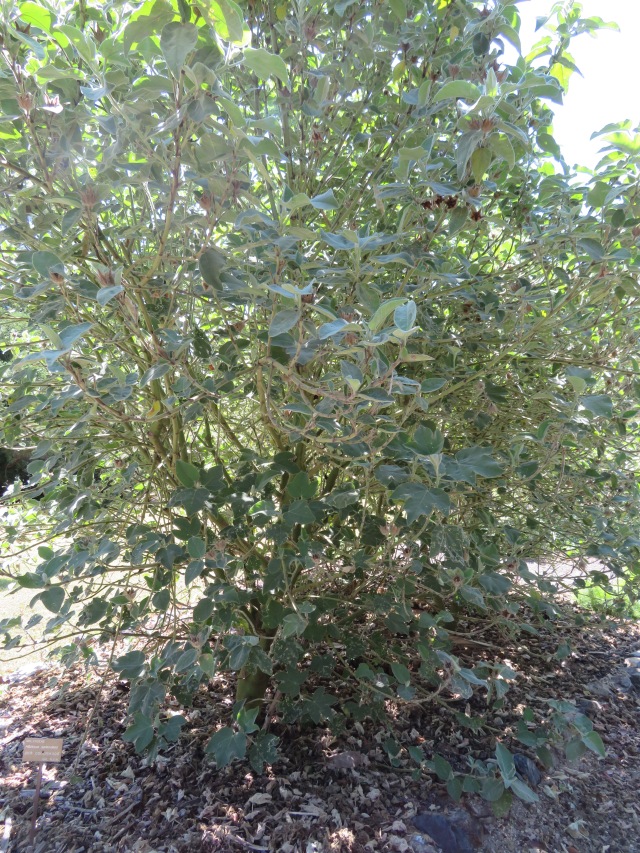
Looking across to foreign plants:
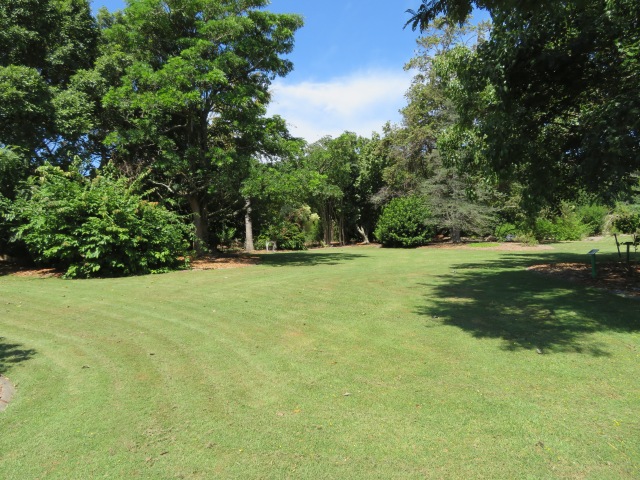
There was a Magpie-lark in the open grass area, and I got a photo and some video:
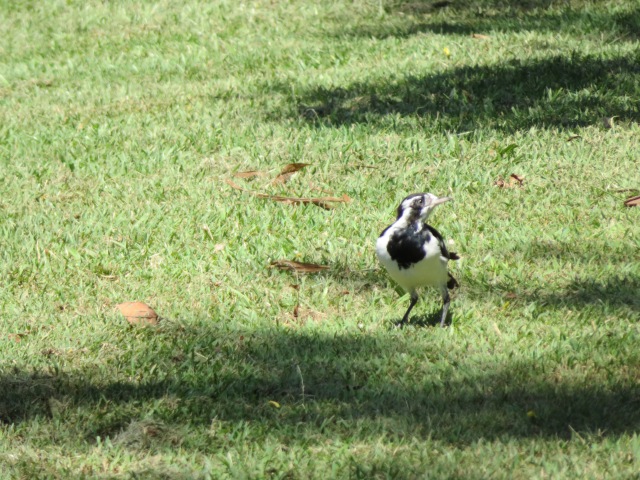
Jumpy little thing, isn’t it?
Now these are some more foreign plants – first up, the Siamese shower, Cassia siamea, from India:
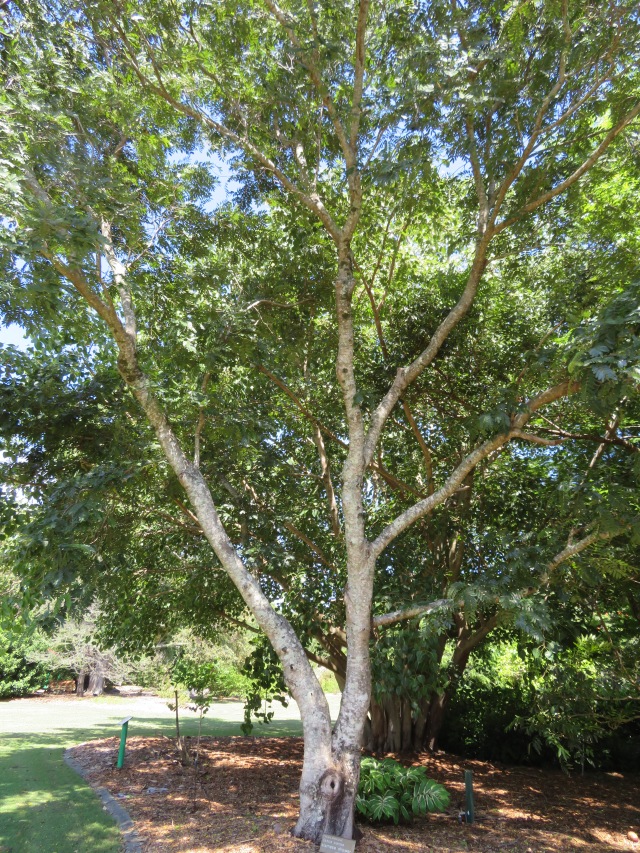
Double Nile Lily, Agapanthus praecox ‘Dorothy Edwards’, from South Africa:
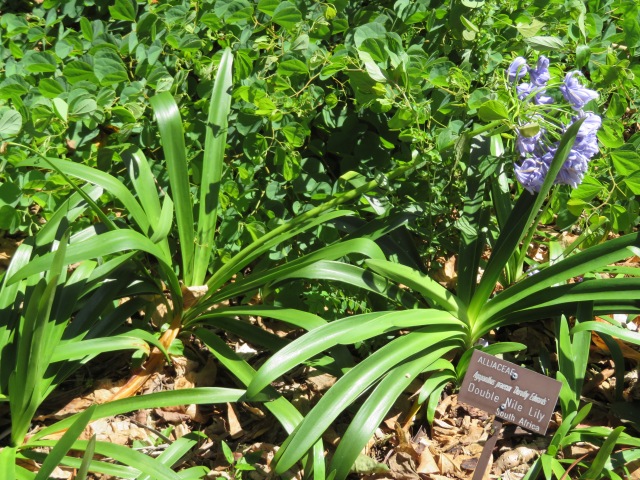
A close-up of the flowers:
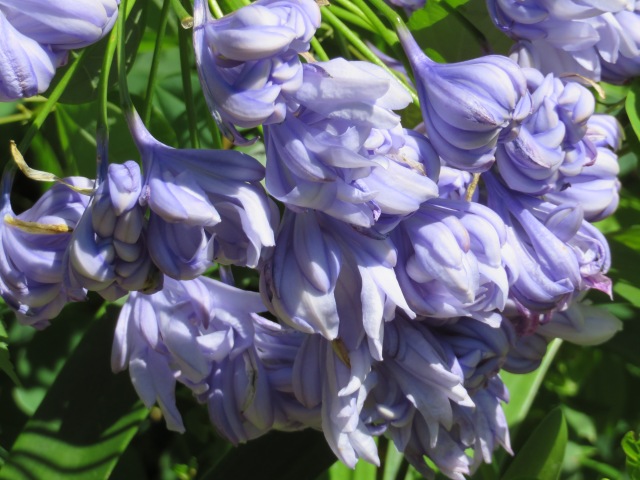
Senegal date palm, Phoenix reclinata, from tropical Africa:
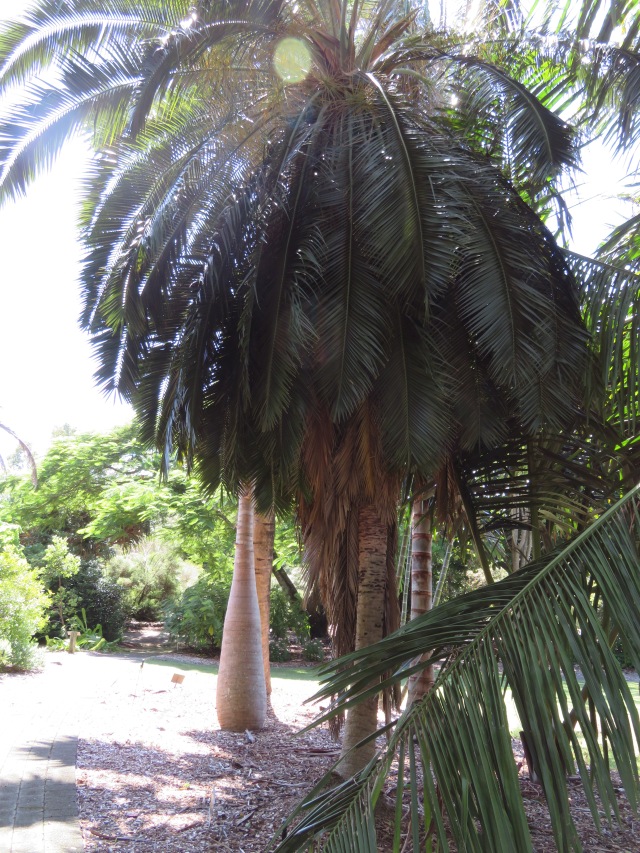
Bella sombre, Phytolacca diocia, from South America:
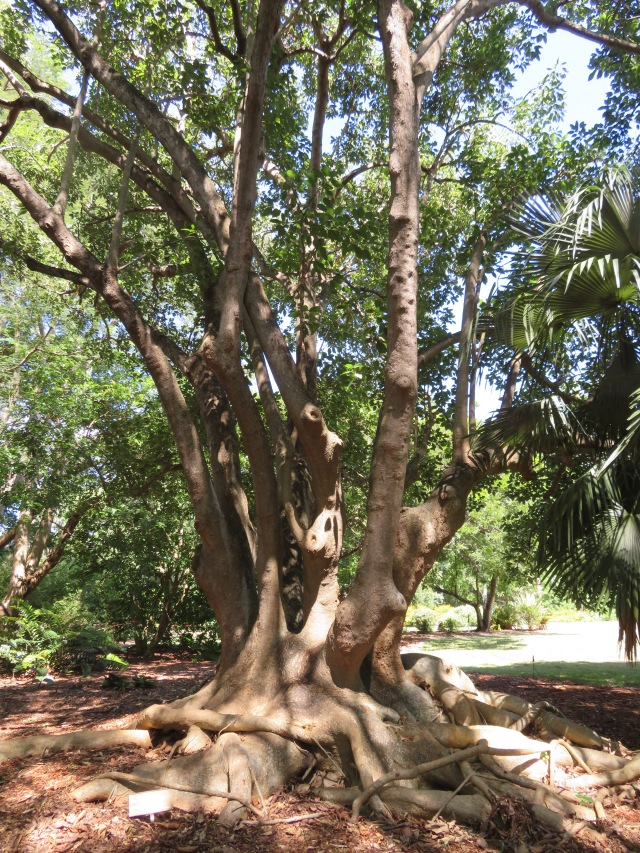
Lady palm, Raphis excelsa, from China:
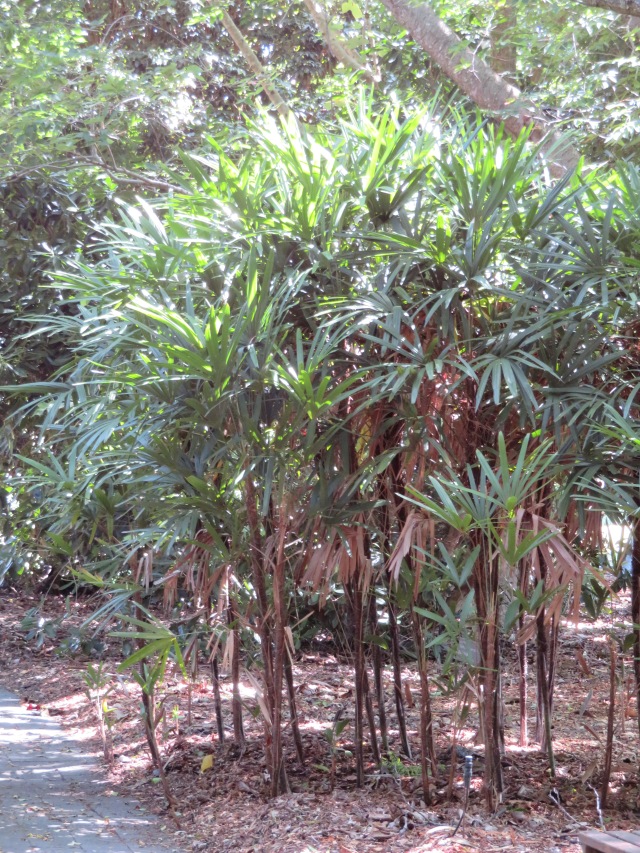
Monkey plant, Ruellia mackoyana, from Brazil:
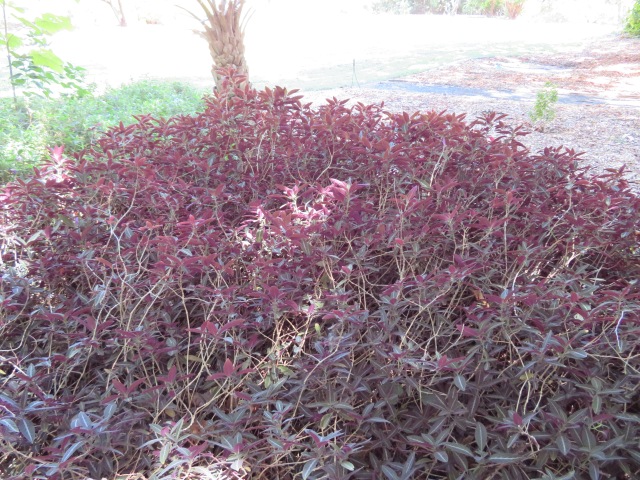
Another photo I took for the pretty flowers – Kathleen Lasiandra, Tibouchina granulosa ‘Kathleen’, from Brazil:
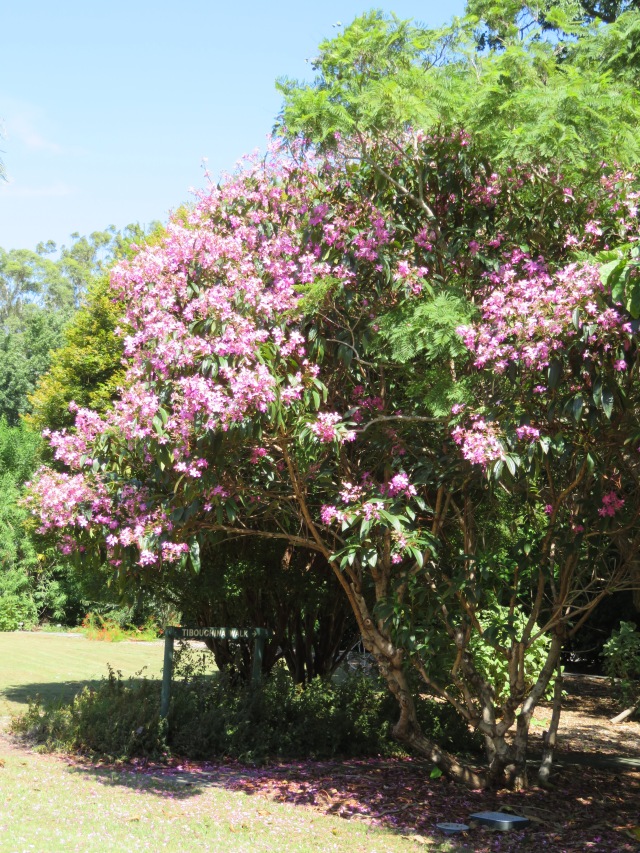
A close-up of the flowers:
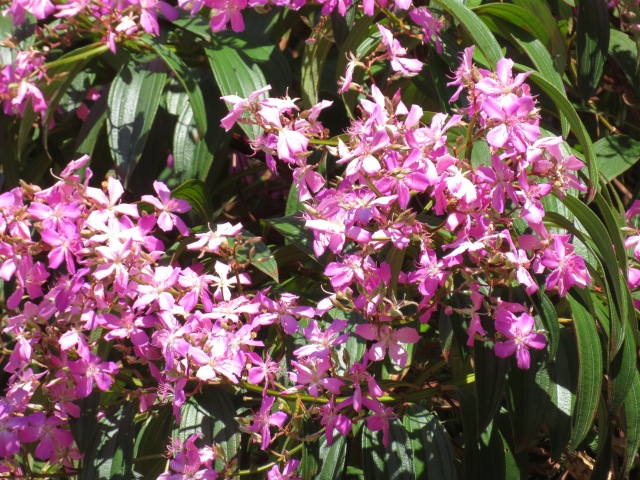
A portion of the garden I just like the look of:
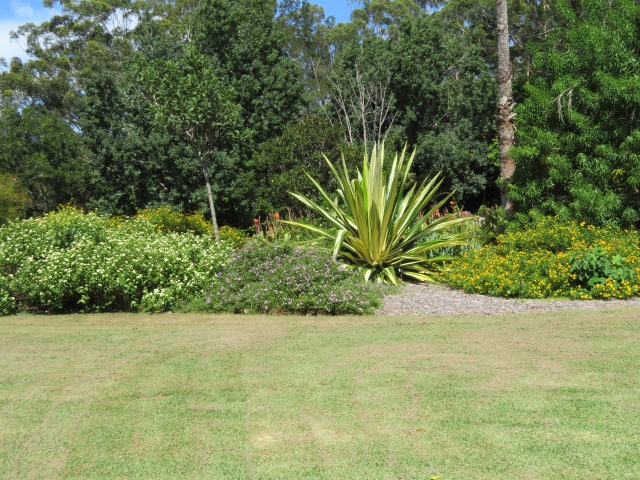
Nothing funny about this name – I just thought it was a funky-looking palm. This is the Cohune palm, Orbignya cohune, from Brazil:
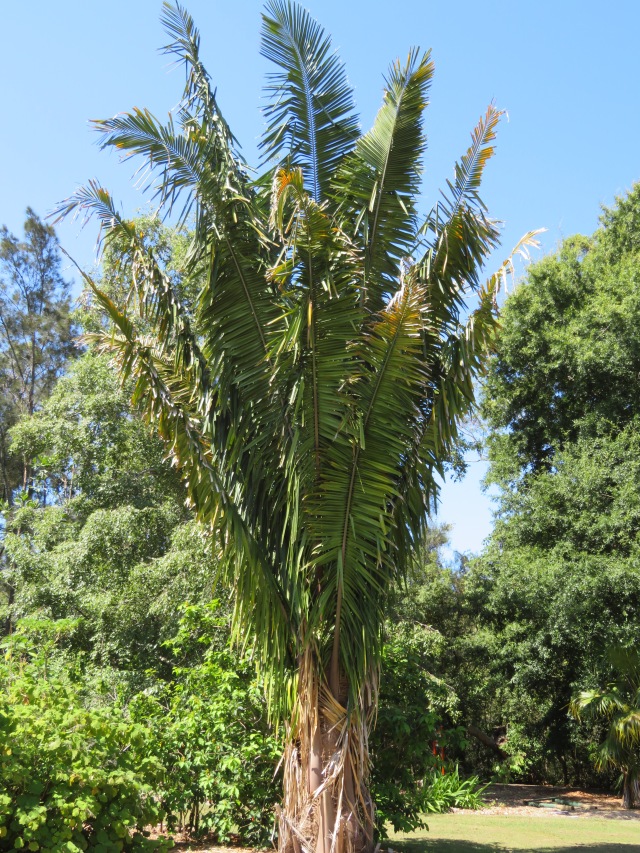
Some more pretty flowers, this time pink frangipanis (Plumeria rubra) from Mexico:
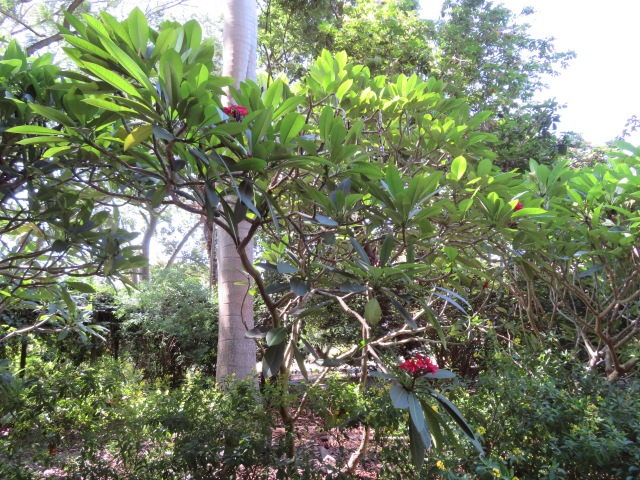
The close-up:
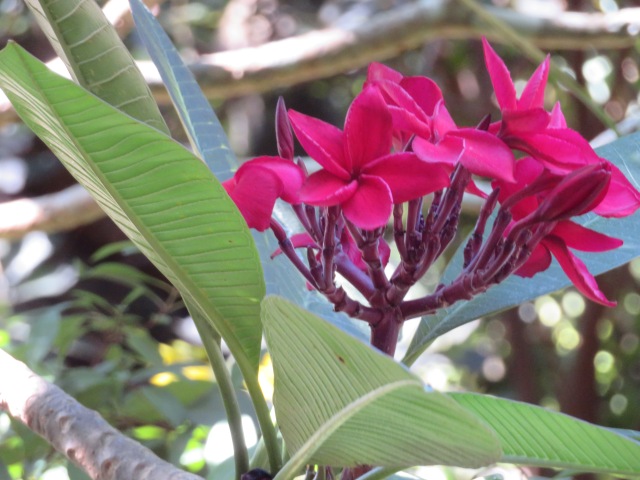
Now we’re back to Australia. This is Candlestick drumsticks, Isopogon mnoraifolius:
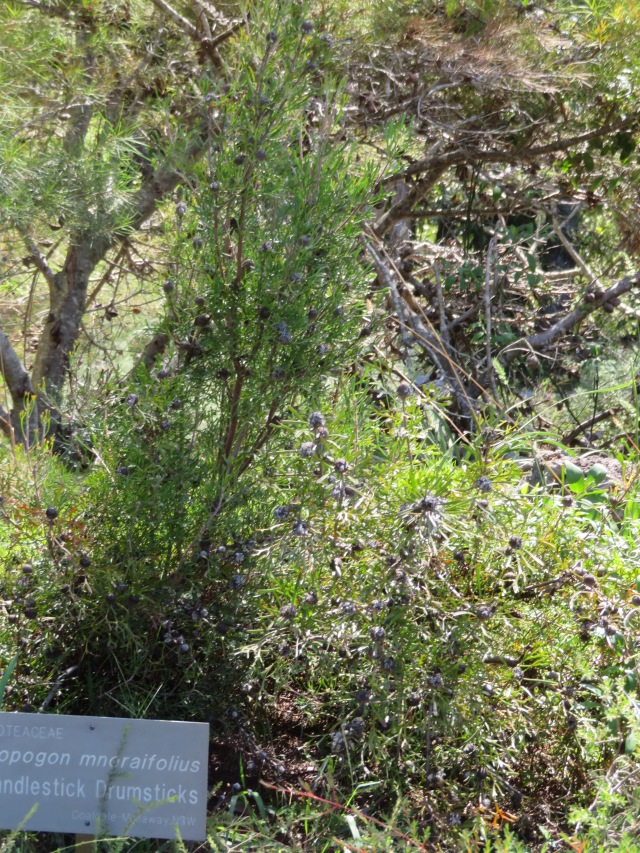
Slender riceflower, Pimelea linifolia:
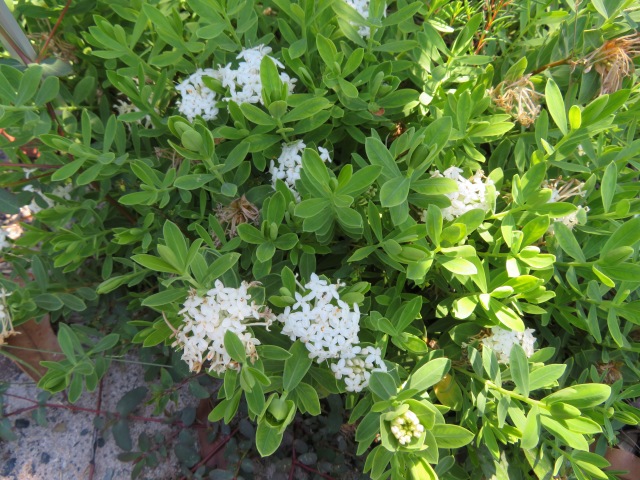
Close-up:
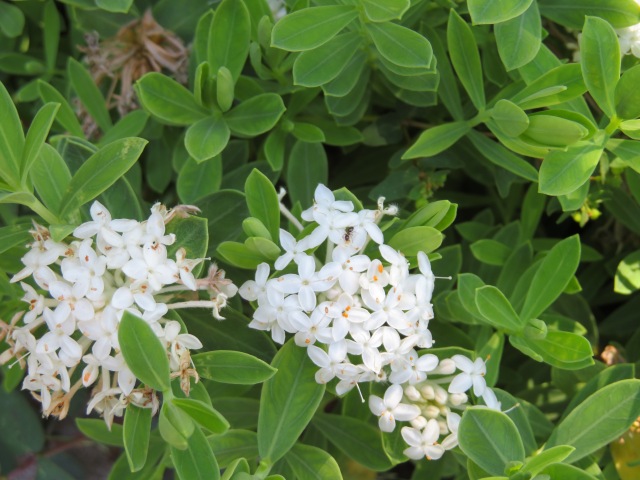
Mountain devil, Lambertia formosa:
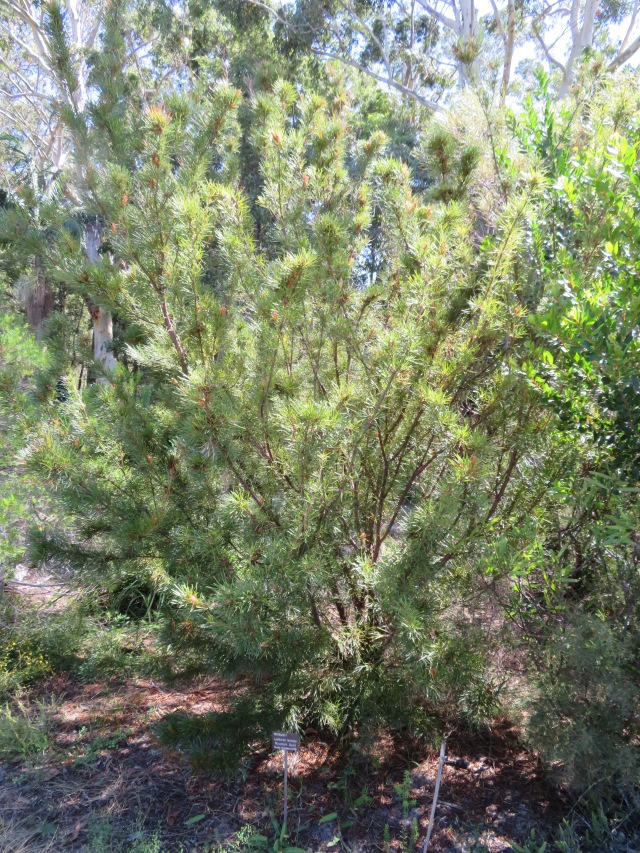
The name came from the way the developing fruit looks like horned figures. They weren’t saying the plant was evil, just that it looked evil.
I moved into the glasshouses next:
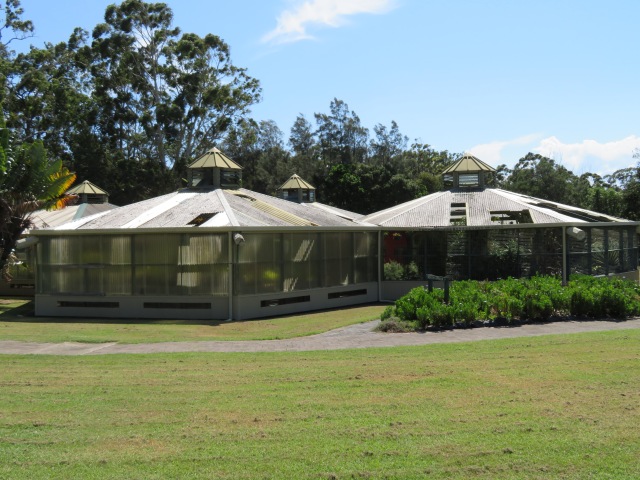
The first room:
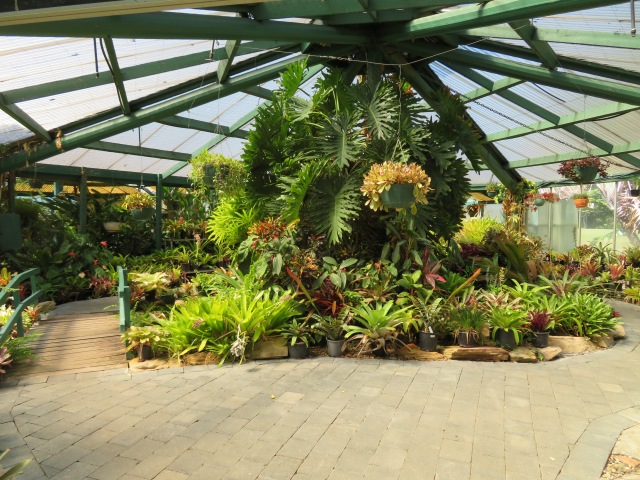
The bromeliad house:
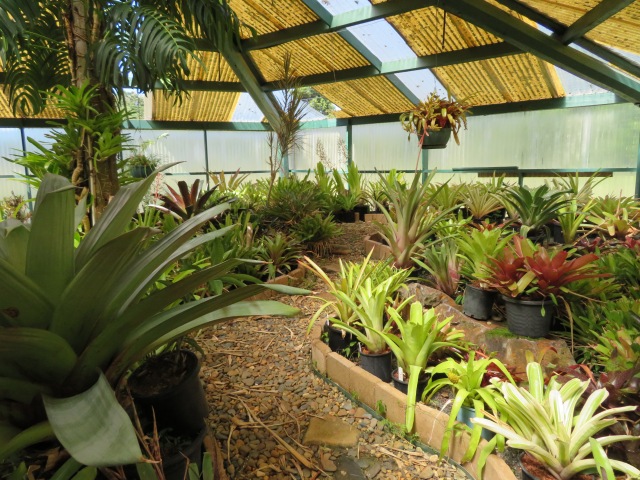
The ginger house:
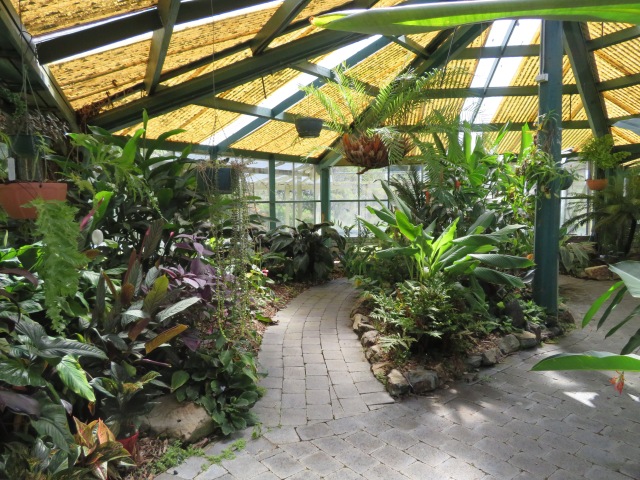
The orchid house:
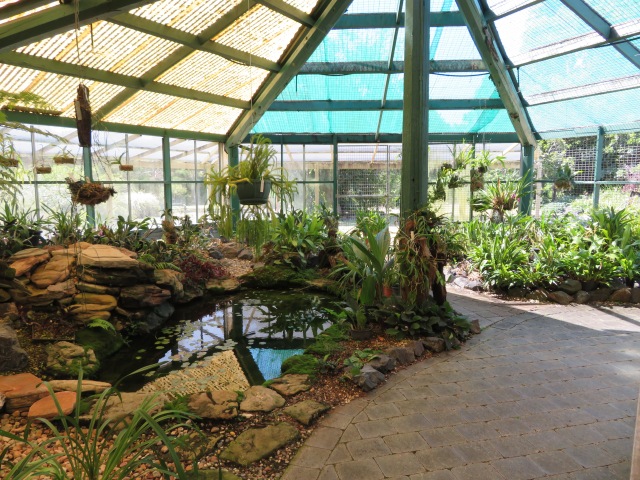
With a bonus flower I found tucked away:
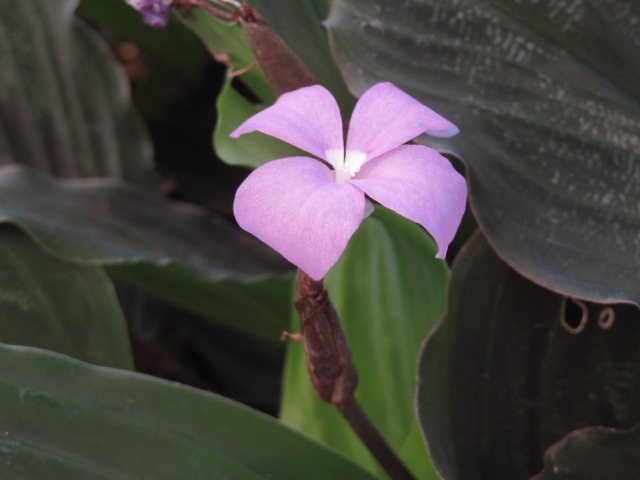
The arid house: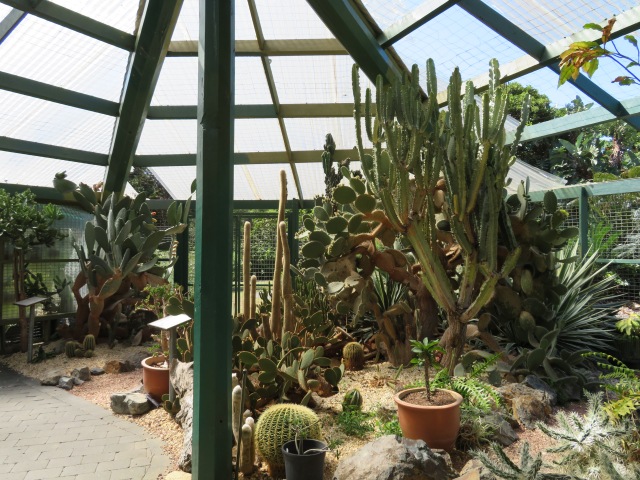
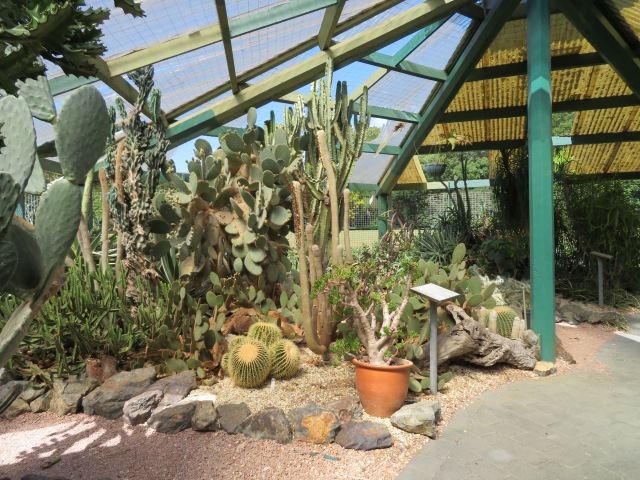
Some of the inhabitants I found interesting:
There was a funny-looking tree beside the glass houses, so I went to have a look. To my surprise, it turned out to be a Wollemi pine, Wollemia nobilis:
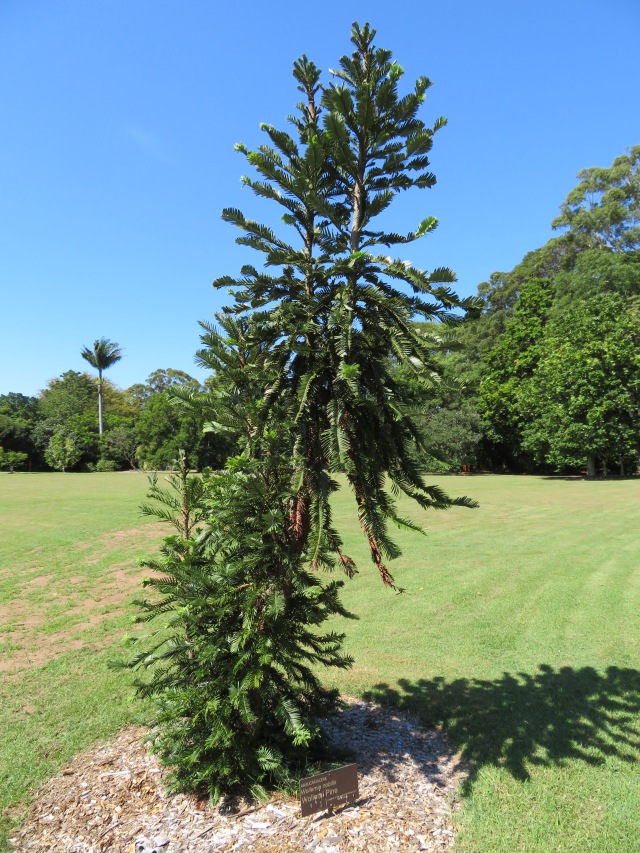
Close-up of the leaves:
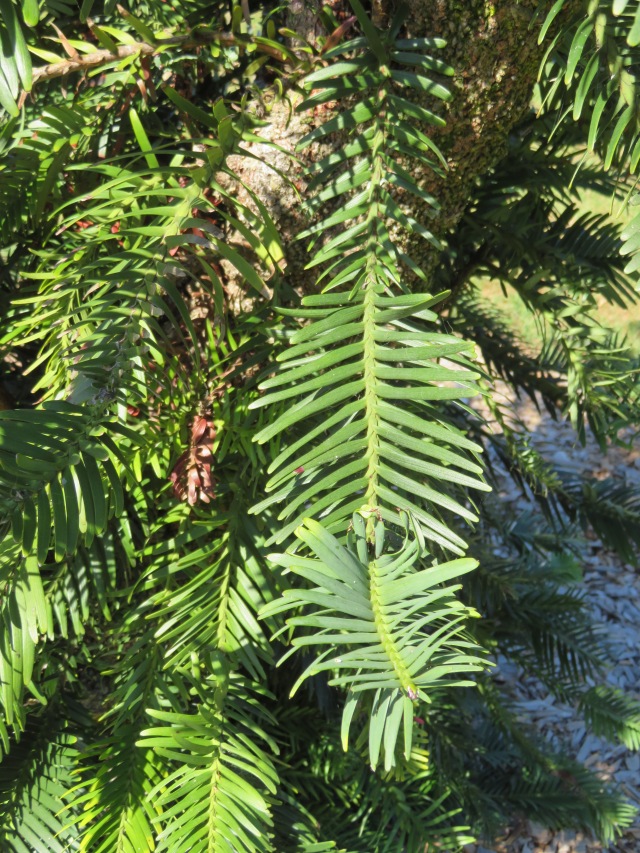
This is another genus that was known only through fossil records, with every species believed to have gone extinct around 40 million years ago. But in 1994, living specimens were discovered in a series of remote gorges north-west of Sydney, and they were named after the park they were discovered in – the Wollemi National Park. The oldest fossil of this tree is 200 million years old. Basically, this tree was around when the dinosaurs were and the species is still surviving today. Pretty crazy, huh?
I then wandered into the sensory garden, which was mainly based around smells, so there wasn’t a whole lot to photograph or video. Still, this is the entrance:
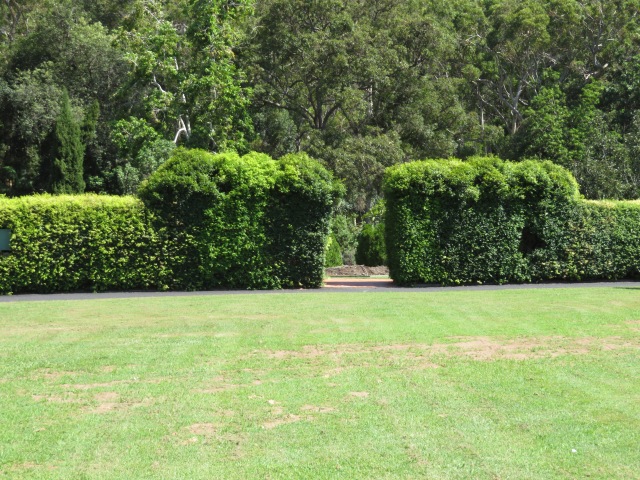
The garden itself:
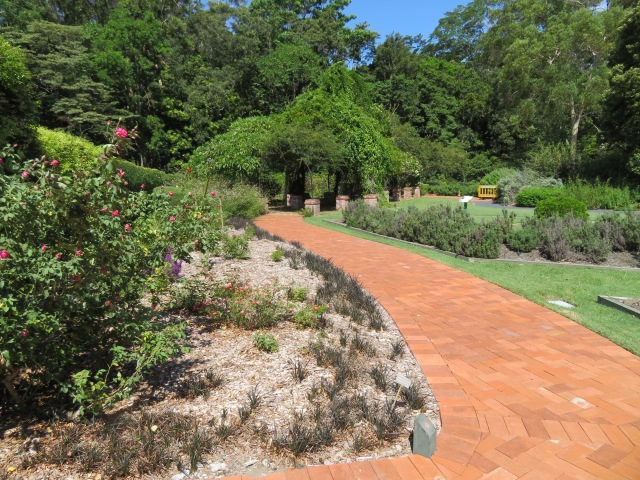
As you can see, there were some roses, but it was mainly lavender and other plants that smelled nice. Still, I took a photo of the roses – this one is called a sweetheart’s rose:
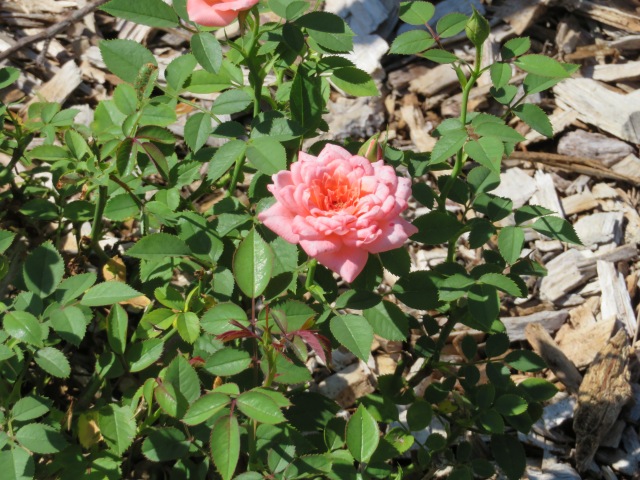
And there was this nice little green tunnel:
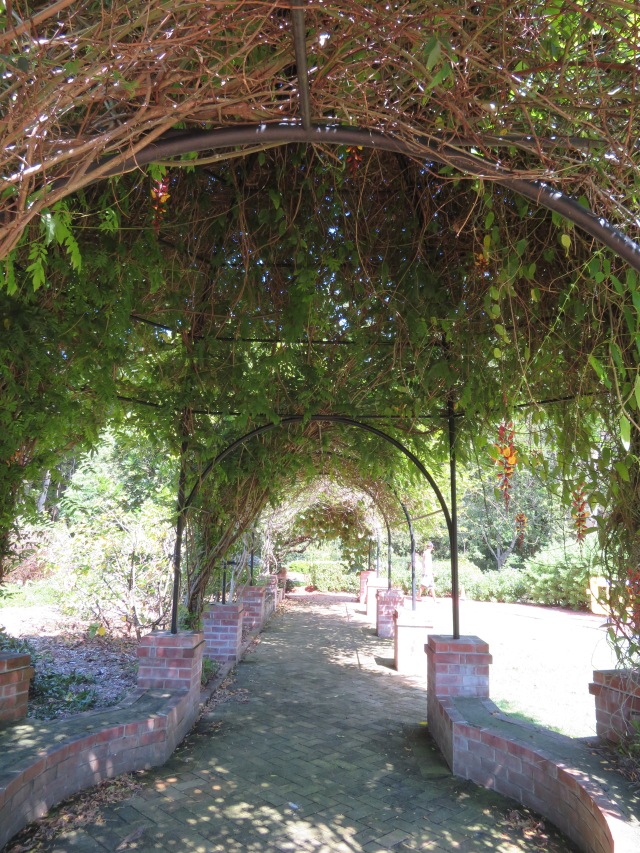
Now, this is in two parts, the top and bottom of a tree:
That tree is red cedar (Toona ciliate), basically what all the timber-cutters were after in the days of the early settlers. There’s not much of it left now in the wild, because it was logged so heavily.
Bolwarra, Eupmatia laurina:
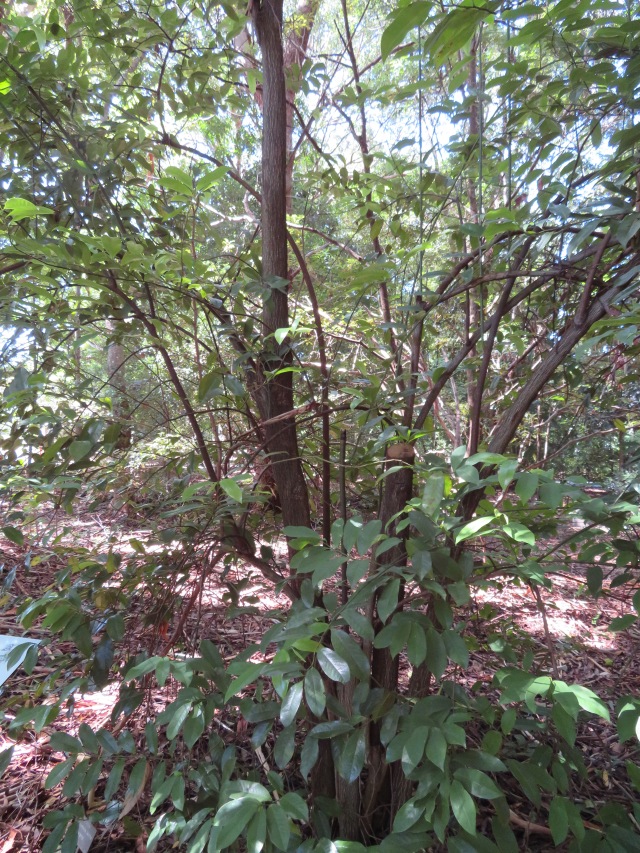
When in a forest, all the bolwarra trees will flower on the same day, though no one’s quite sure how this happens.
Now comes the rare and endangered trees. I spent a lot of time here, so there’s a lot of photos. This first one is red penda, Xanthostemon whitei, which is only found in high mountain rainforests in northern Queensland:
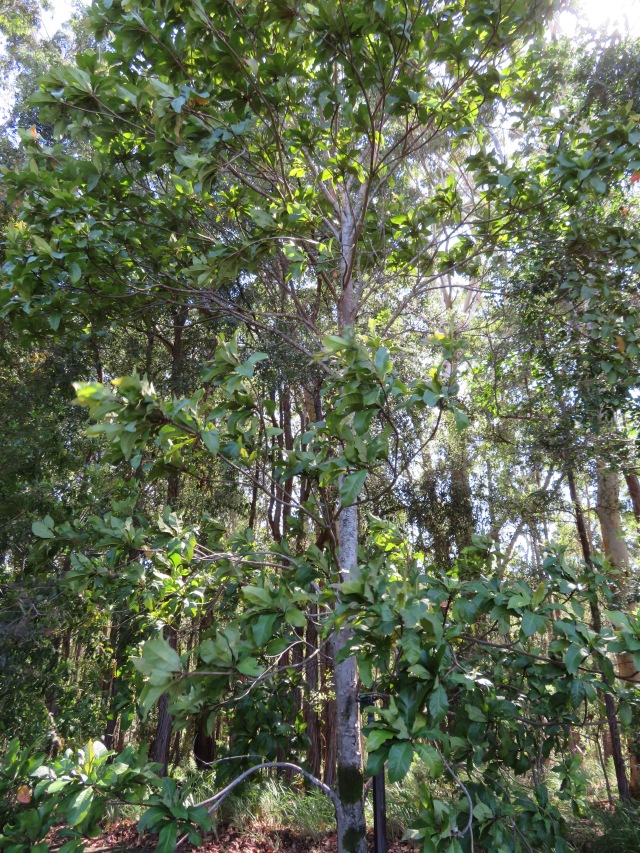
Iron range breynia, Breynia sp. ‘Iron Range’, found only in small patches of north Queensland:
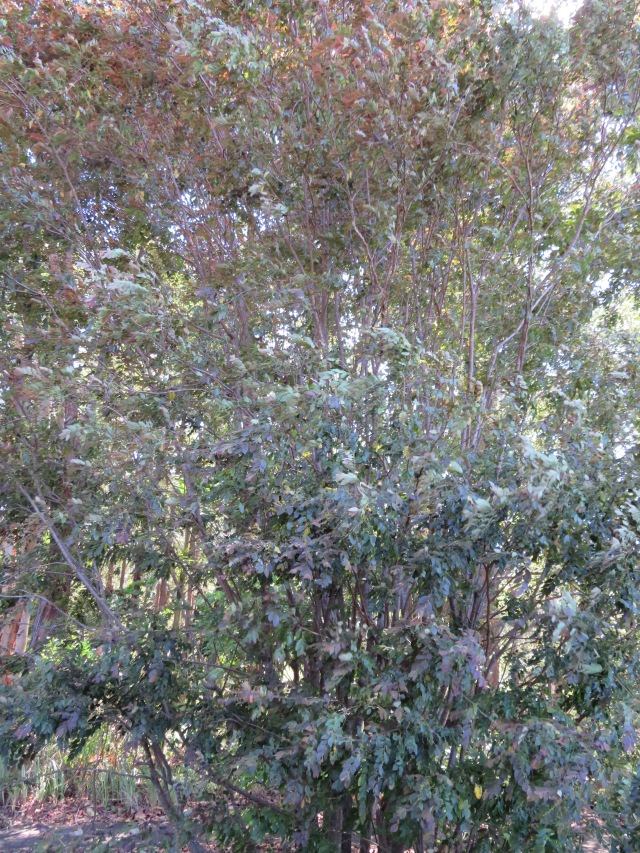
In case any of you are wondering, species or sp. just means it hasn’t been given a formal species name yet.
Brachychiton turgidulus, rare enough that it doesn’t have a common name, has only been found in dry rainforest in south-east Queensland:
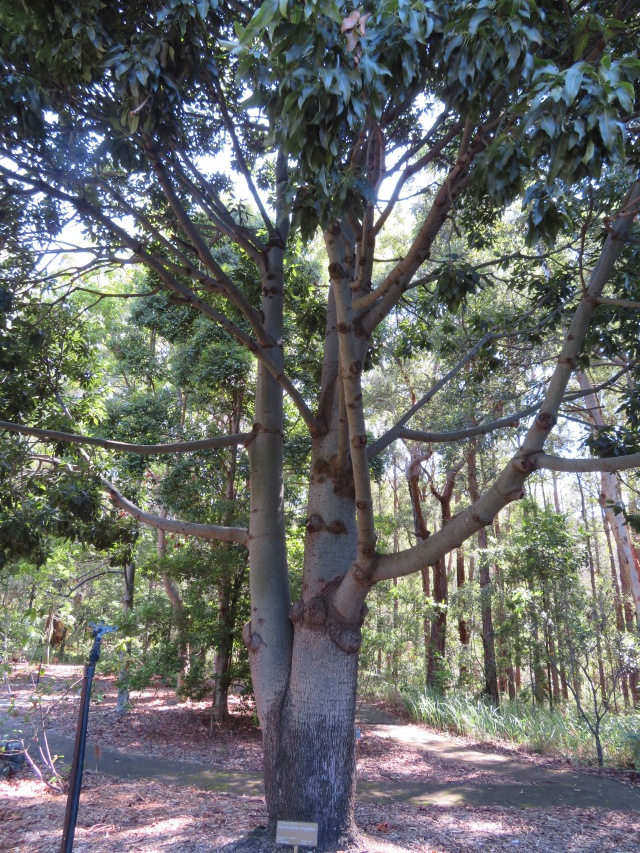
Zigzag grevillea, Grevillea flexuosa, found only in a small part of south-west Western Australia:
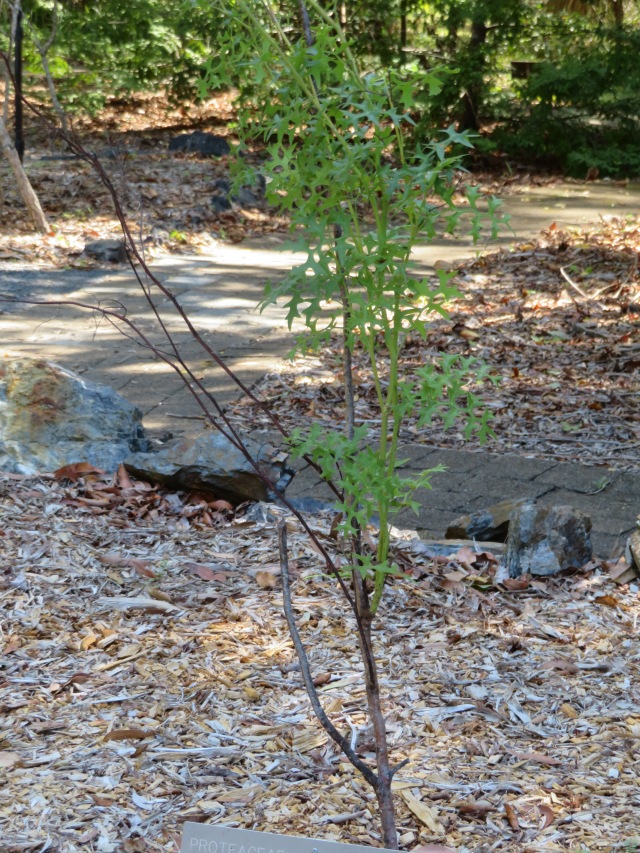
Tree waratah, Alloxylon flammeum:
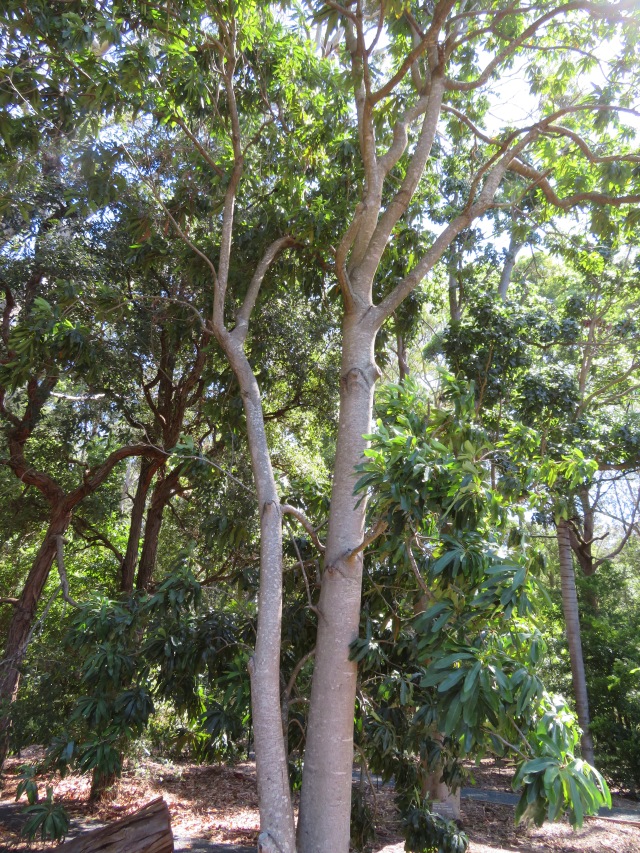
It used to be widely distributed on the volcanic soils of the Atherton tablelands, but with most of the area cleared for farming, it now survives only in a few protected remnants.
Grease nut, Hernandia bivalvis:
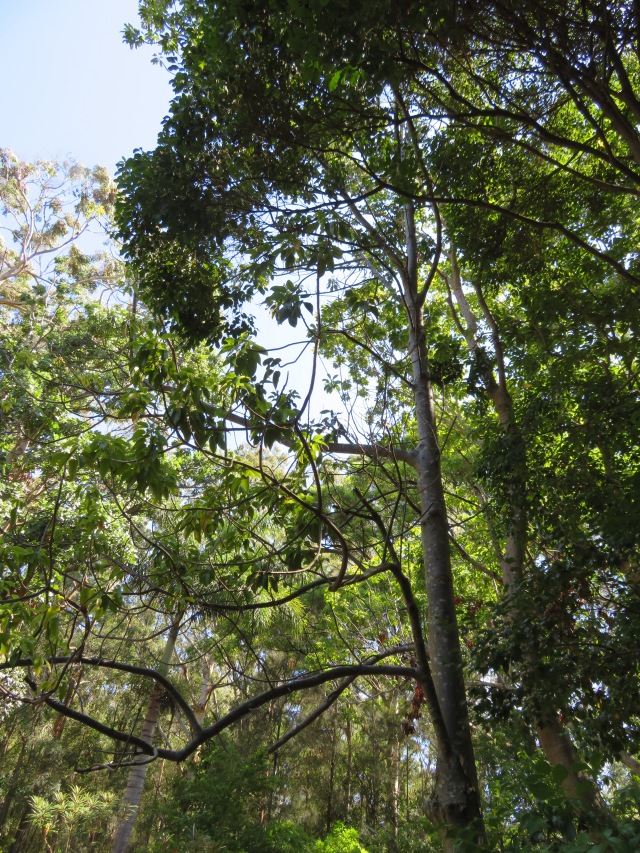
Like the tree waratah above, it grew on prime farming land and so was mostly cleared away.
Honeysuckle, Triunia robusta:
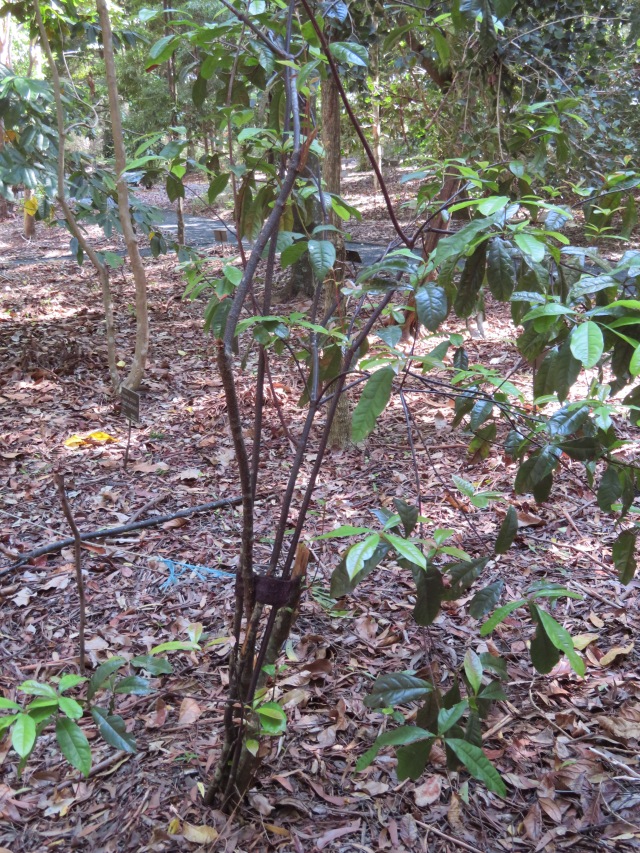
This species was believed extinct, but living specimens were recently discovered near Yandina in Queensland.
Milk bush, Neisosperma kilneri:
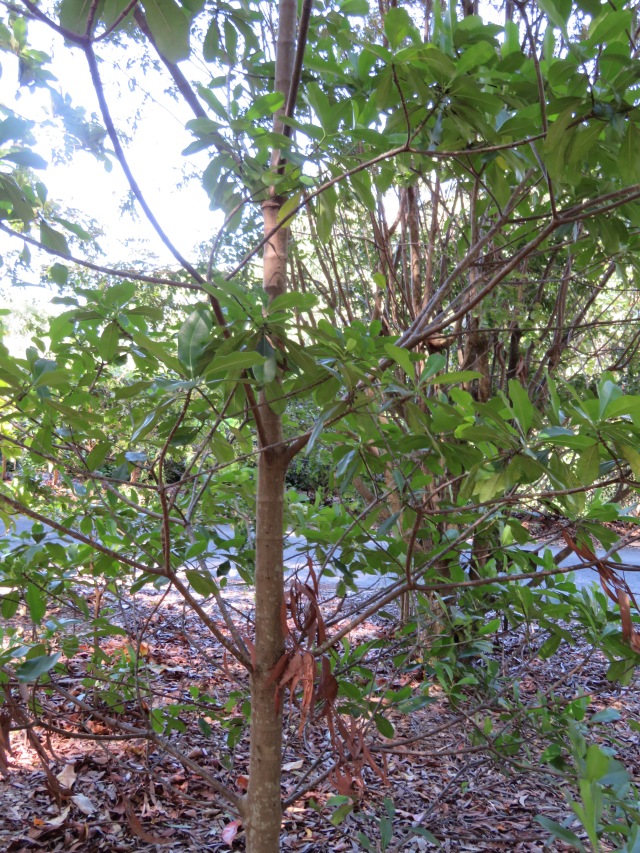
Its worldwide distribution extends from Proserpine to Sarina, or about a 2-hour drive along the highway.
Xanthostemon verticillatus:
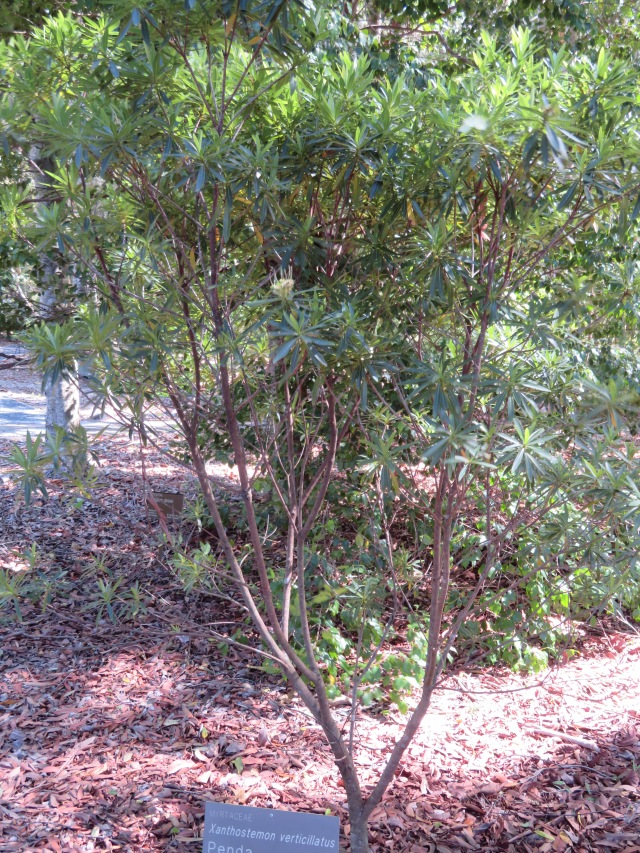
This species is found only along the Daintree River. Which is pretty weird to think about – just that river, and nowhere else in the world.
Pine Mountain Corkwood, Erythrina numerosa, now only found in a few dry rainforest remnants:
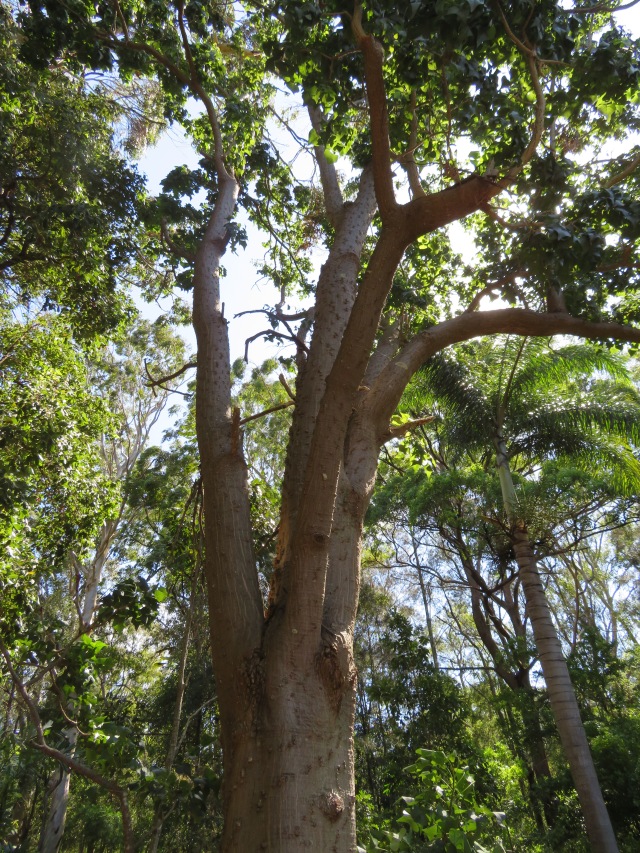
Elaeocarpus grahamii:
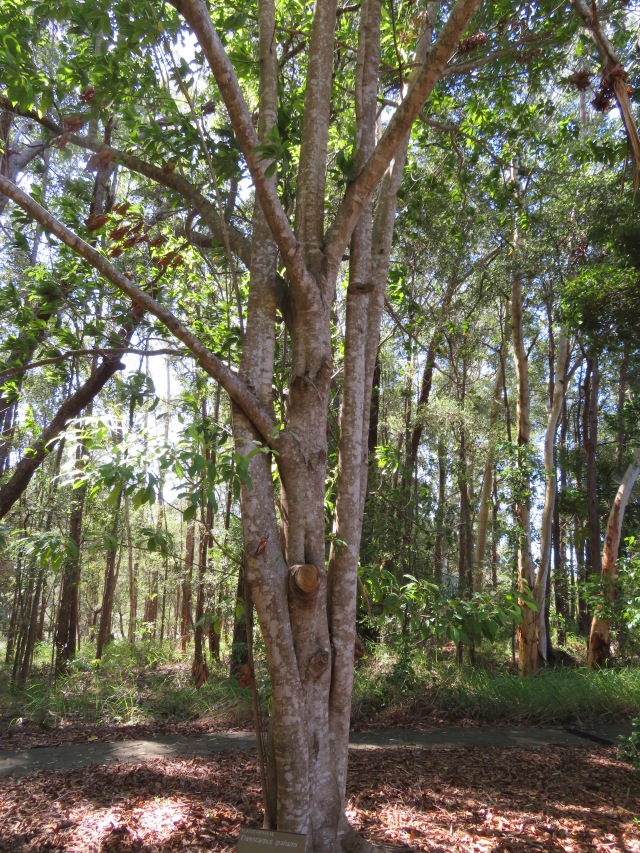
This was found in lowland tropical rainforest, most of which was – say it with me! – cleared for farming.
Mount Spurgeon black pine, Prumnopitys ladei, found only in high-altitude rainforests:
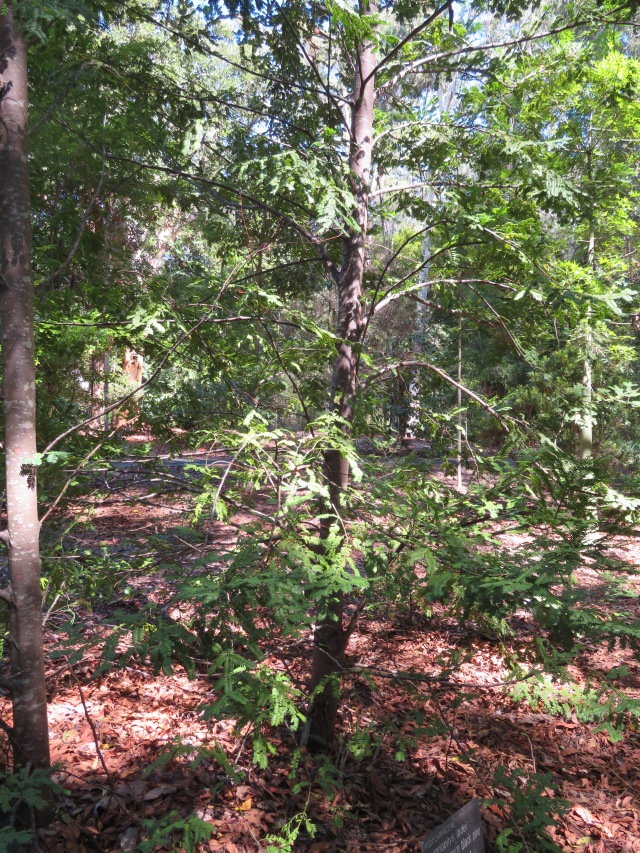
Actephila foetida:
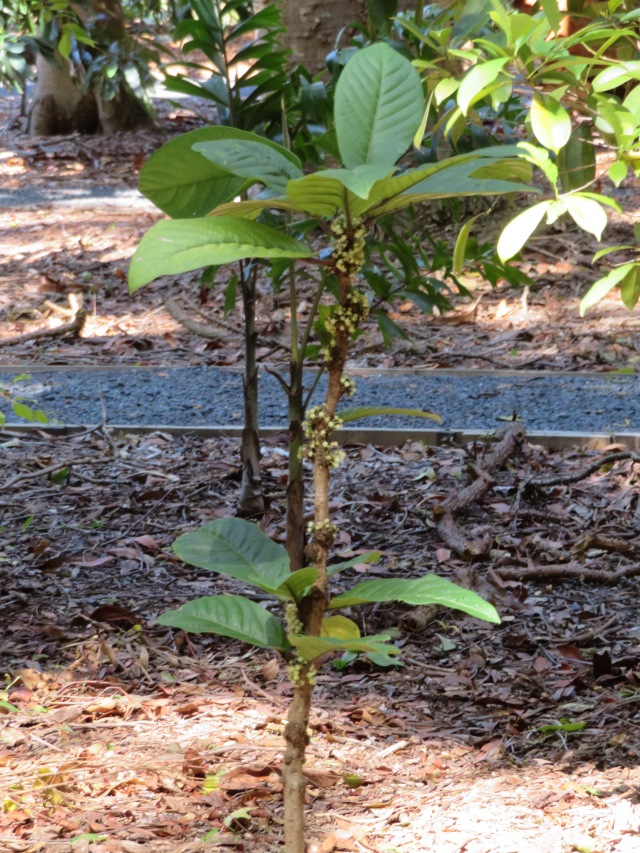
This is found only in Mount Bellenden Ker and Cow Bay, in Queensland.
Whitsunday bottle tree, Brachychiton compactus, only found in Airlie Beach, Proserpine and Hayman Island:
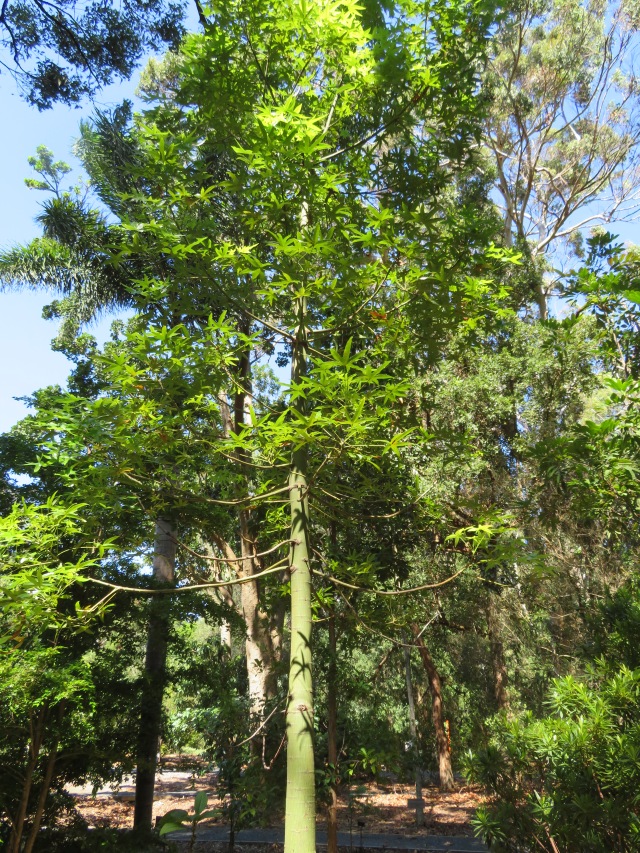
Tinaroo myrtle (you don’t get a scientific name because I couldn’t read it off the sign), which is named because it’s only found at Tinaroo, in Queensland:
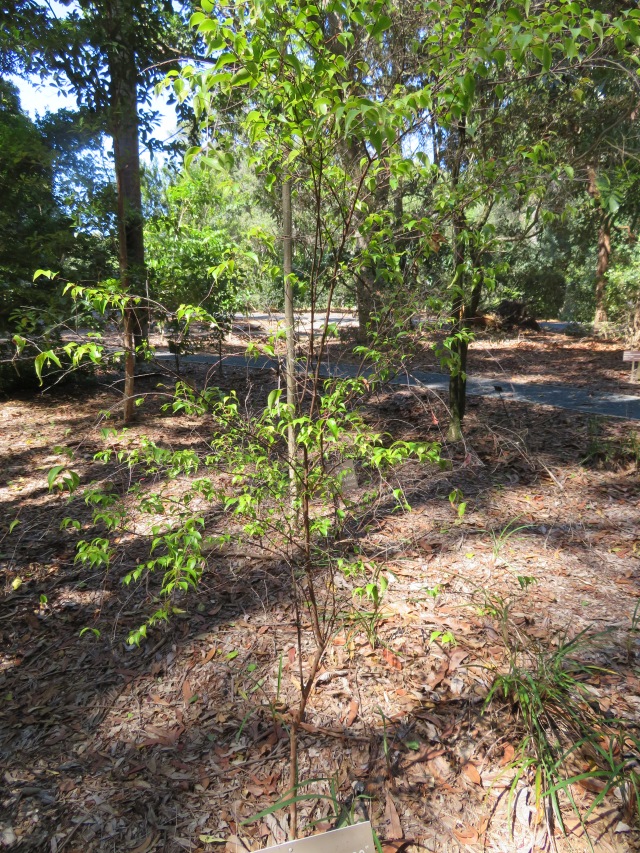
Apparently, it’s so rare even Googling the common name couldn’t get me the scientific one.
Fern-leaved tamarind, Sarcotoechia serrata:
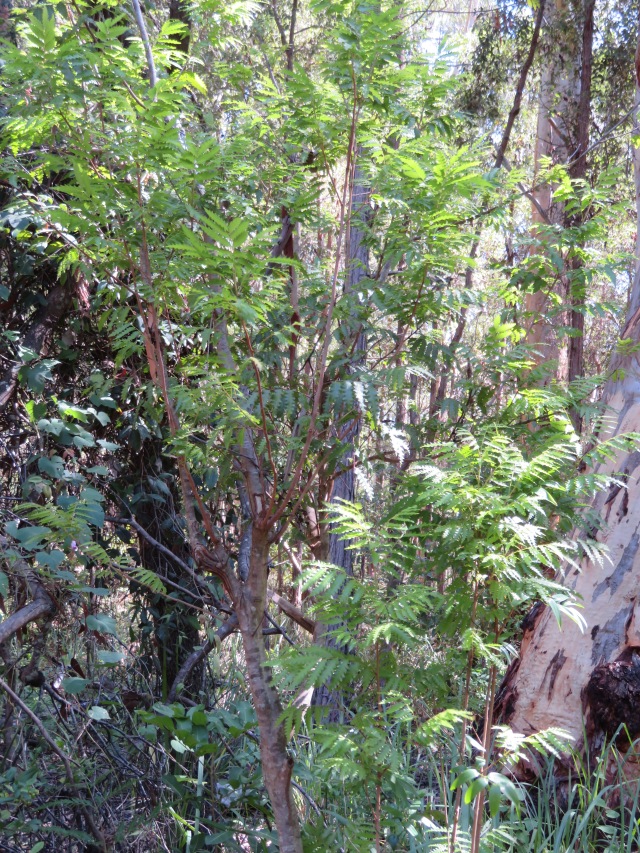
Another one with a restricted distribution. The fern-leaved tamarind is only found on the Atherton tablelands in north Queensland.
Black palm, Normanbya normanbyi, restricted to coastal tropical rainforest:
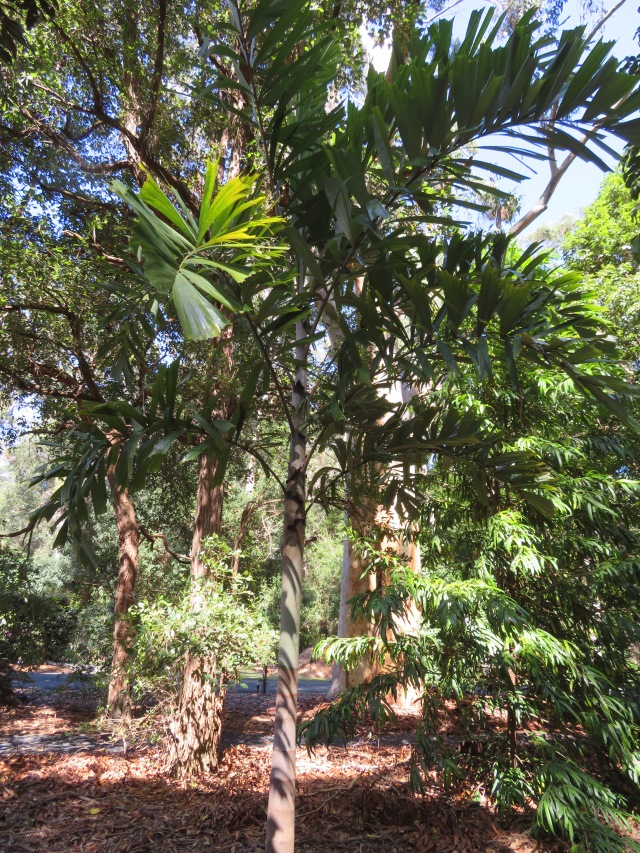
Onionwood satinash, Syzygium alliiligneum, found only in the lowland rainforests of north Queensland:
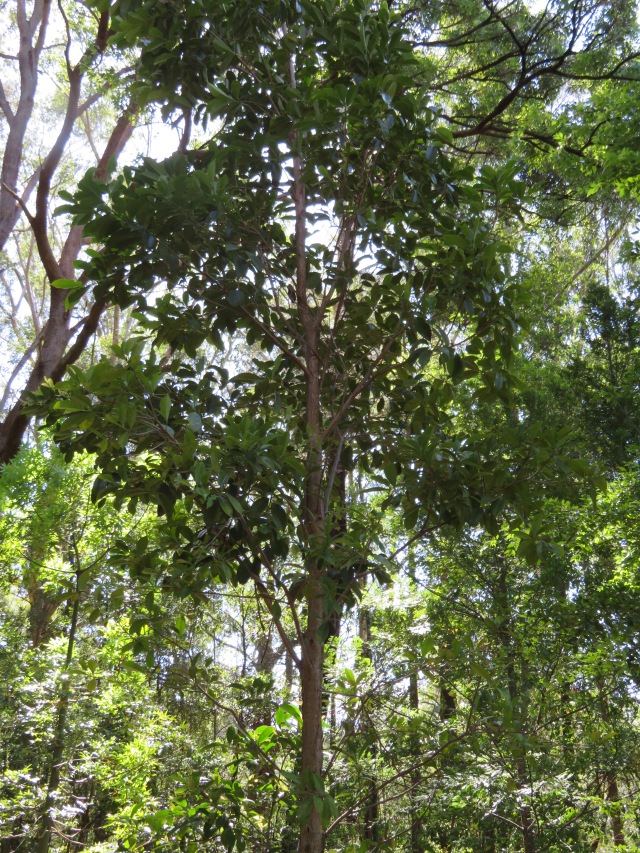
That was the first ‘rare and endangered’ section done, but there was another further along the path. I found a scribbly gum (Eucalyptus signata) along the way:
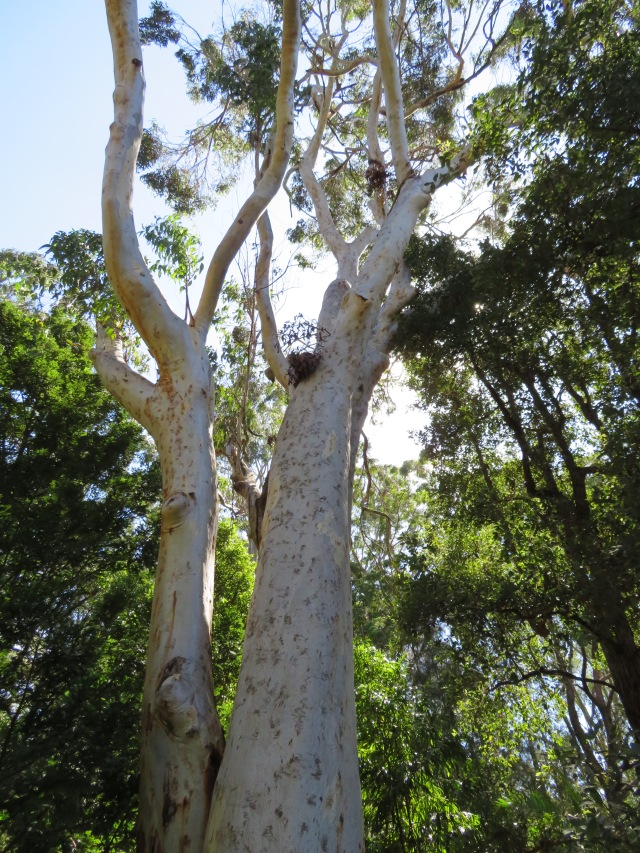
A close-up of the ‘scribbles’:
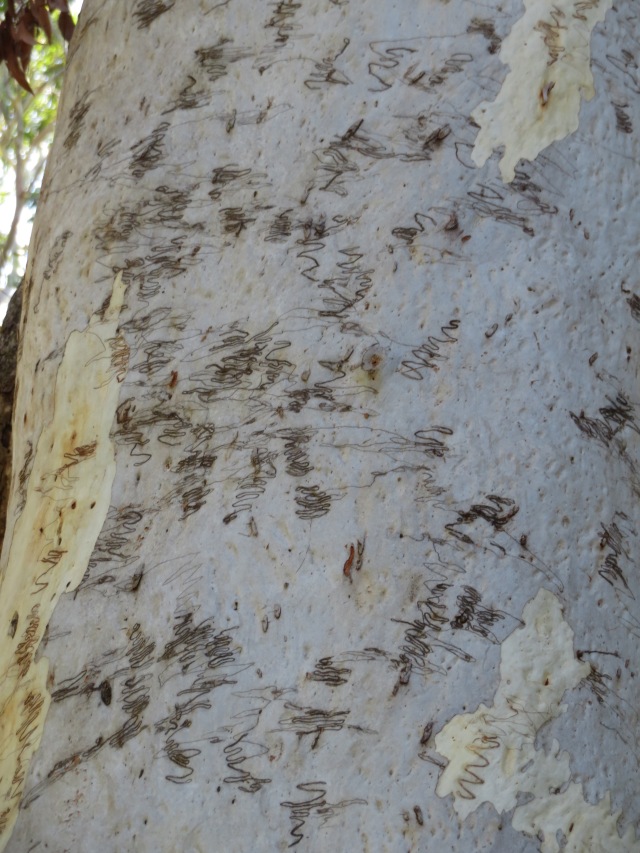
Those lines are made by the larvae of small moths tunnelling beneath the surface of the bark. You can’t deny it’s well-named, plus, it’s just fun to say. ‘Scribbly gum’ sounds like something Willy Wonka should have made.
I also checked out a turpentine (Syncarpia Glomulifera) tree:
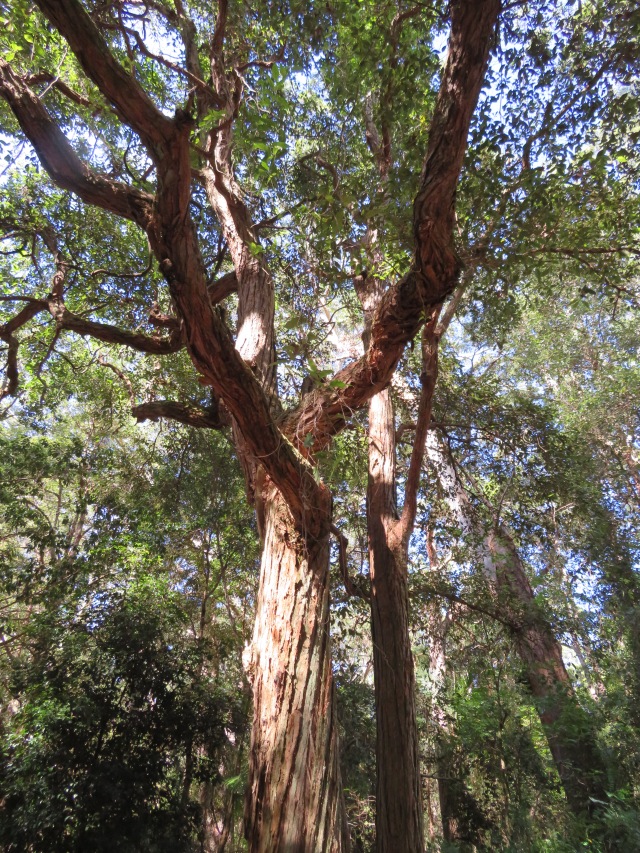
The crushed leaves smell like turpentine, which is where the name comes from. They also mentioned it tastes like turpentine, which is…well, I want to know which botanist got stuck with the job of figuring that out.
Now, back to rare and endangered! This is Lepiderema hirsuta, found in the Cape Tribulation area but now mostly cleared away:
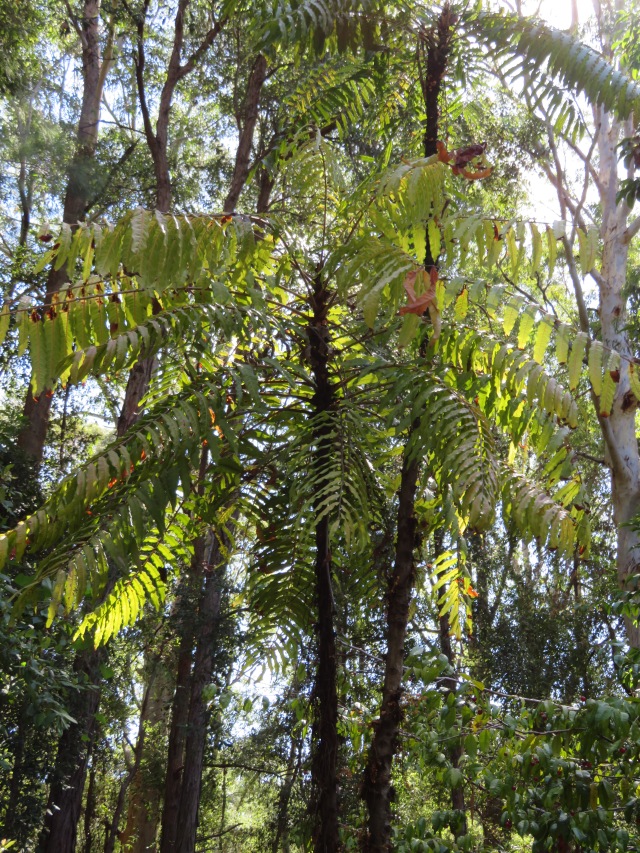
Daintree pine, Gymnostoma australiana:
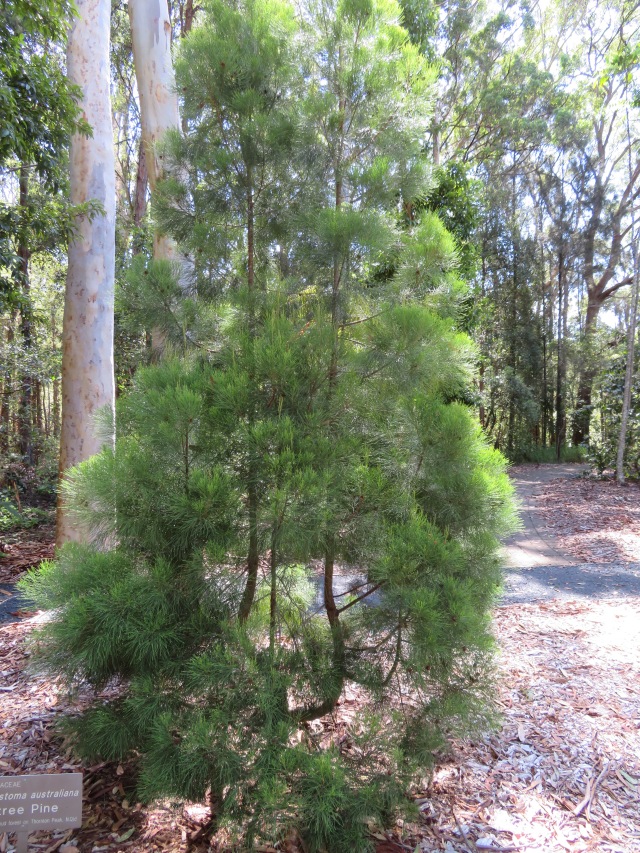
This is another one that’s rare because it has a tiny distribution – the cloud forest on Thornton Peak in Queensland. That’s it.
Wing-stemmed cherry, Syzygium alatoramulum:
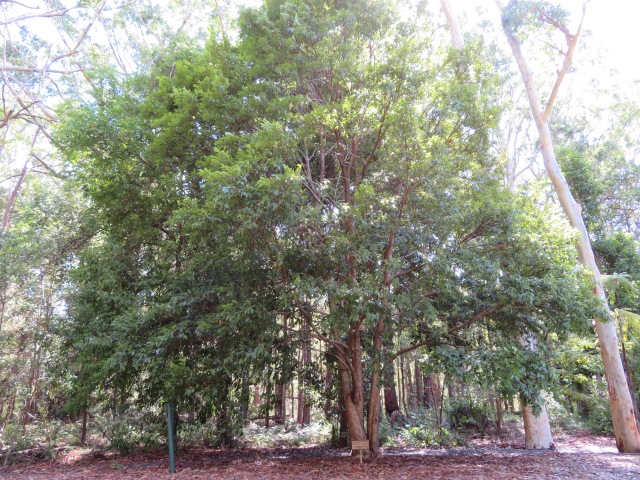
Found on granite in the north Queensland mountains.
Pink cherry, Austrobuxus swainii:
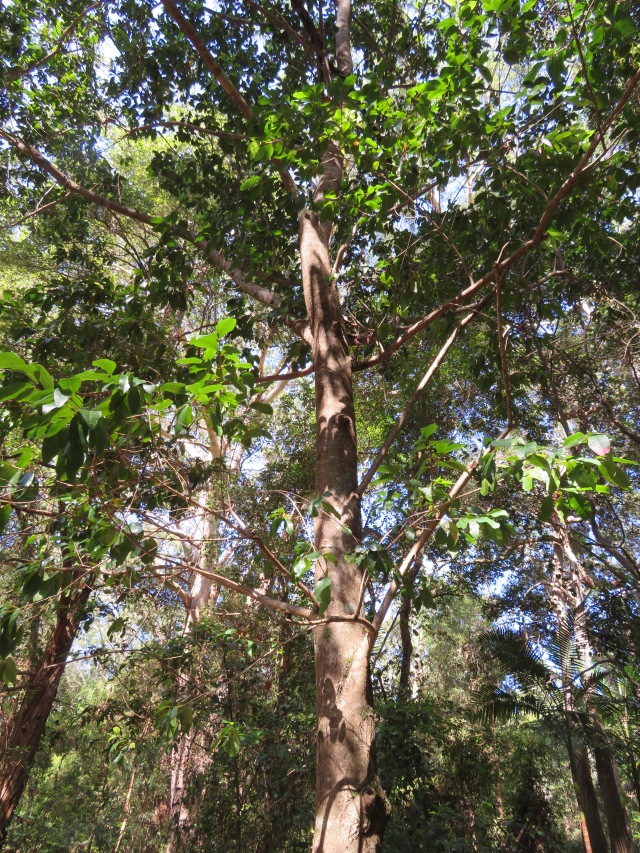
This one needs poor soil with high rainfall, and is found only in eastern Dorrigo and the Mount Warning volcano areas.
Moonee Quassia, Quassia sp. ‘Moonee Creek’:
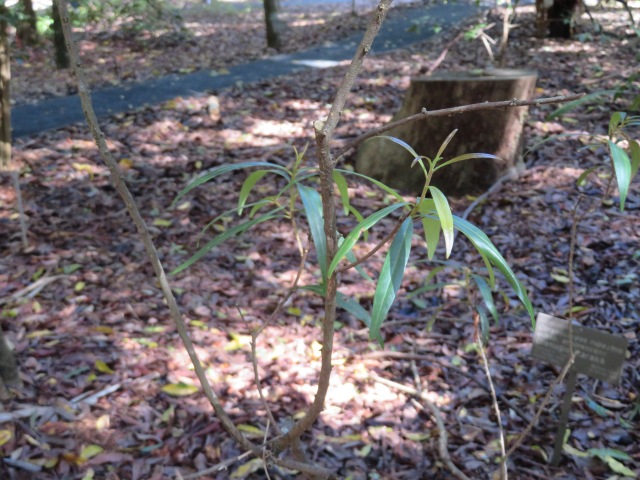
This shrub was originally fished out of an ash heap next to the Dorrigo railway line, it’s now only known from 18 locations across 12 kilometres.
Ball nut, Floydia praealta:
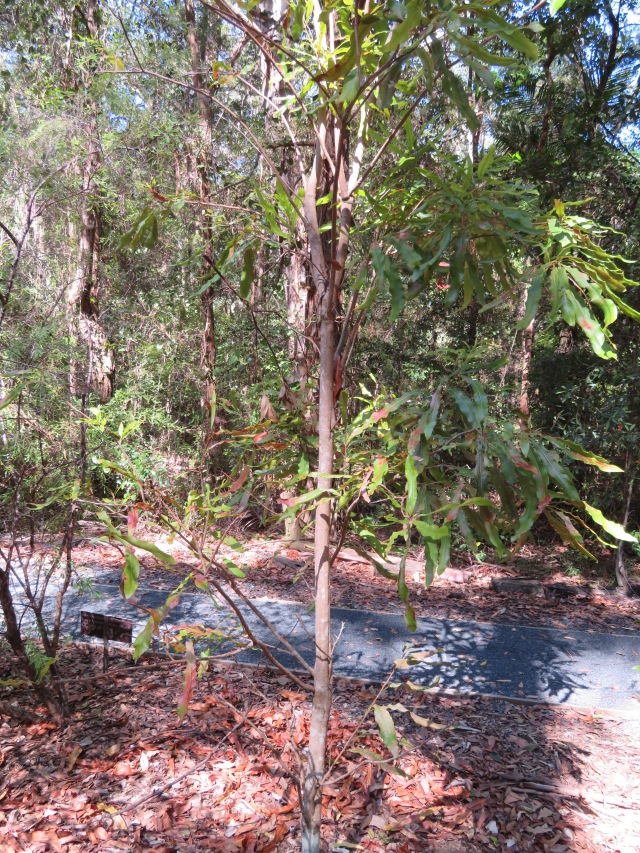
Another one that liked rich, fertile soils in Queensland rainforest and so got cleared away for farmland.
Minyon Quandong, Elaeocarpus species A:
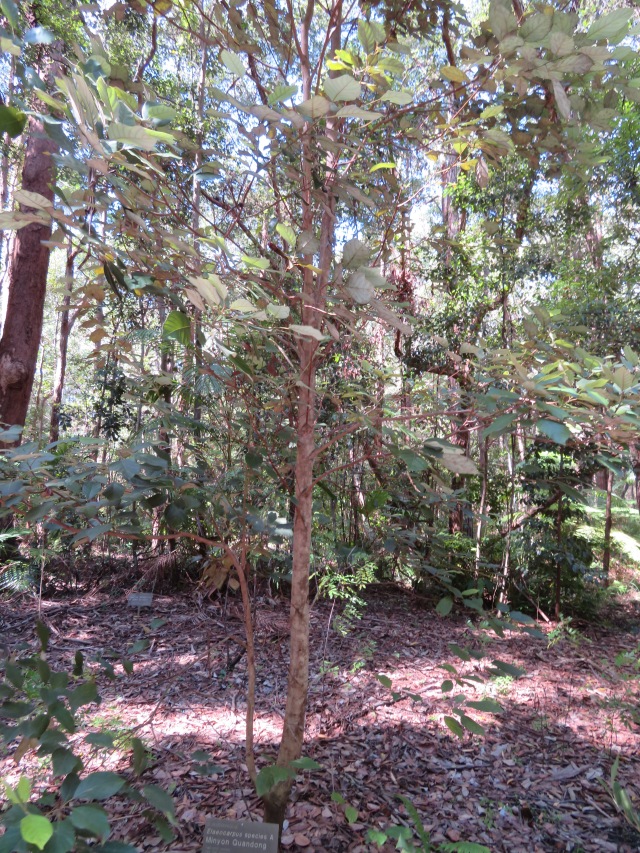
This tree is found only two small patches – Rocky Creek Dam and Nullum State Forest – one of which has been damaged by logging.
Coast Fontainea, Fontainea oraria:
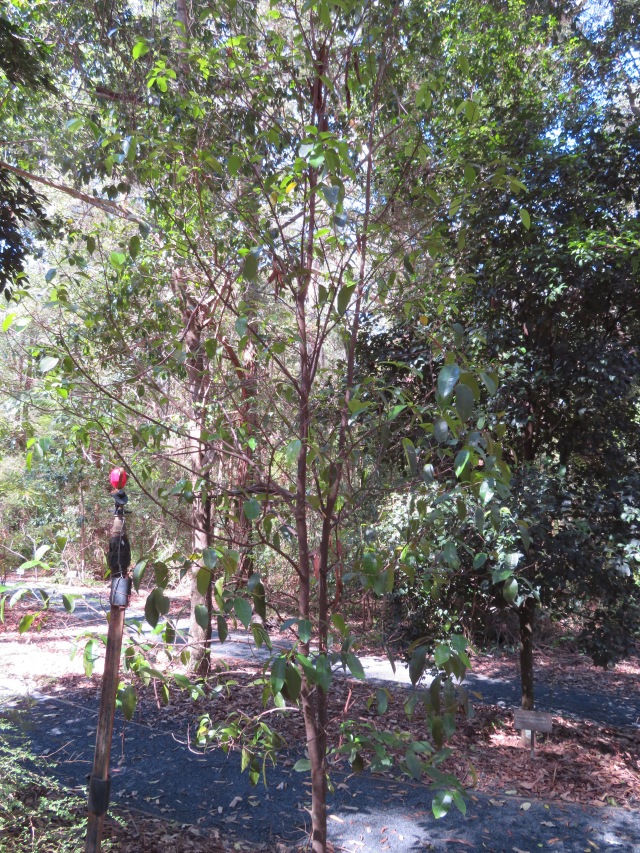
This species is known from only 10 plants growing on private property at Lennox Head in New South Wales. It’s a bit crazy to think that there are only ten ‘wild’ plants from this species in the whole world.
Headland cockspur flower, Plectranthus cremnus, found only in the Bonville, Evans and Lennox Headlands, in rock crevices:
Glenugie Karaka, Corynocarpus rupestris arborescens, only grows at 7 sites on boulder, steep mountain slopes:
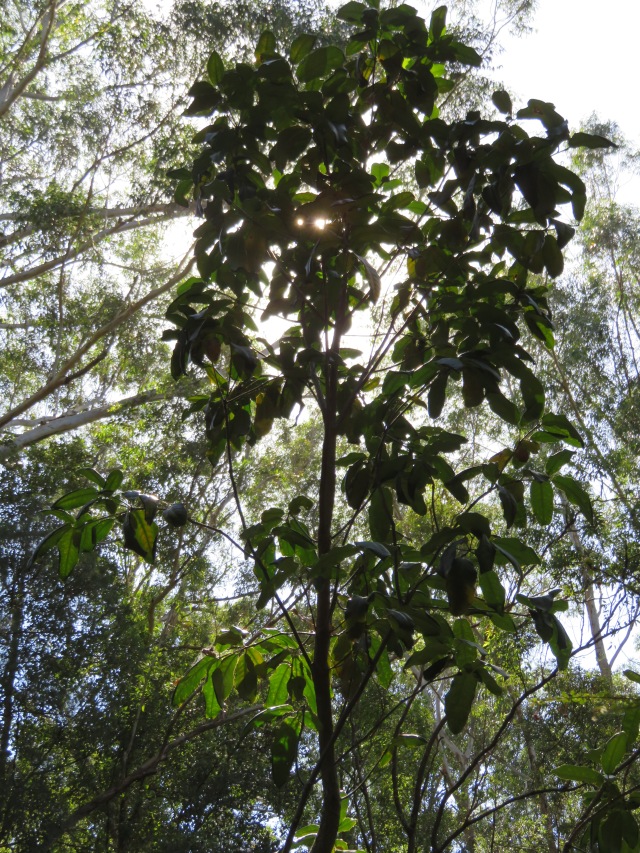
This is the other subspecies, Corynocarpus rupestris rupestris, which consists of a few small trees on Glenugie Peak in New South Wales:
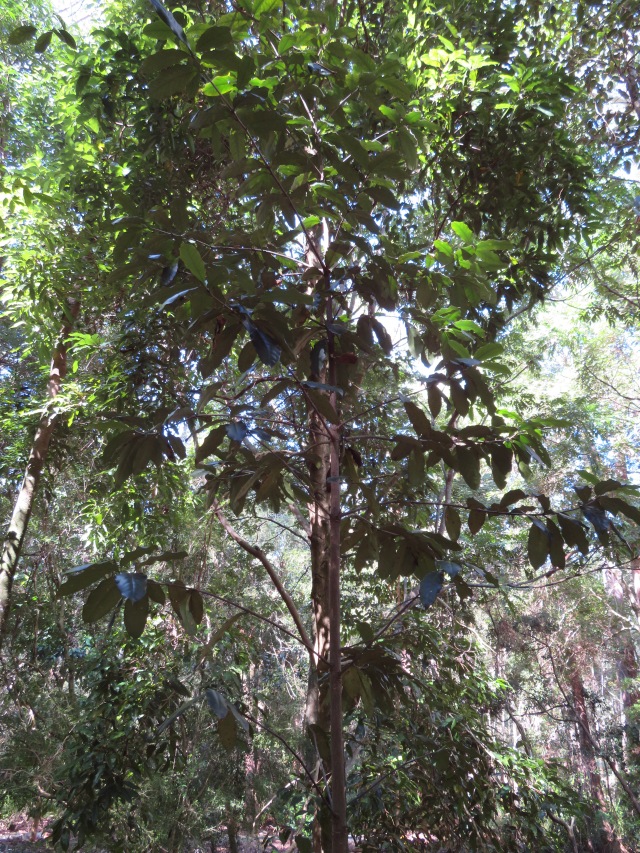
Guthrie’s Grevillea, Grevillea guthrieana, confined to only two locations near Booral in New South Wales:
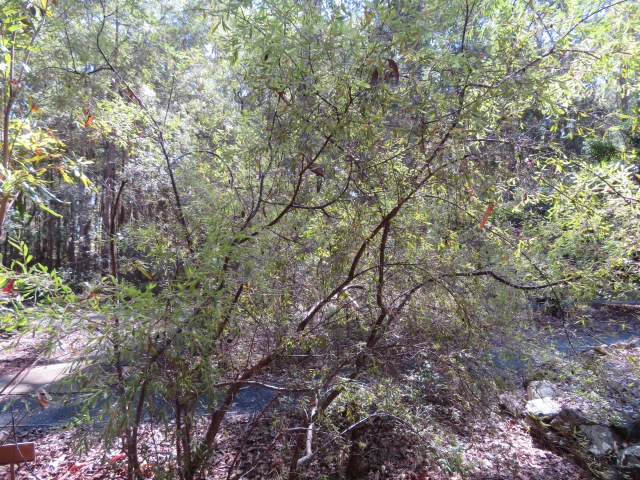
Crowded banksia, Banksia conferta penicellata:
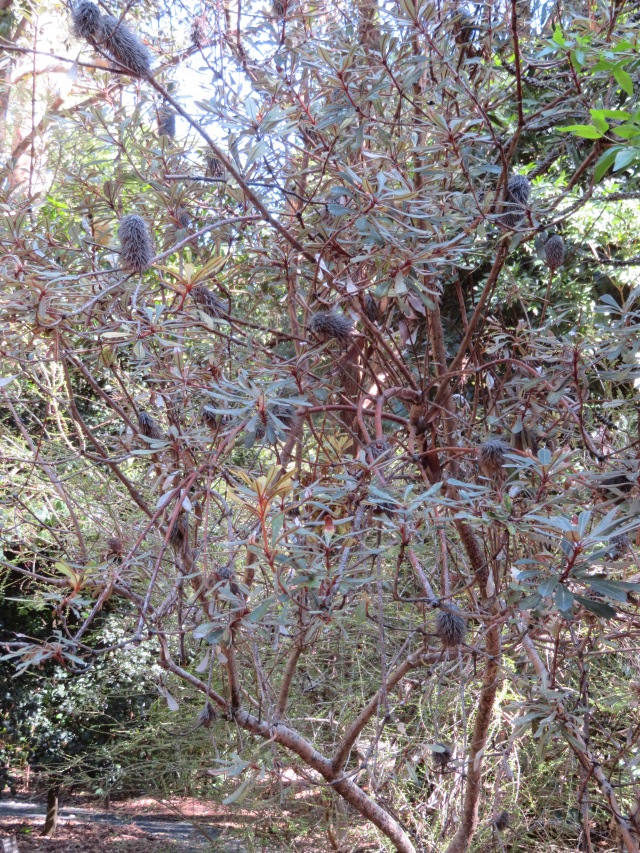
This one is found only in sandstone cliffs in the Blue Mountains.
Pointed bottlebrush, Melaleuca flammea:
This particular bottlebrush is only found on a few dry, rocky slopes from Grafton to Bulahdelah in New South Wales.
Dwarf Cypress Pine, Callitris monticola:
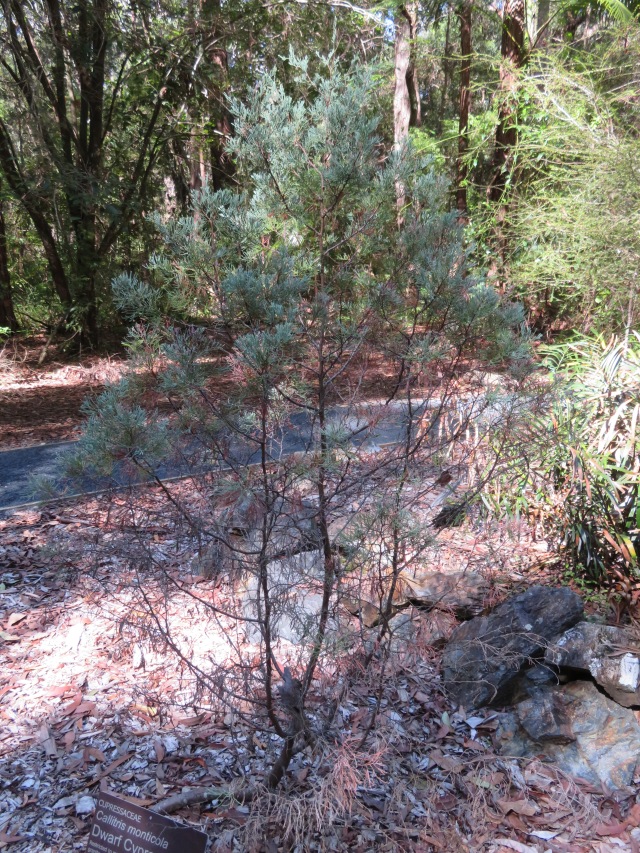
Its distribution is from Girraween in Queensland to the Gibraltar Range in New South Wales. More substantial than some of these others, but that’s still a pretty small spot for your worldwide distribution.
Southern Ochrosia, Ochrosia moorei, has only a few trees remaining in each of the major Big Scrub remnants:
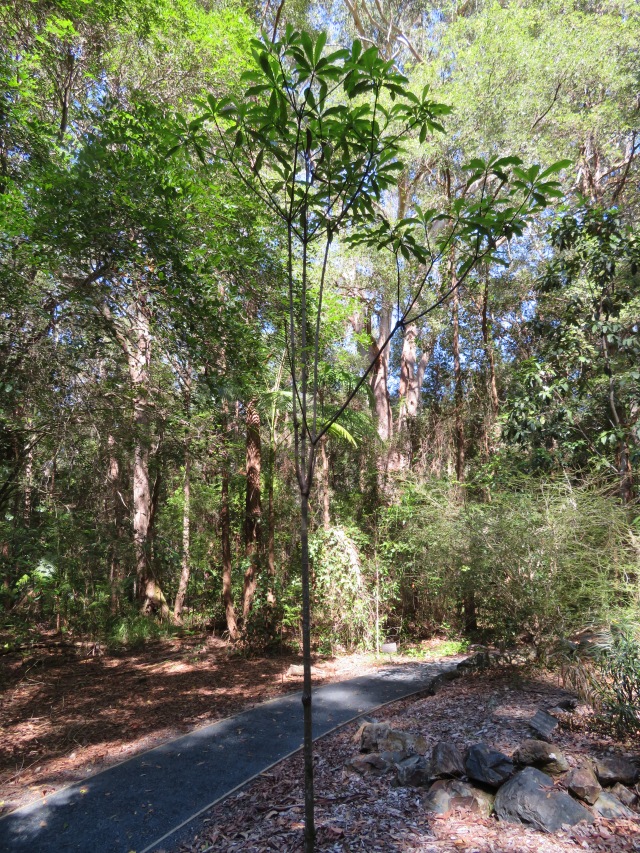
Scented Acronychia, Acronychia littoralis:
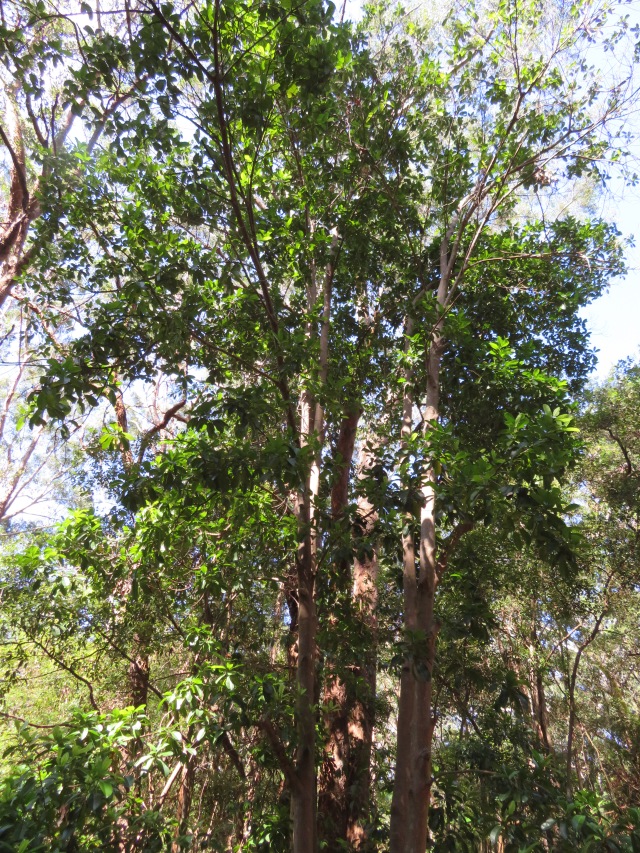
This tree is limited to about 20 specimens in rainforest areas in New South Wales that were largely destroyed by mining and development.
Small-leaved tamarind, Diploglottis campbelli, restricted to the Tweed and Currumbin valleys, with some occurring in Richmond valley:
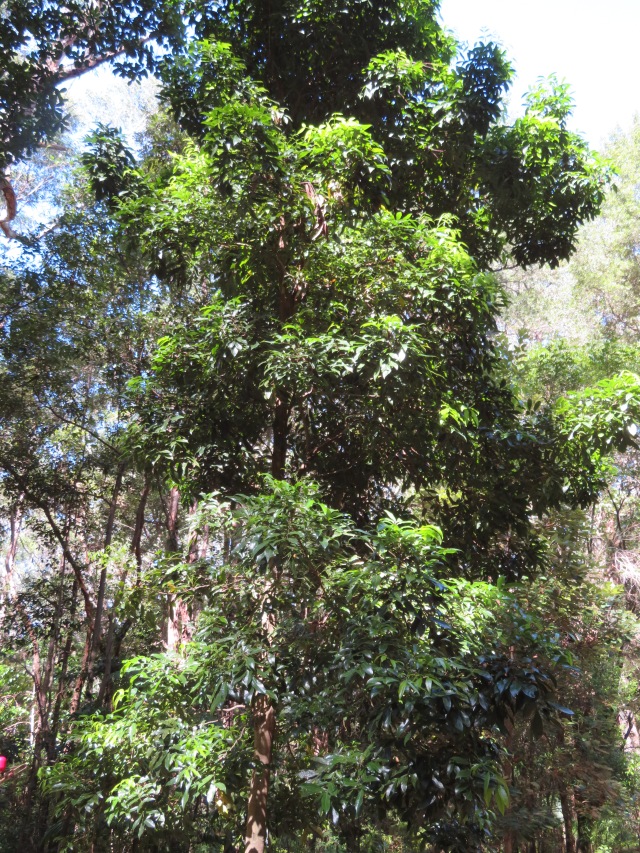
Smooth Davidson’s plum, Davidsonia johnsonii:
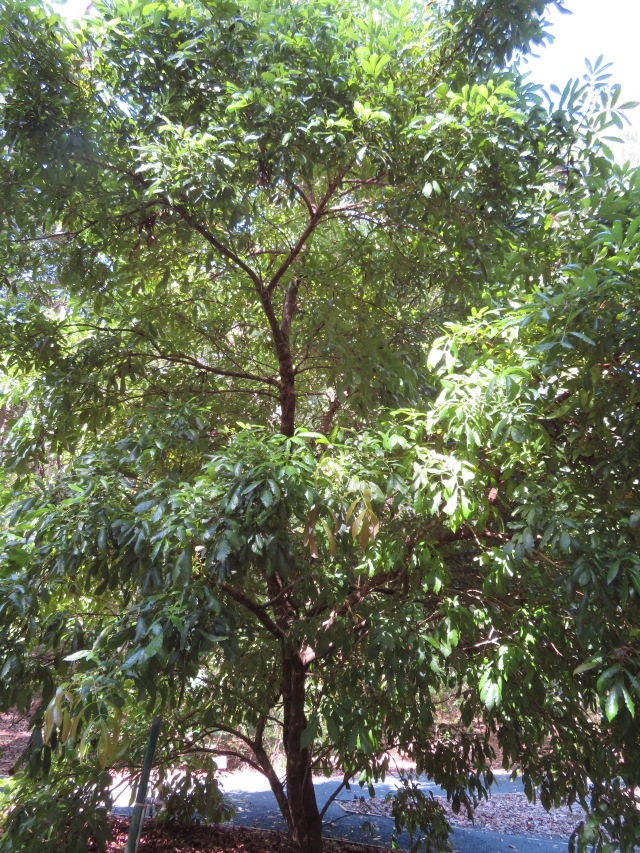
Found in only 10 locations, all the seeds it produces are infertile, so this tree can only be propagated from cuttings or via division. Makes you wonder how that happened – what weird mutation screwed up their seeds?
Tasmanian Cypress Pine, Callitris oblonga parva:
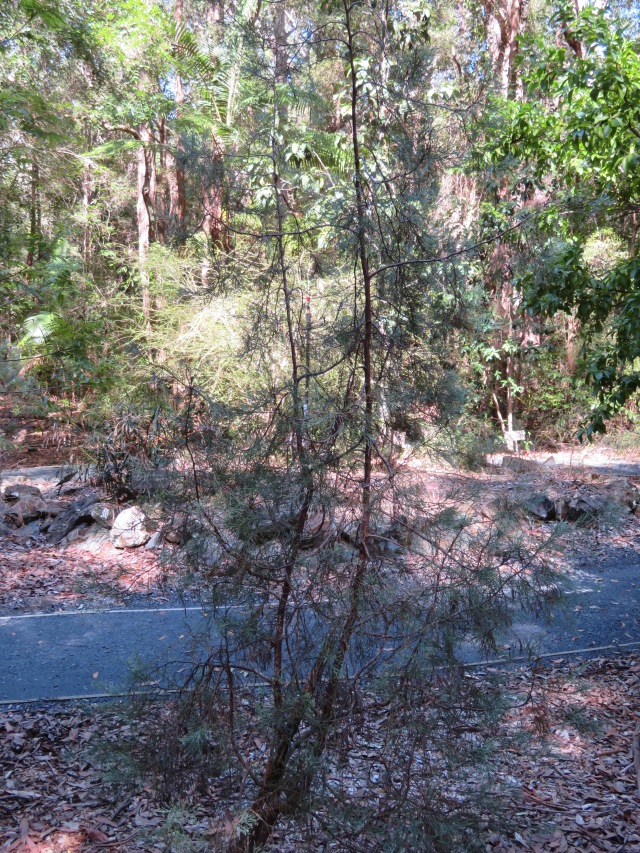
In spite of the name, this subspecies occurs only in Werrikimbe National Park in New South Wales.
Pineapple palm, Macrozamia johnsonii:
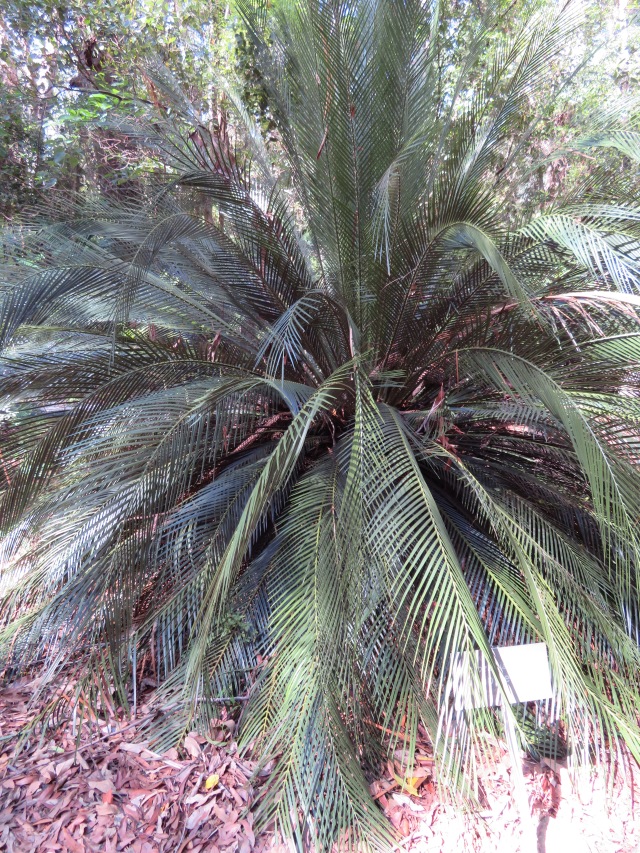
Popular as a decorative plant, in the wild they’re only found in a forest west of Grafton in New South Wales.
Silverleaf, Argophyllium nullumense, found only on Mt. Warning:
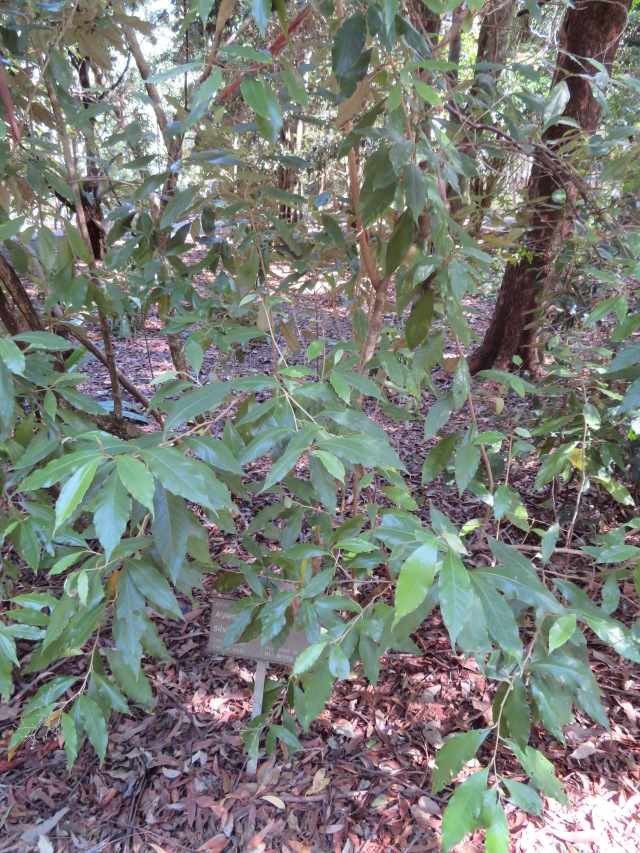
Crystal Creek Walnut, Endiandra floydii:
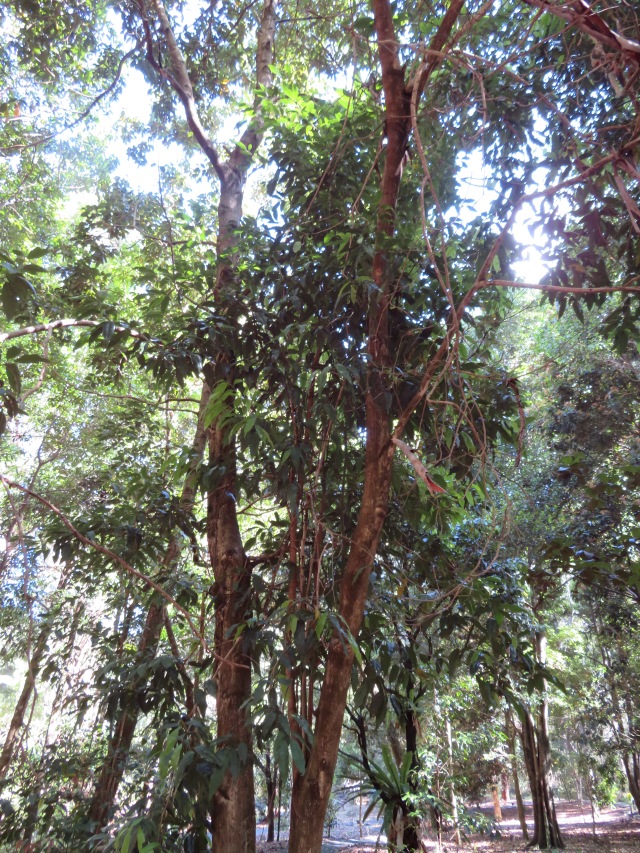
Despite the name, this is a laurel and isn’t actually related to any of the walnut family. In the wild, only about 20 trees are known in the Mt. Warning area, all of them on old farms.
Phillip Island Hibiscus, Hibiscus insularis:
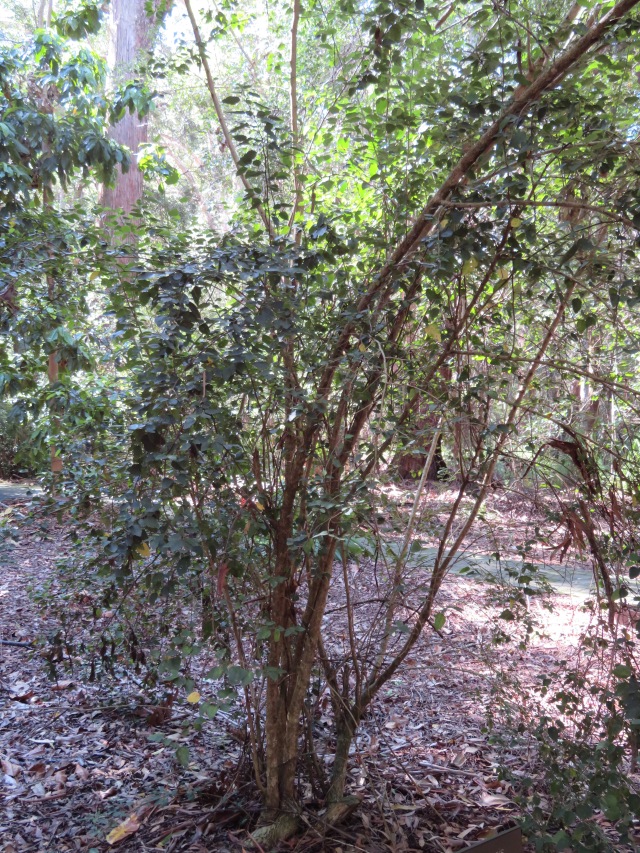
As the name indicates, this hibiscus is found only in two small patches on Phillip Island.
Idiot Fruit, Idiospermum australiense:
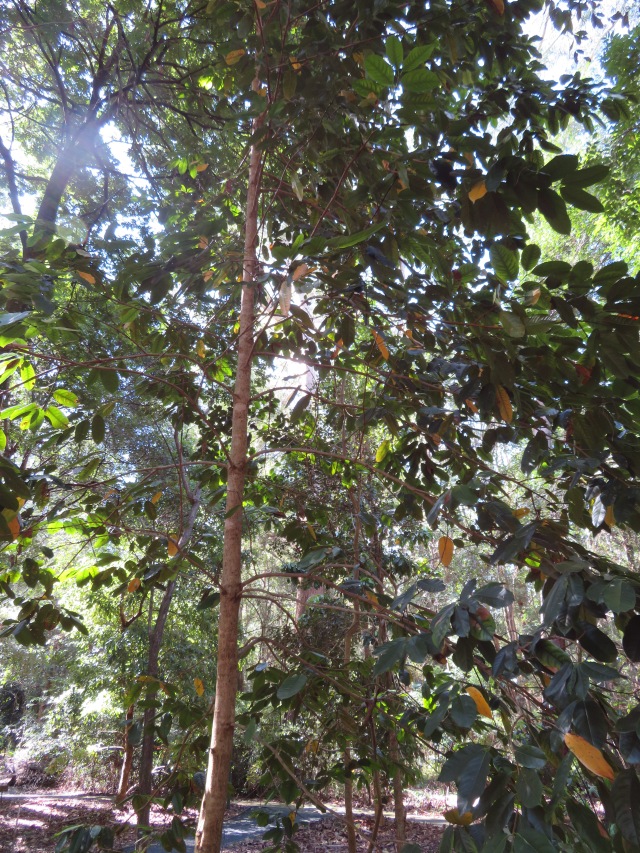
The only species in the entire genus, they’re one of the earliest known lineages that branched out from the first flowering plants. The scientific name is where they get their common name from, not a comment on anyone’s intelligence. The species is approximately 120 million years old, and today is only found in the Daintree region.
Bahr’s Scrub Fontainea, Fontainea venosa, known only from the Logan-Beenleigh area:
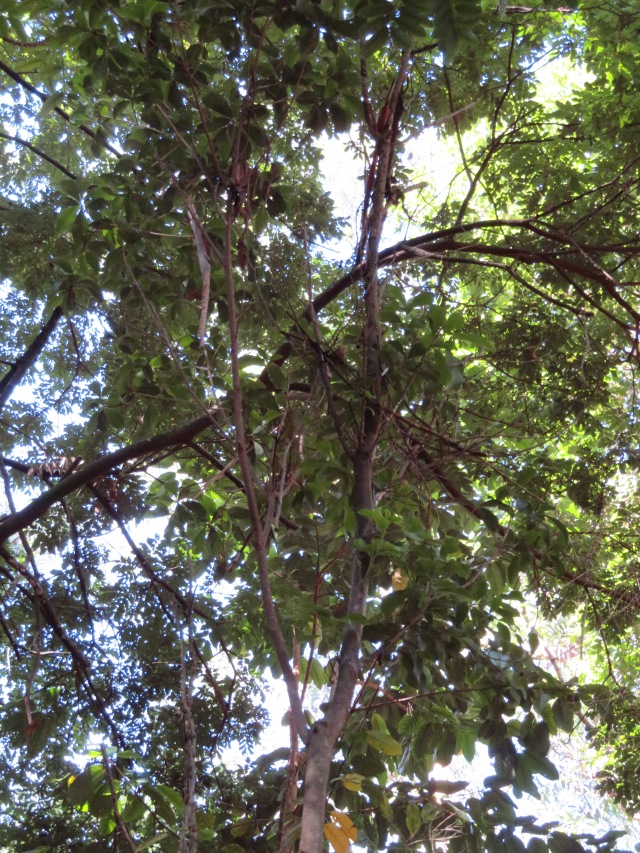
Small-flower laceflower, Archidendron muellerianum:
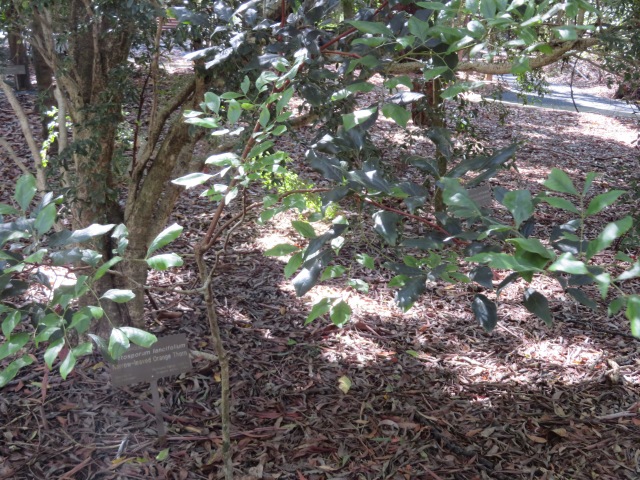
This grows largely in the Gold Coast hinterland, and much of it was cleared for agricultural purposes.
Bacon wood, Archidendron lovellae:
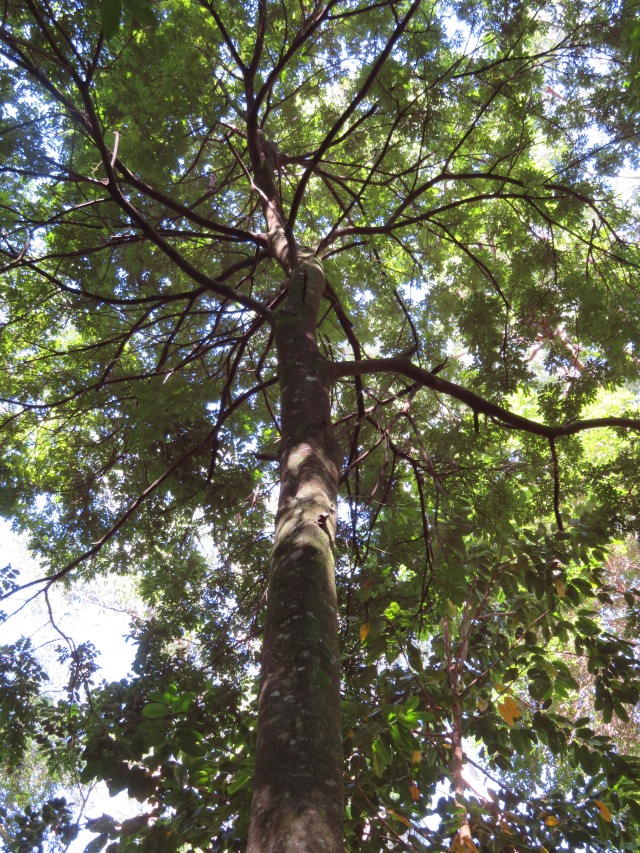
Another one that grew in small patches of rainforest around Gympie, and was mostly cleared out.
Wild may, Kunzea flavescenes, is only found at two rocky outcrops in Queensland:
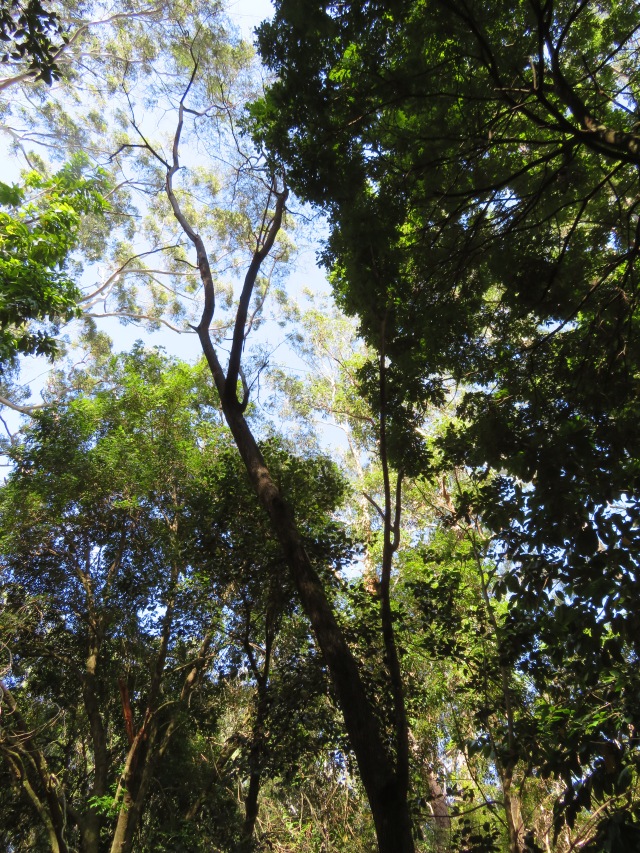
Cliff malletwood, Rhodamnia whiteana, found only in hoop pine forests in the Queensland-New South Wales border ranges:
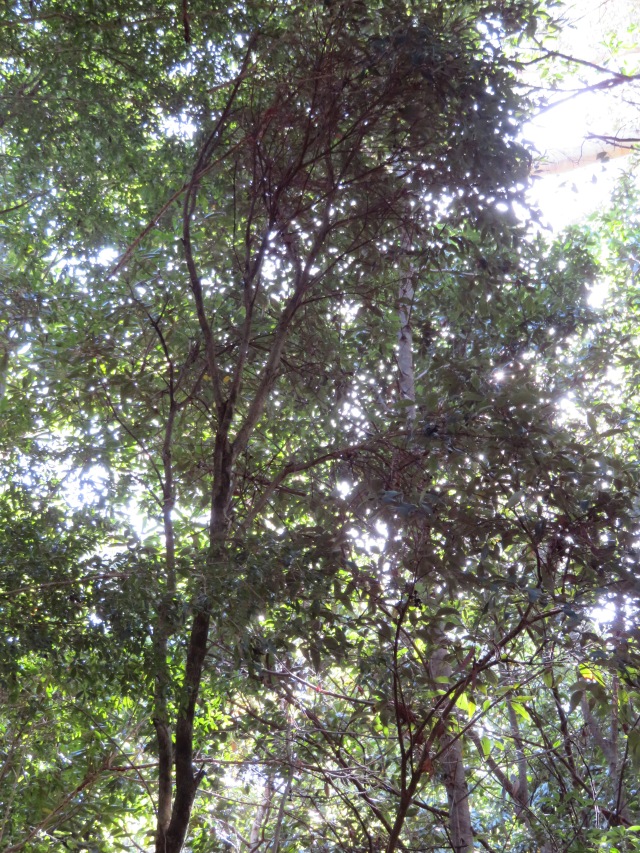
Diploglottis campbellii – yellow seed:
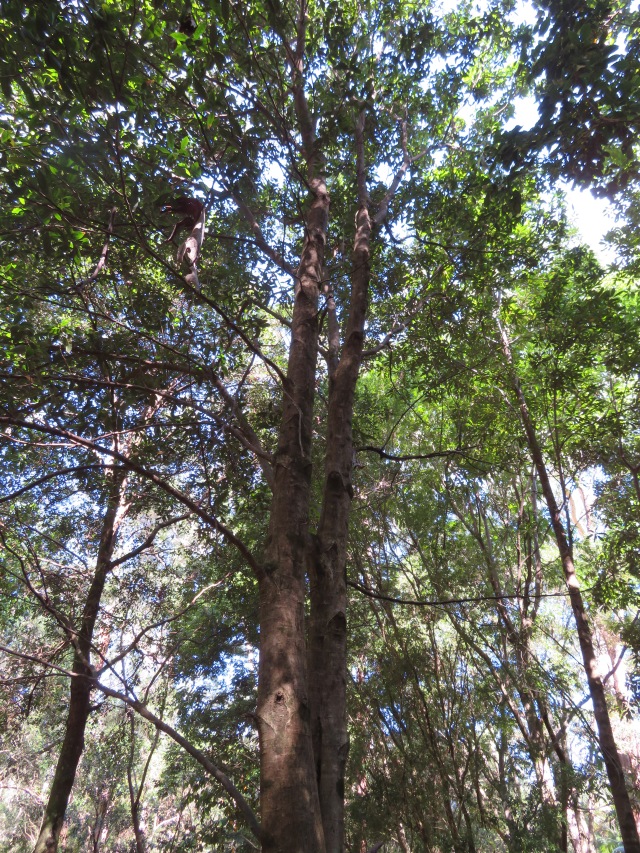
This is unusual, as this is a variation rather than a species. This tree usually produces red seeds, but a single tree discovered in the Tweed Valley produces yellow seeds instead.
Hairy Quandong, Elaeocarpus williamsianus:
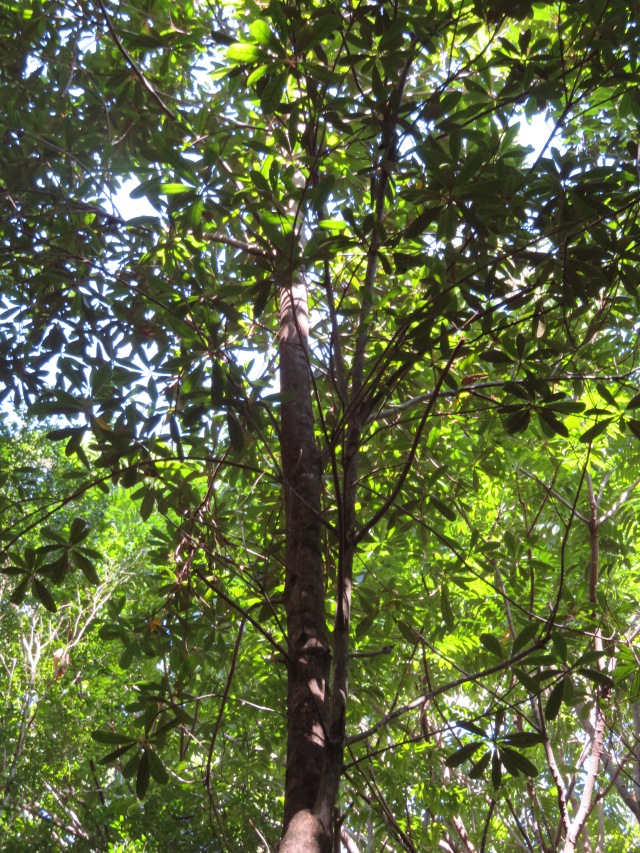
Only 100 plants are known in the wild at three locations in New South Wales. Only one of these locations is protected.
Large flowered white lilly pilly, Acronychia baeuerlenii:
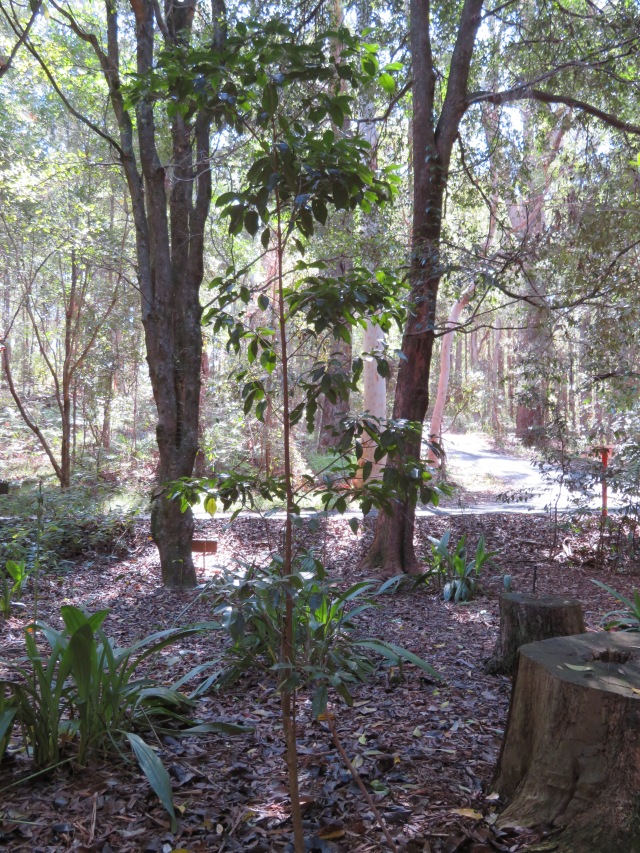
This is another one that’s only found at Mt. Warning.
Silky persimmon, Diospyros mabacea:
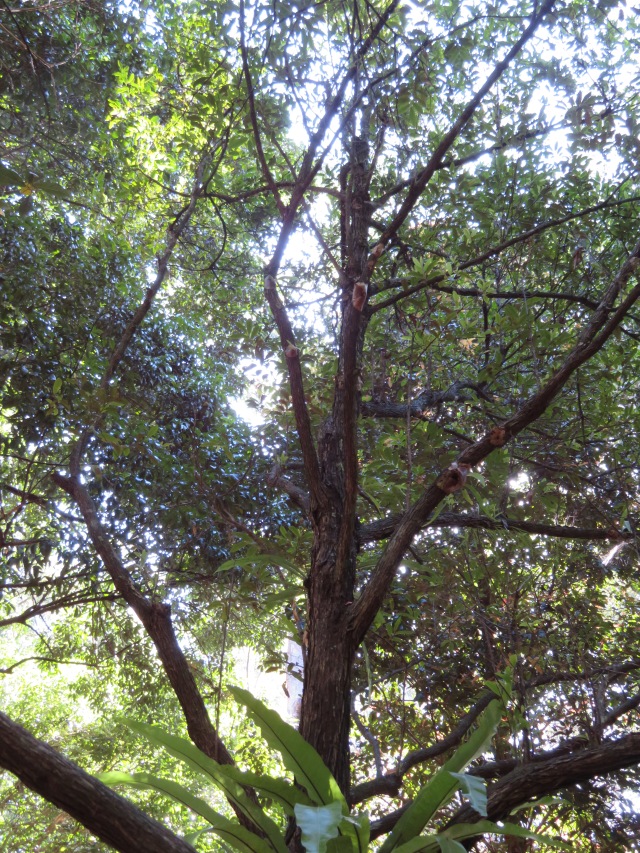
It was believed extinct in the wild for some time after the original habitat was cleared for development, but 11 trees have been found in the wild.
Dorrigo plum, Endiandra introrsa, only found in small areas east of Dorrigo:
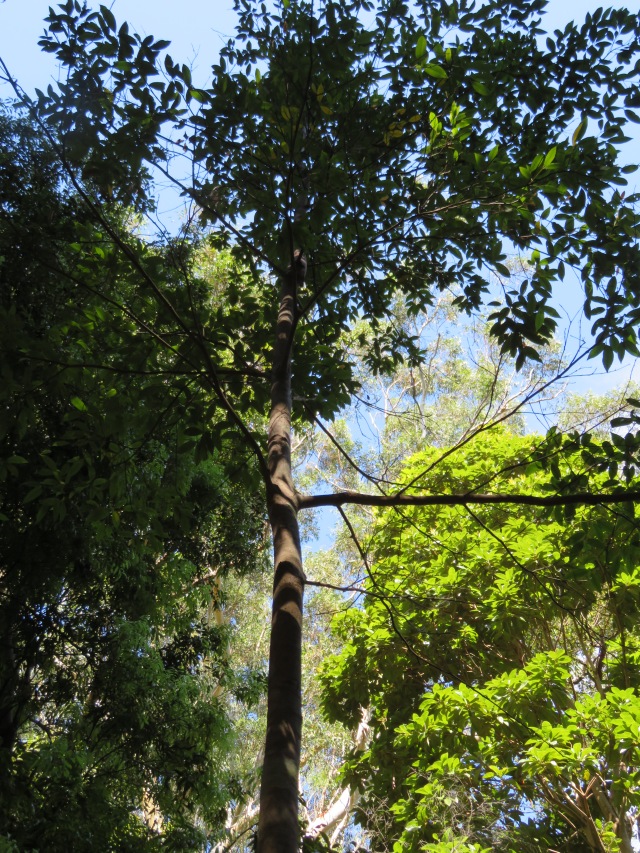
Marbled Baloghia, Baloghia marmorata:
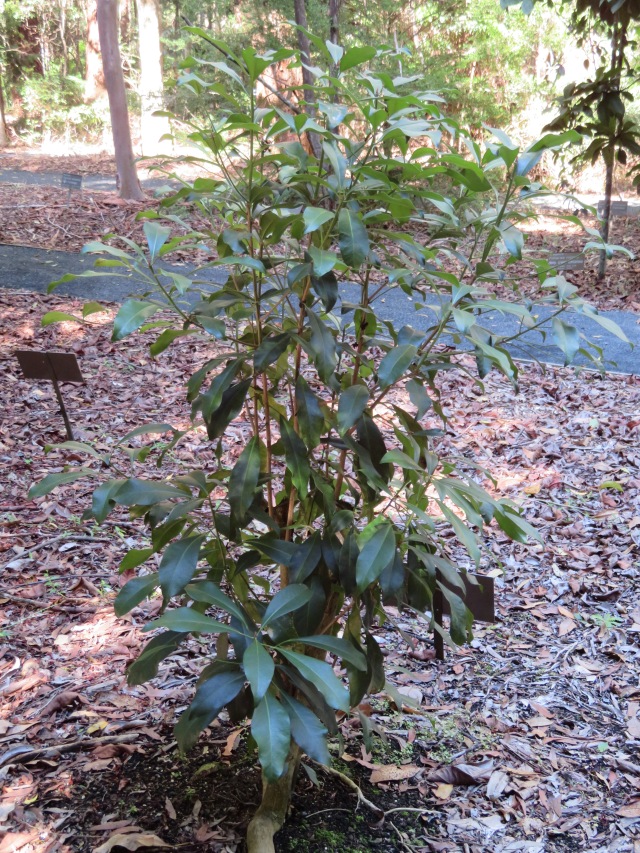
In the wild, this species is only found on Tamborine Mountain in Queensland and Victoria Park National Park in New South Wales.
Shiny-leaved coondoo, Planchonella eerwah:
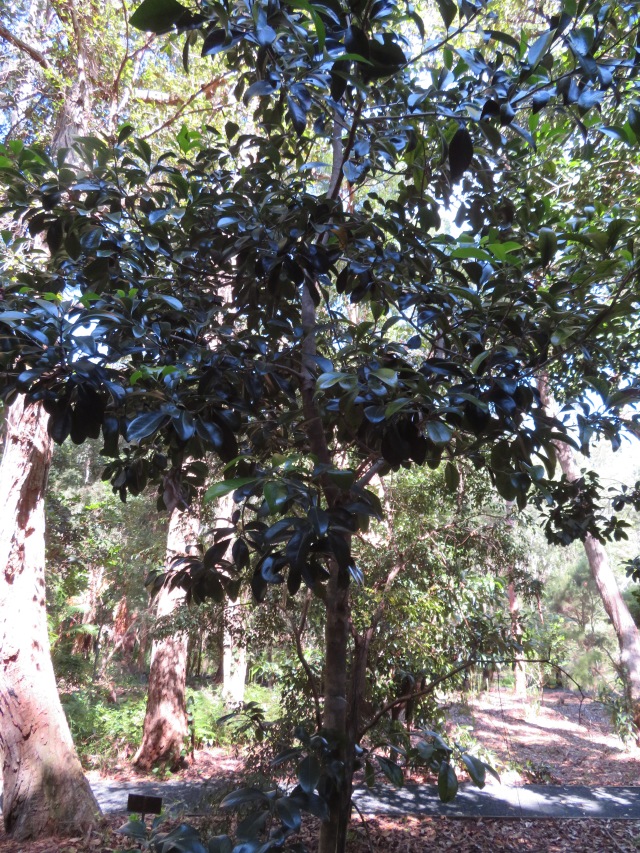
It was believed extinct, but was recently found in three locations in Queensland.
Cockspur flower, Plectranthus species ‘Star Ridge’, a new species recently discovered on Star Ridge in New South Wales:
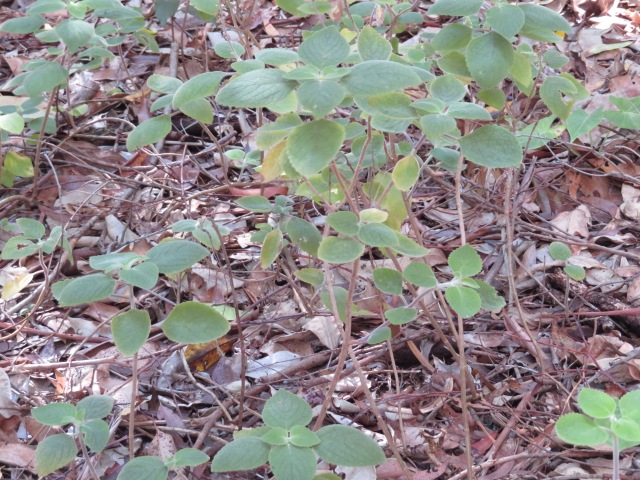
Giant Ironwood, Choricarpia subargentea, found in only two locations:
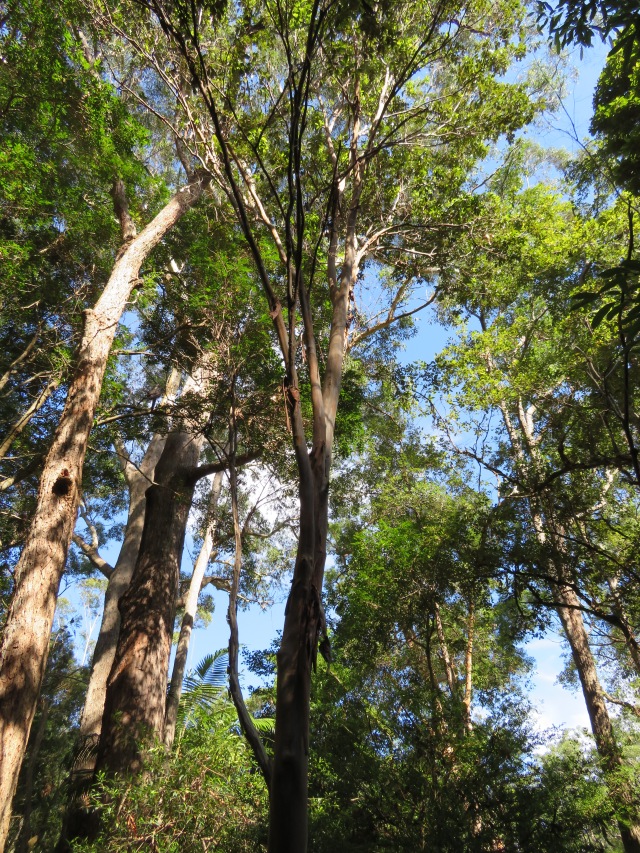
Water apple, Syzygium aqueum:
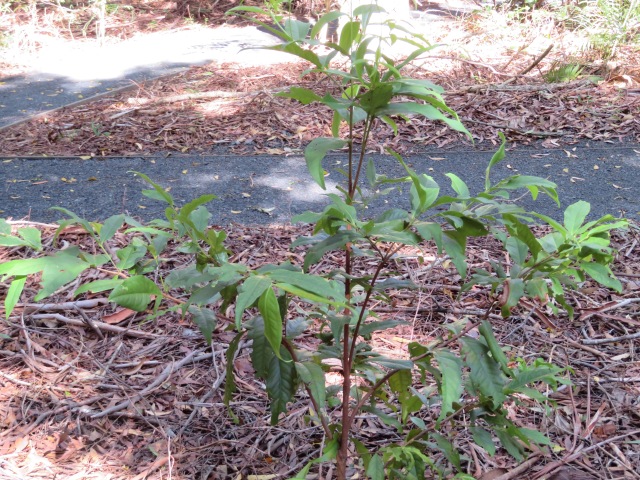
This one is an interesting case, in that it’s widespread in south-east Asia, but in Australia it can only be found around the Claudie River at Cape York.
Mt Tozer Baeckea, Babingtonia tozerensis:
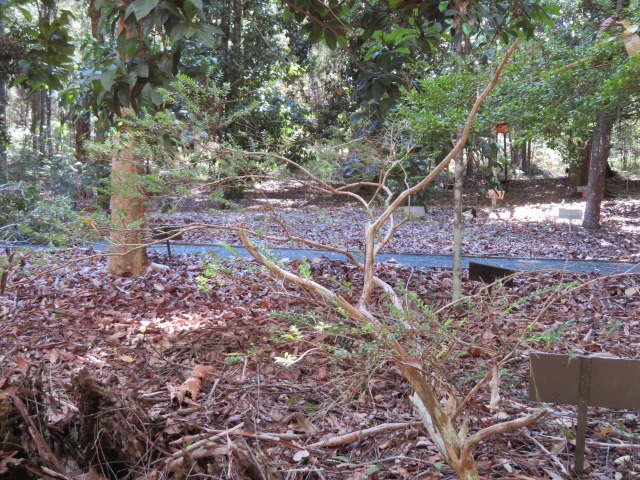
As the name implies, this one is found only at Mt. Tozer, which is part of the Iron Range in north Queensland.
Uromyrtus metrosideros, which is found at only a few sites in north Queensland, and not common enough to have a common name:
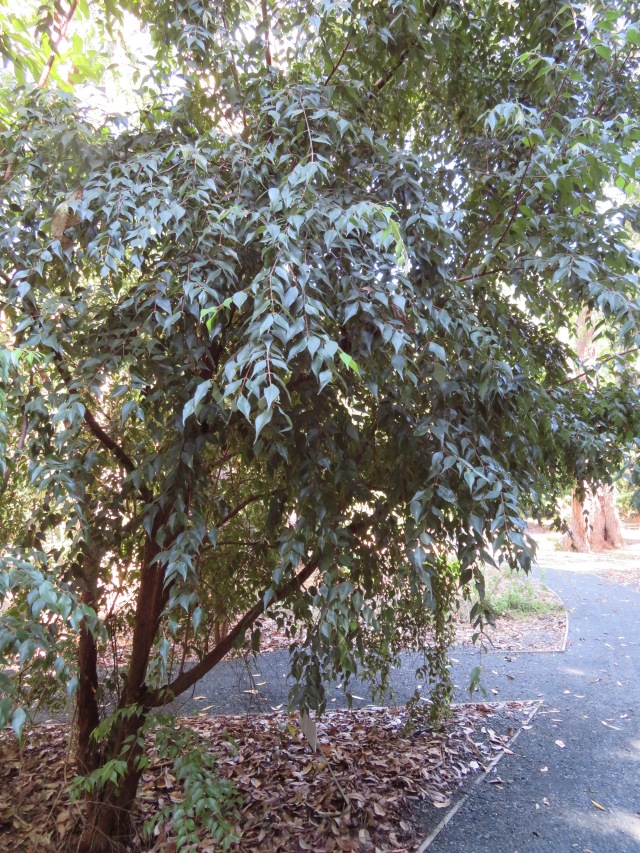
The blackdown zamia palm, which got the sign taken in the picture so you can read about it for yourselves:
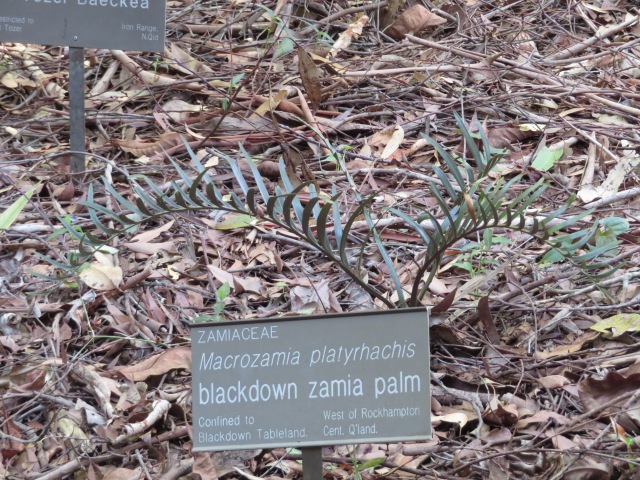
Peach myrtle, Uromyrtus australis, found only in 5 hectares of the Nightcap Range:
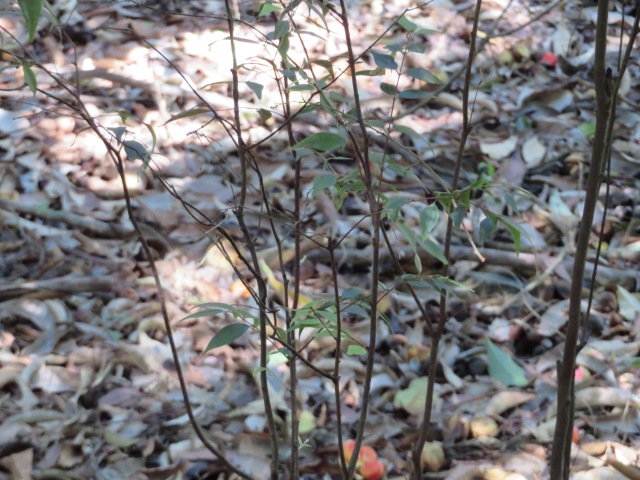
Mark’s Cassia, Cassia brewsteri var. marksiana: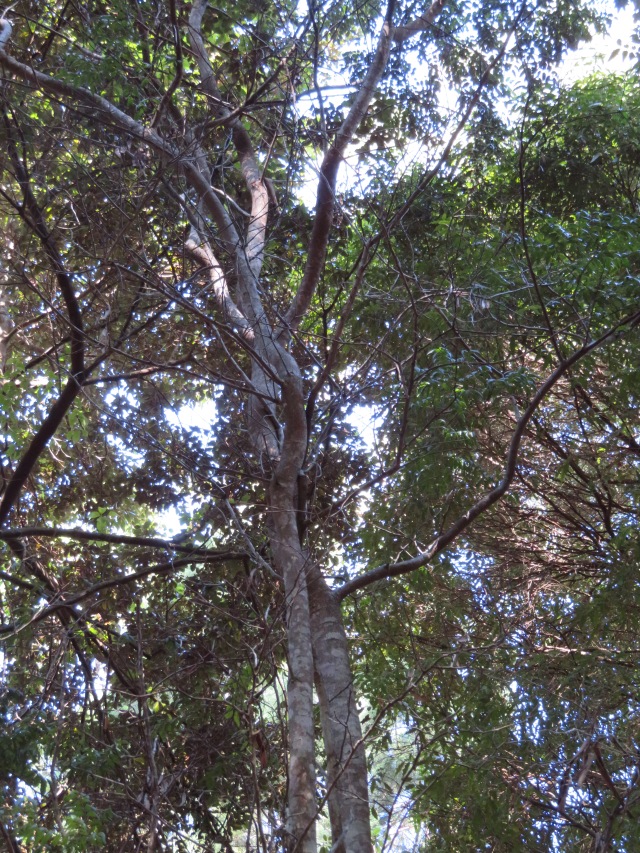
This is another one that had most of its habitat cleared for farming. Now, there are only about 60 trees left in the wild.
Soft Grevillea, Grevillea mollis, found only in the granite soils of the Gibraltar Range in New South Wales:
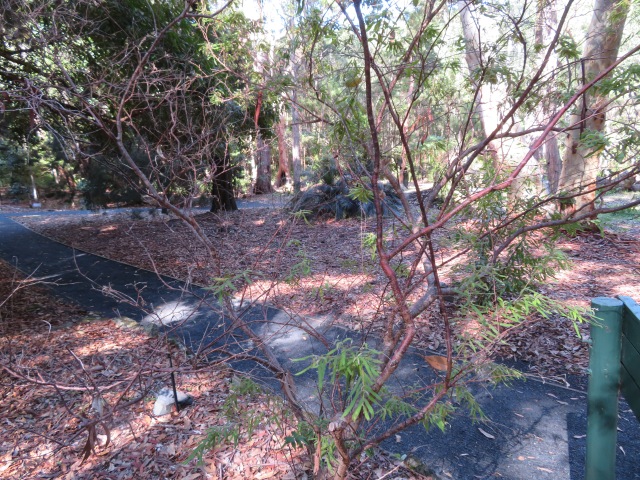
Roaring Meg Hollandaea, Hollandaea riparia:
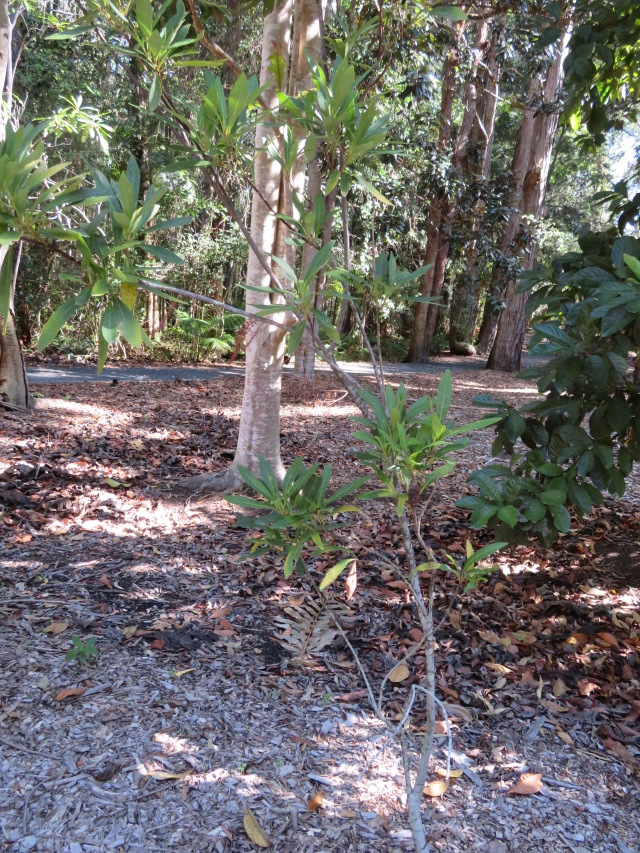
Another one of those ‘single location’ plants, this one is only found at Roaring Meg Creek, near Cooktown.
Hey’s Macadamia Nut, Catalepidia heyana:
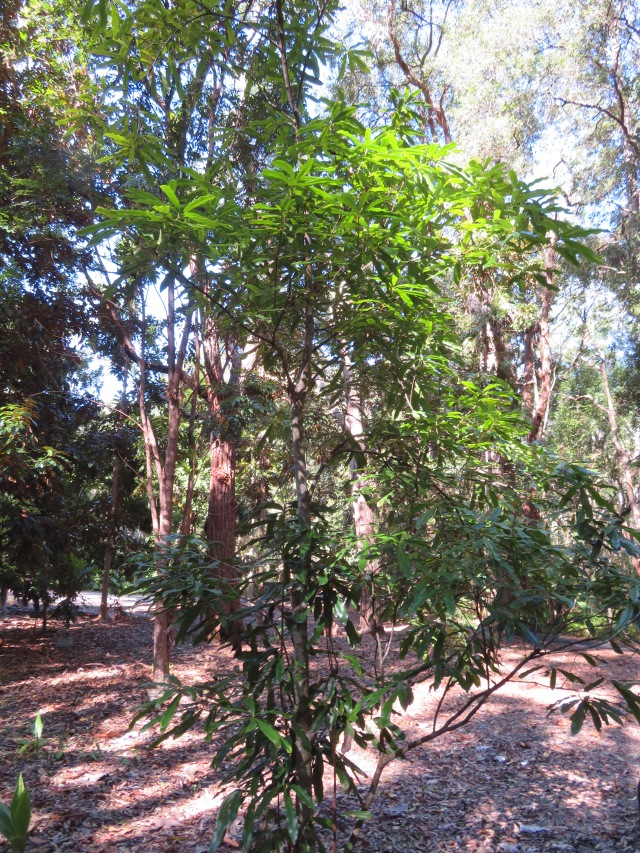
This one is only found in a few small pockets in Queensland, with its closest relatives found in Africa.
Noah’s Oak, Buckinghamia ferruginiflora, found only around the Roaring Meg and Noah’s Creeks:
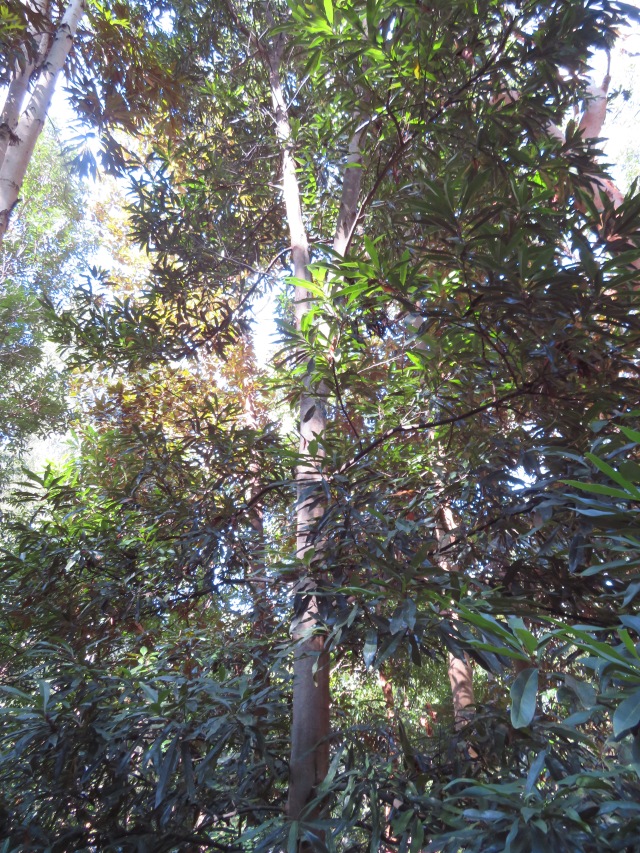
Pretty crazy how many plants have such a tiny distribution. It makes you wonder how many other species lived in little pockets and were just cleared away entirely. Australia is particularly prone to rare species with a limited distribution, because many of our trees have seeds that don’t spread far, but pollen that does. Essentially, when the environment changes, the survival strategy isn’t for the offspring to find more favourable climes, but to cross-breed wildly and hope some of the offspring are suited to the new habitat. This means Australia has a lot of really rare trees with a tiny distribution.
At this point, I started making my way back to the car park, via a different route than the one I took in. I went past the swamp forest, which had a lot of paperbarks:
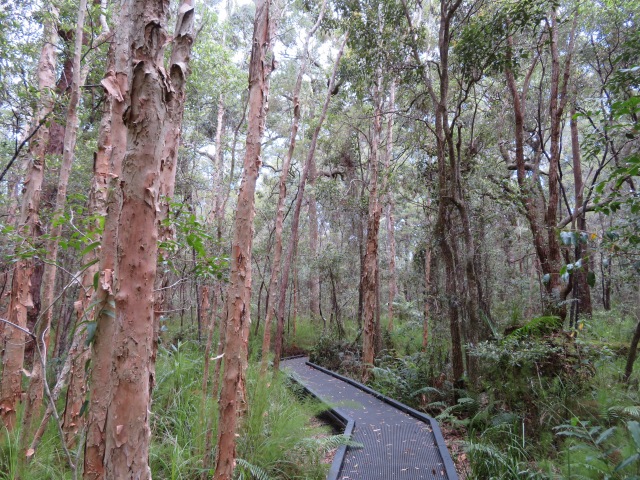
I spotted some female satin bowerbirds in the trees on the way:
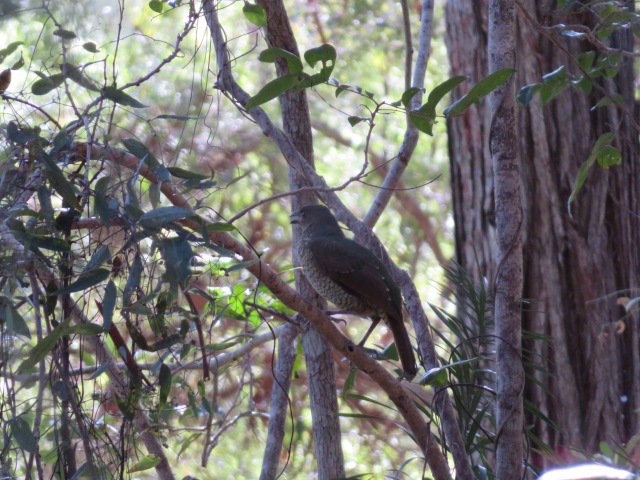
I also took some more flower photos – these are Azaleas:
I stopped by the waterwise garden:
And I managed to spot this insect, though I have no idea what it is – some kind of fly?
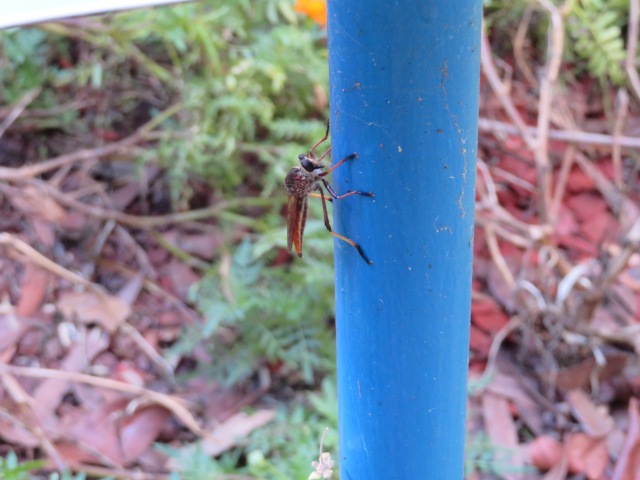
I also found a land mullet on one of the paths:
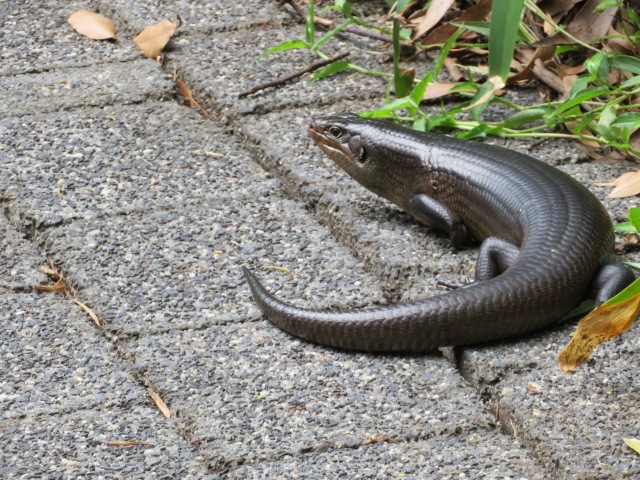
Now, there were a lot of fallen trees in the gardens, and I found this one particularly interesting:
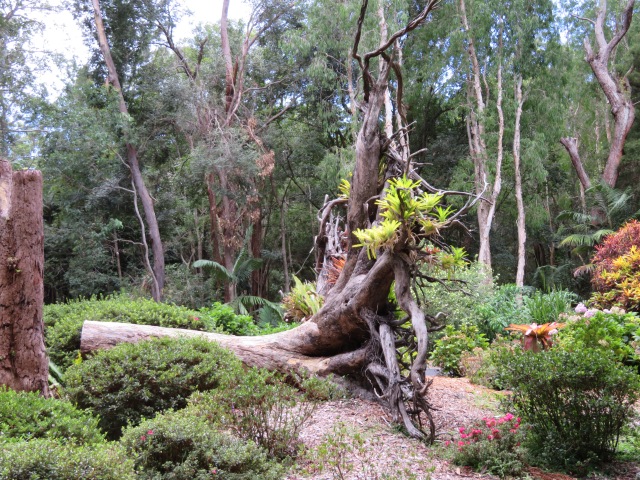
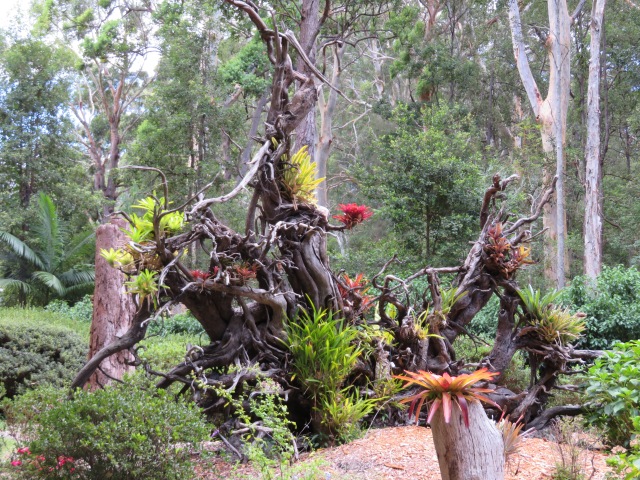
I just thought it was clever, that instead of lugging away the uprooted stump of what must have been a truly enormous tree, they turned it into a bromeliad display instead.
At this point, it was quite late in the day, so I headed off back to Turtle Shell. Tomorrow, I’ll check out the butterfly house!






















Great tour of the gardens. Love your commentary- it makes for more interesting reading.
LikeLike
No one wants to read just a boring list of plants species and pictures, right?
LikeLike